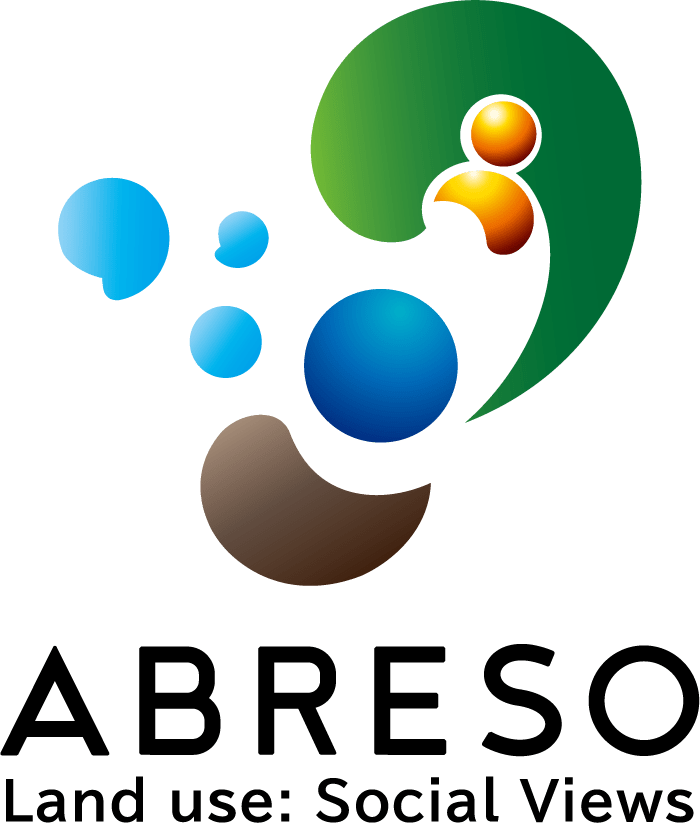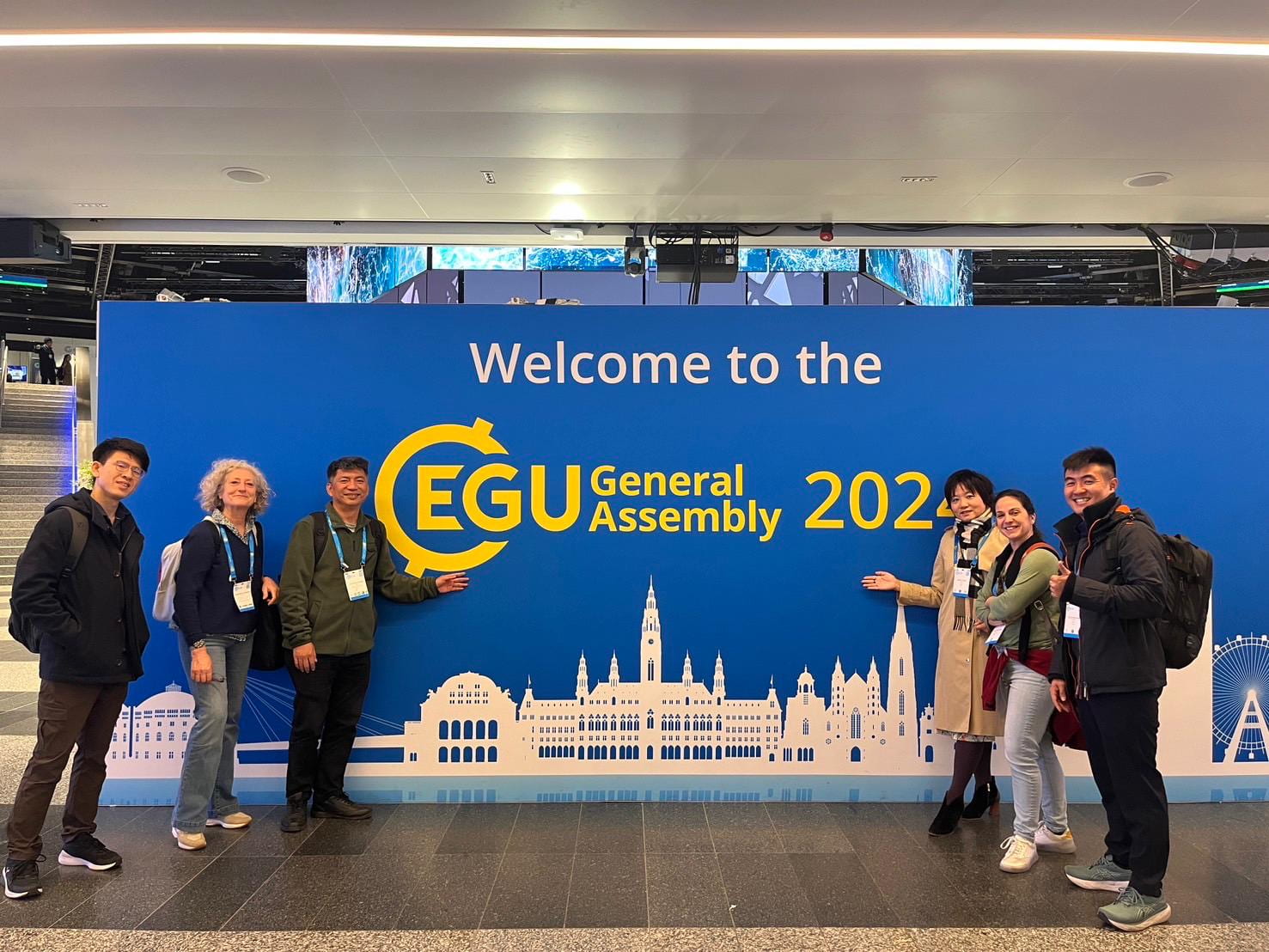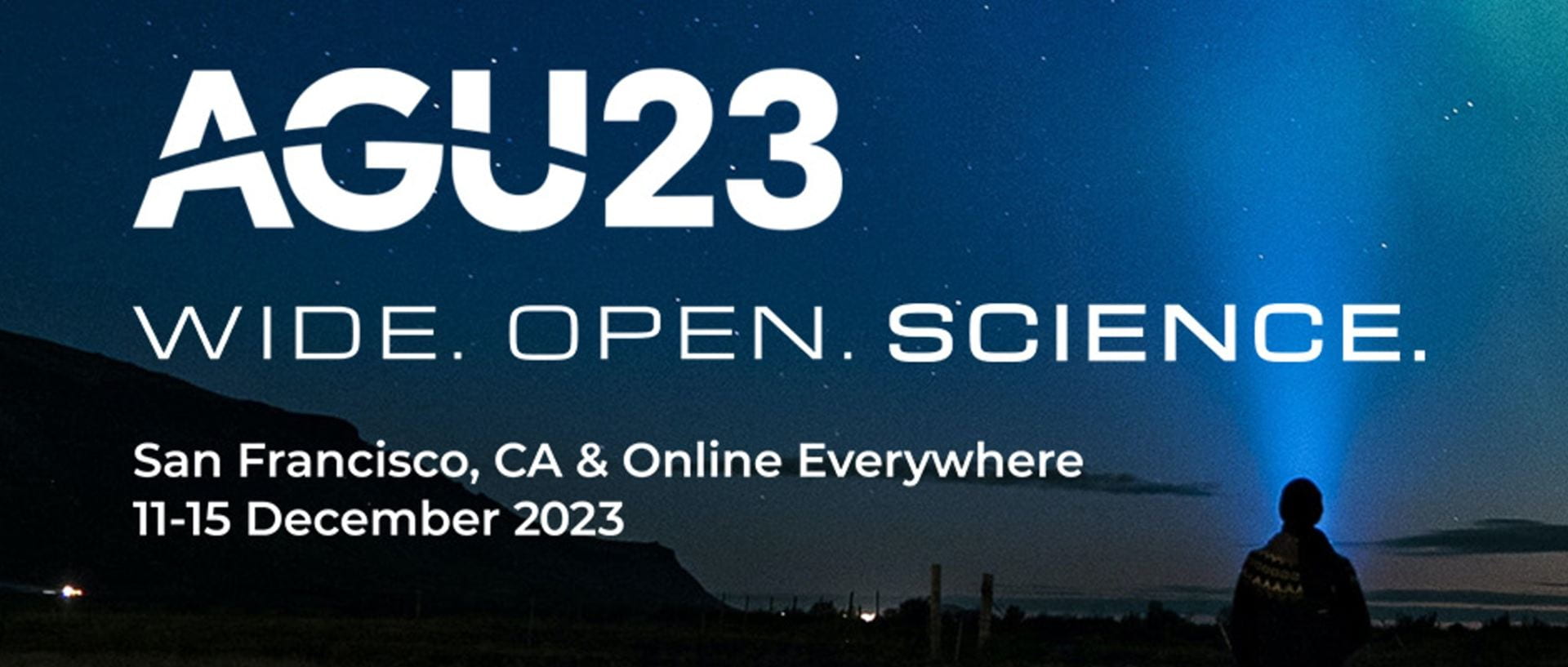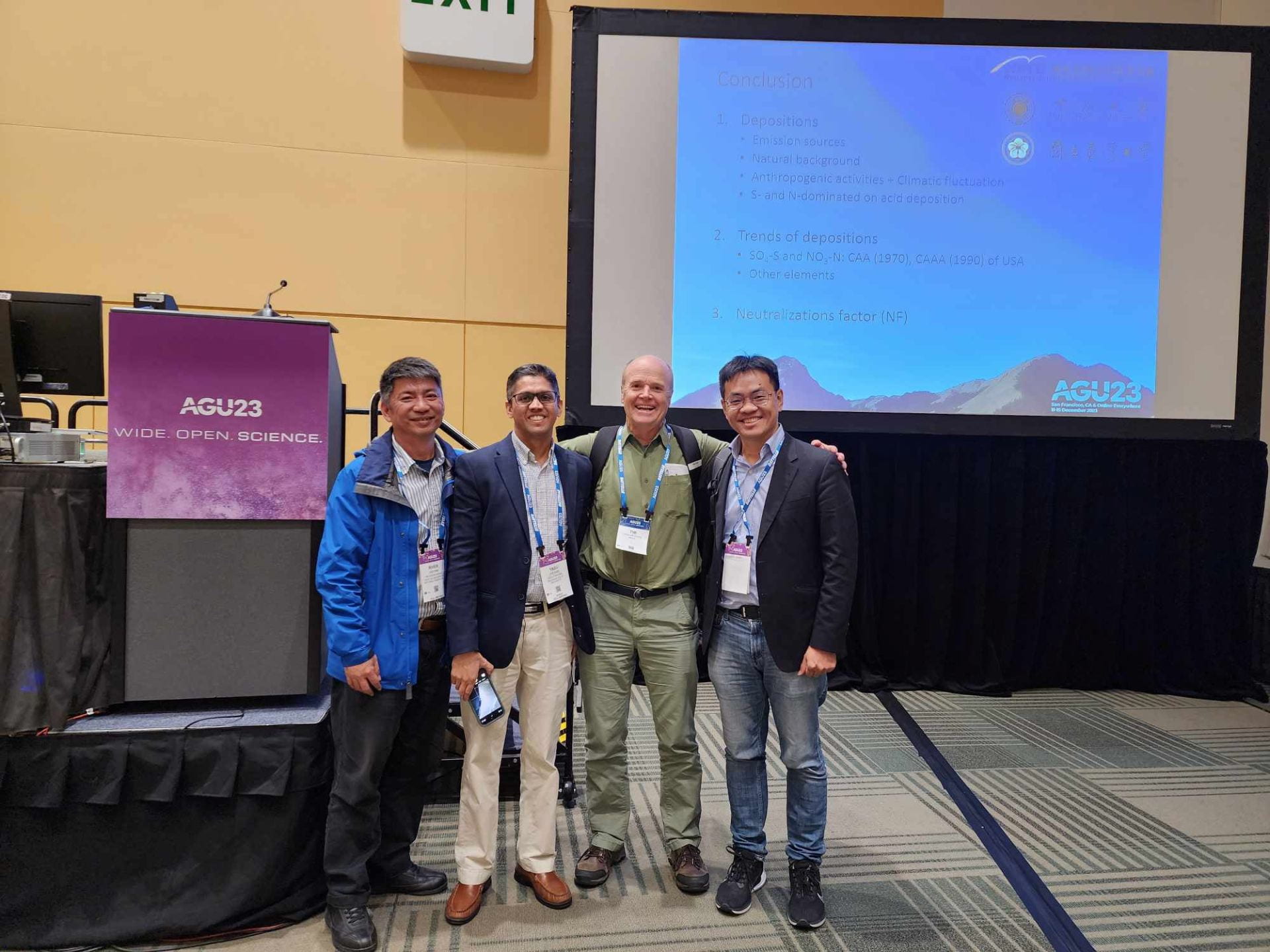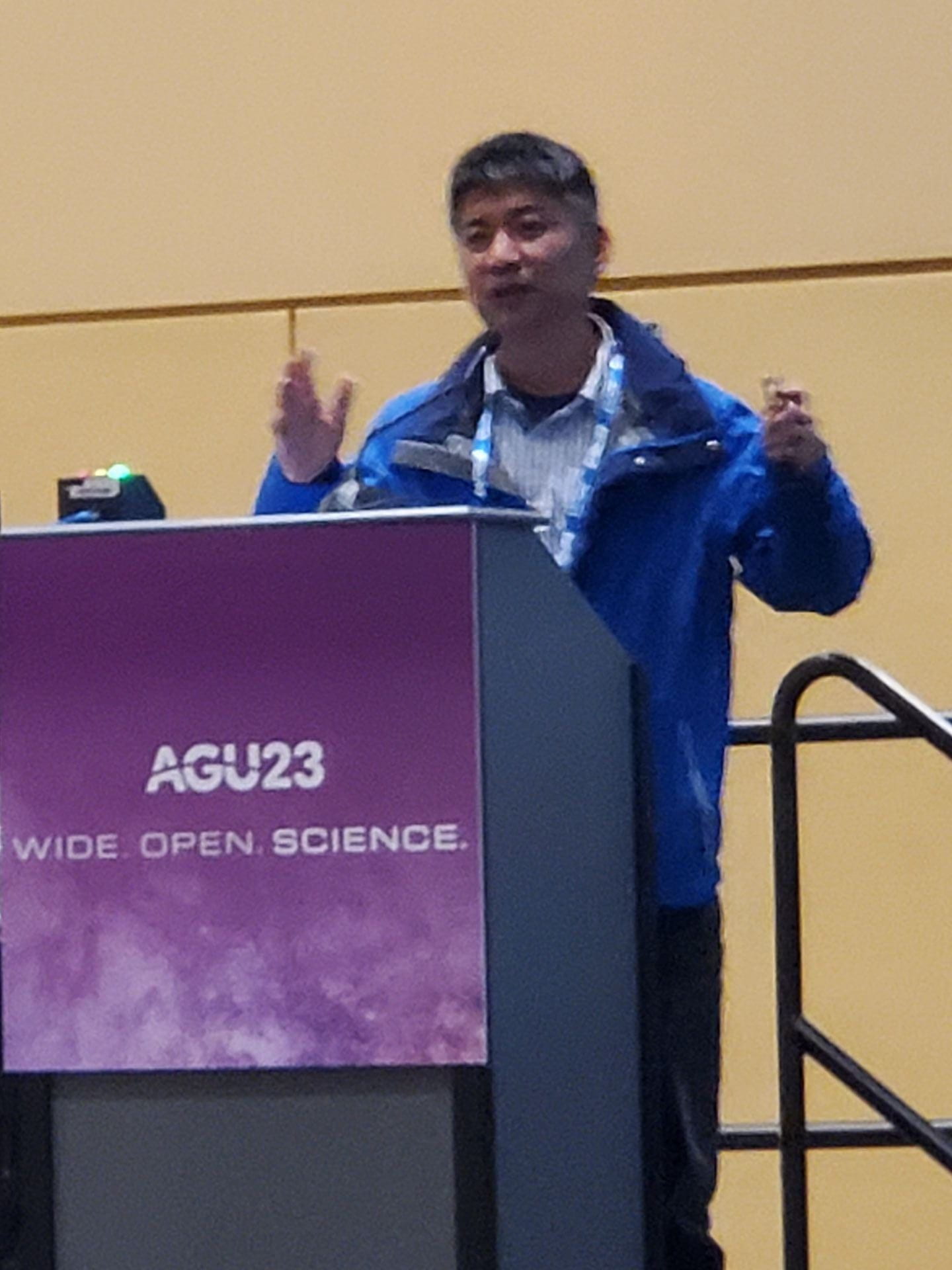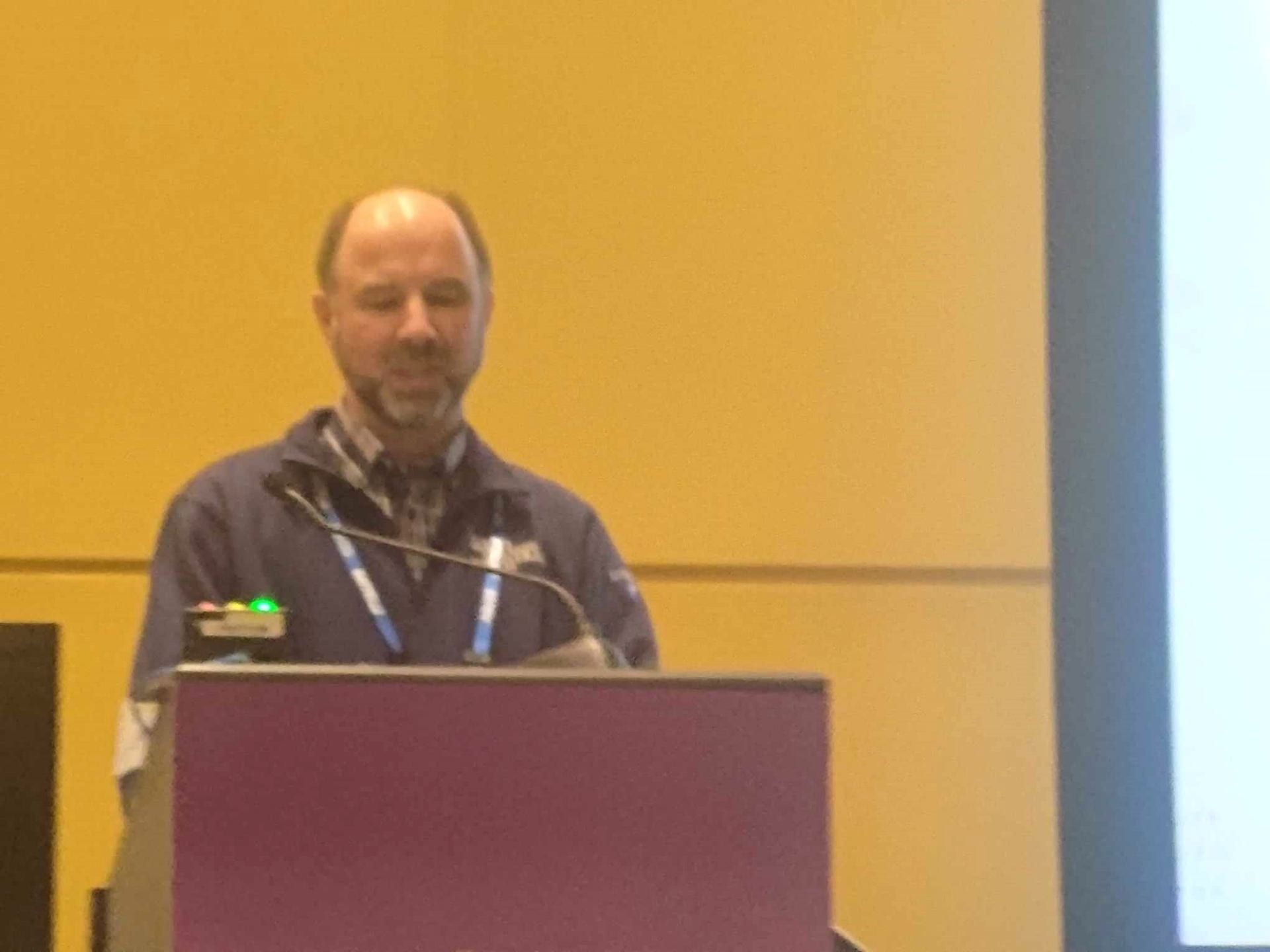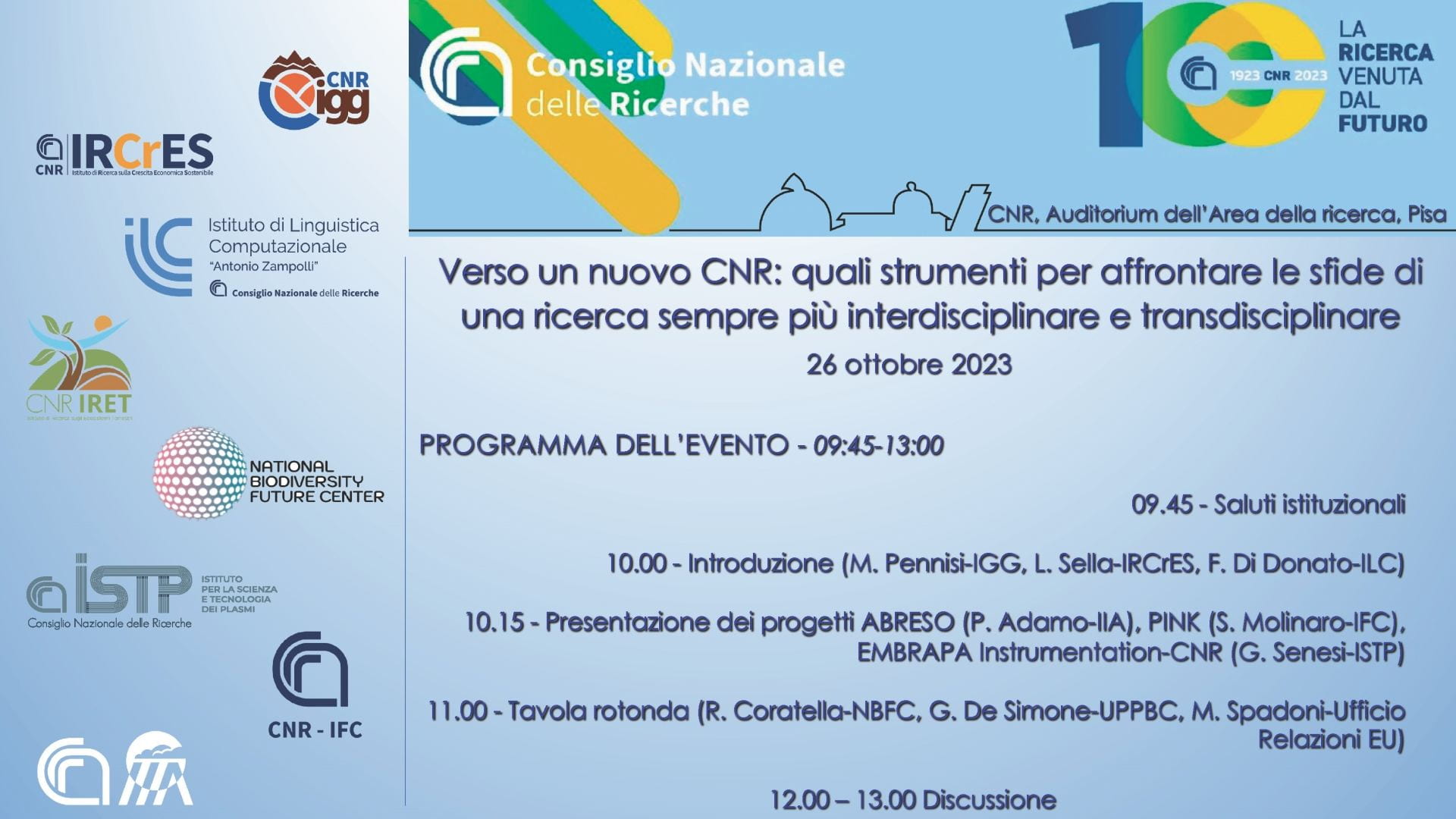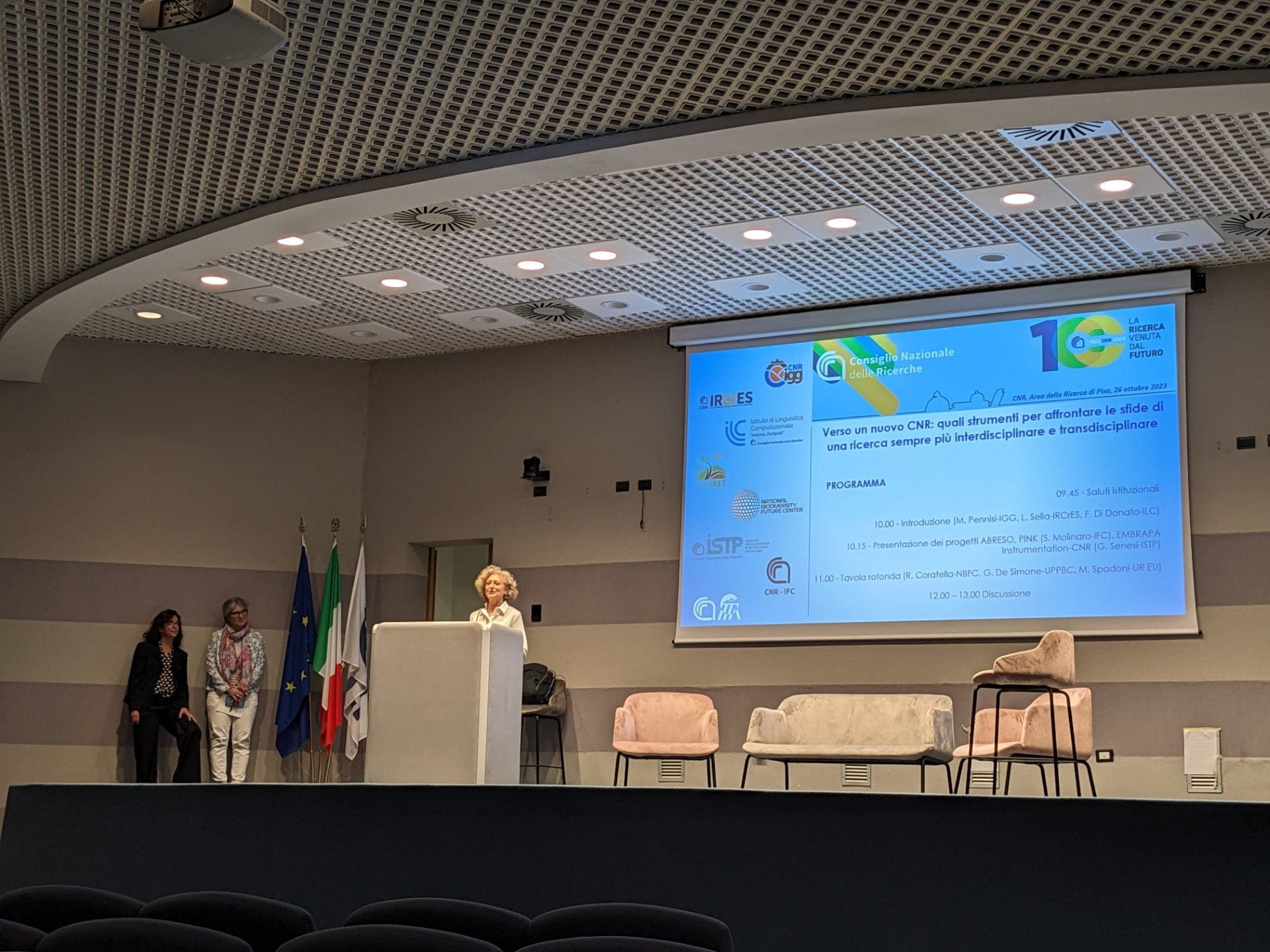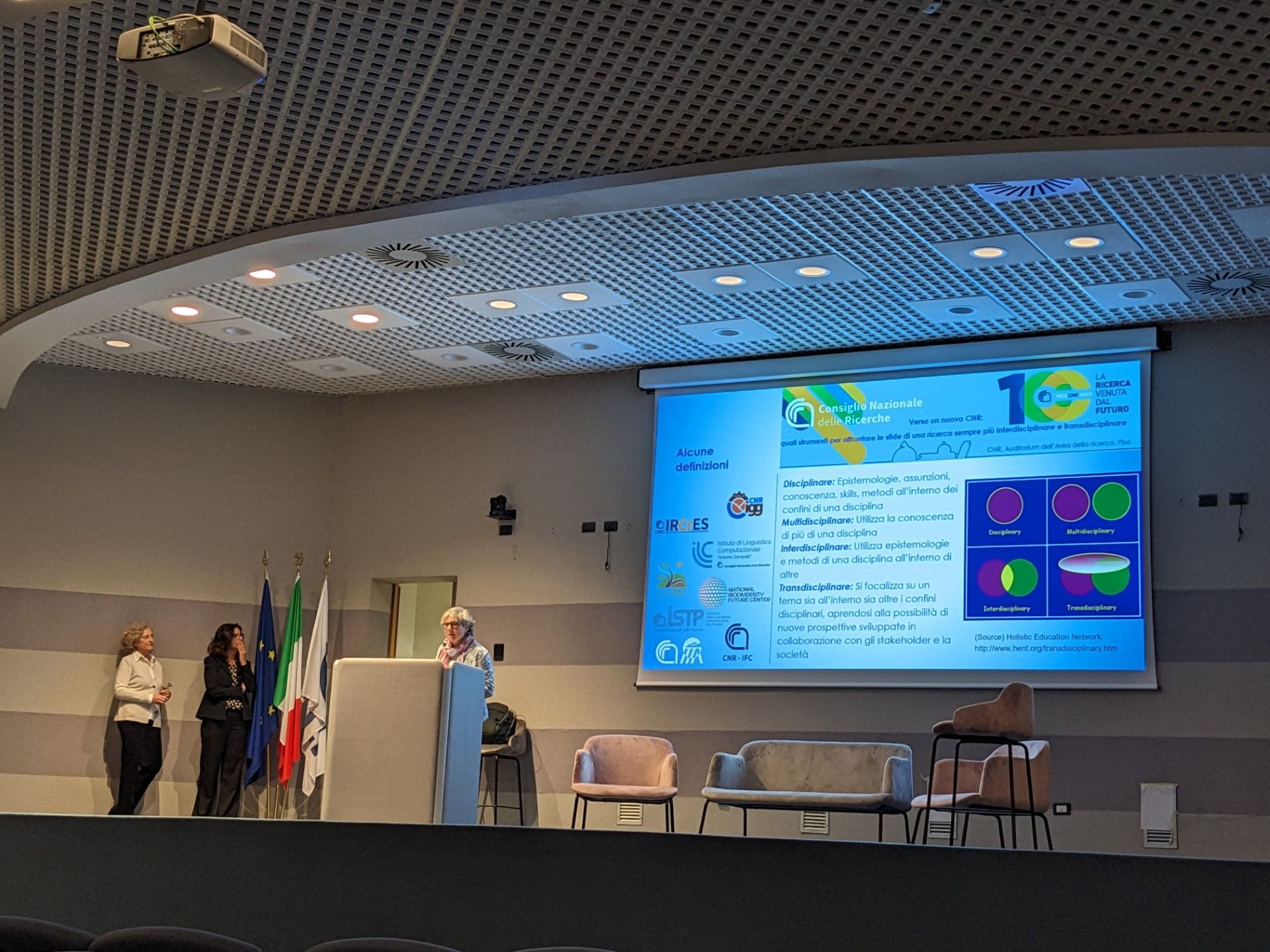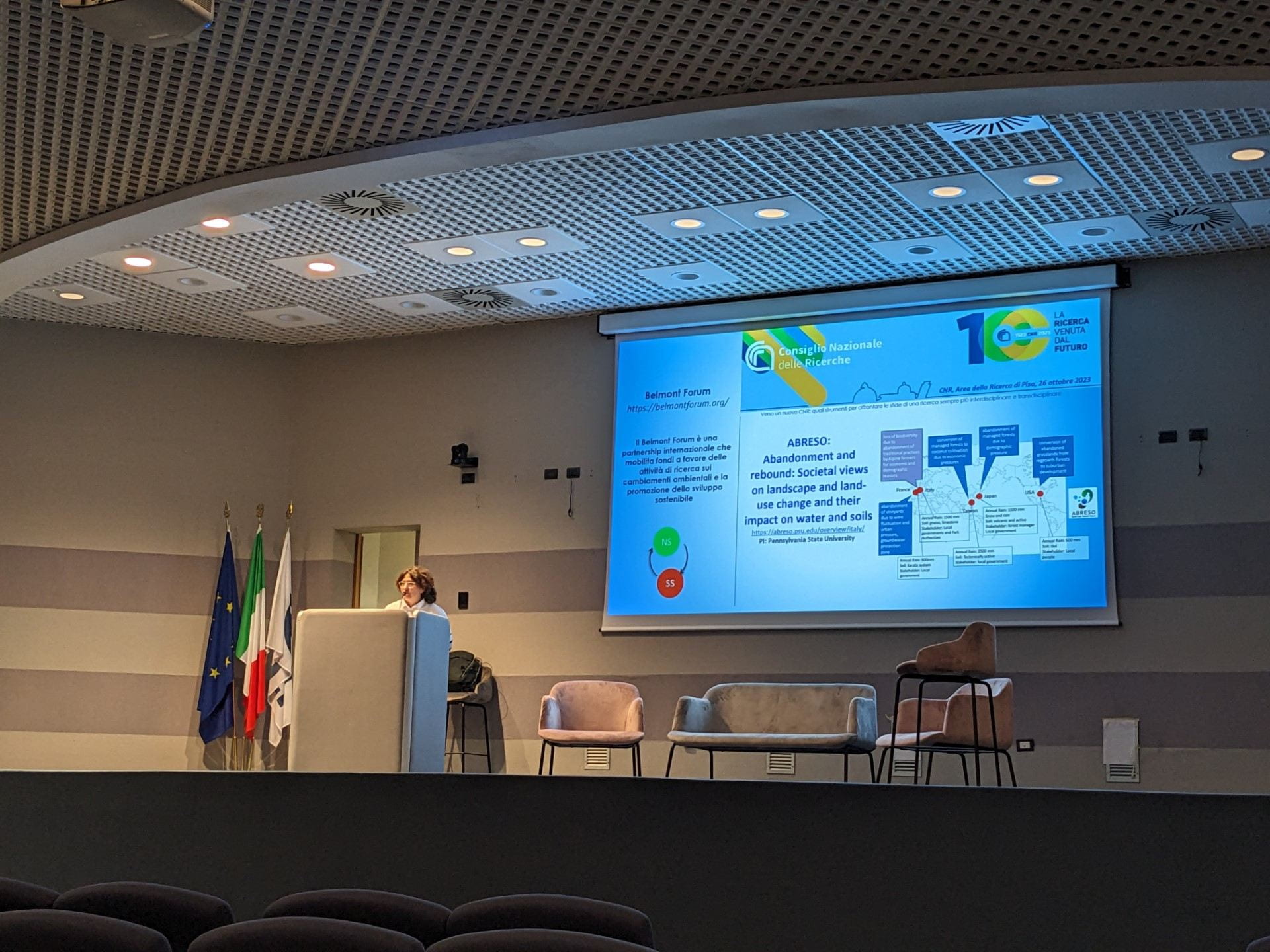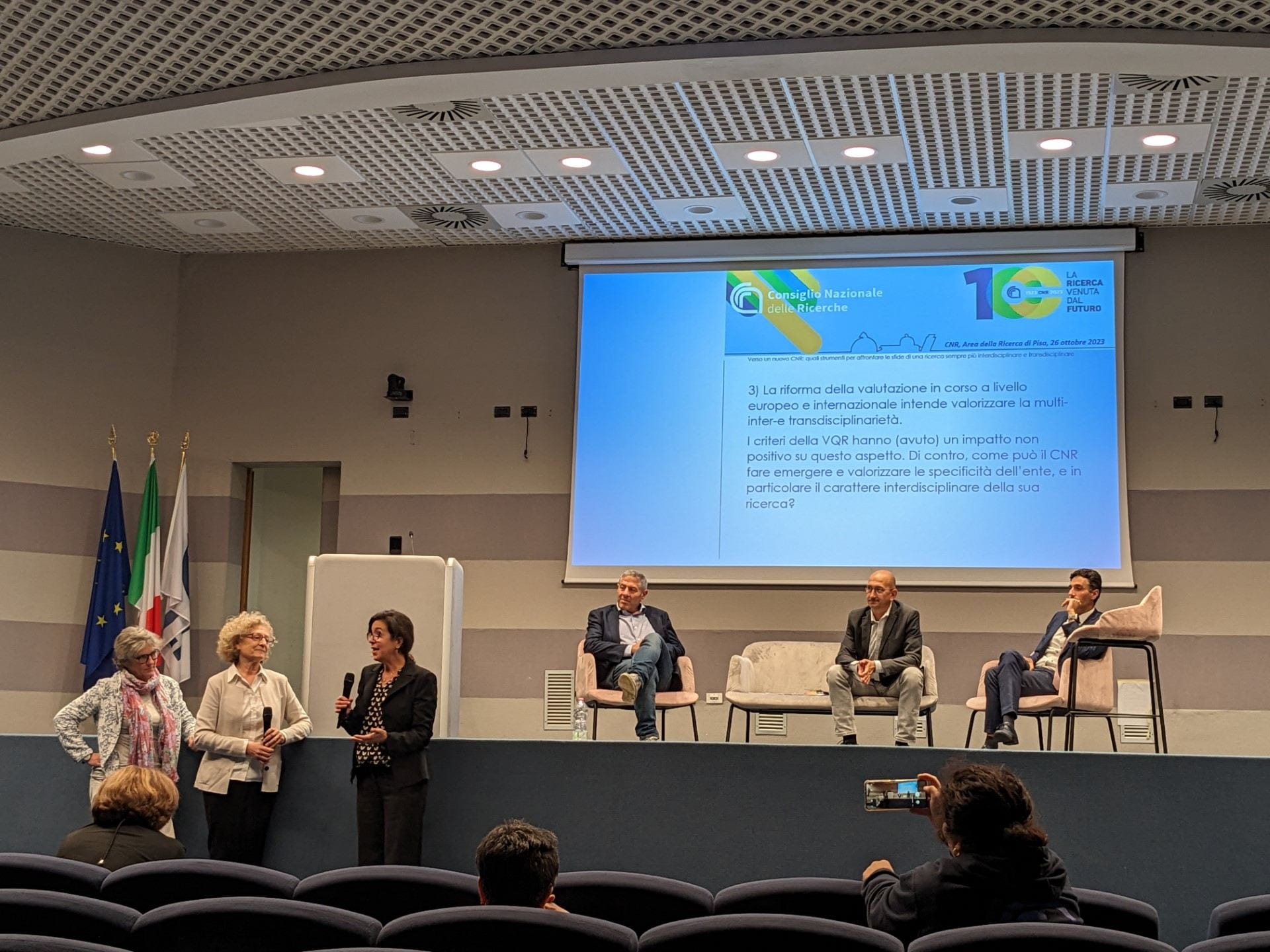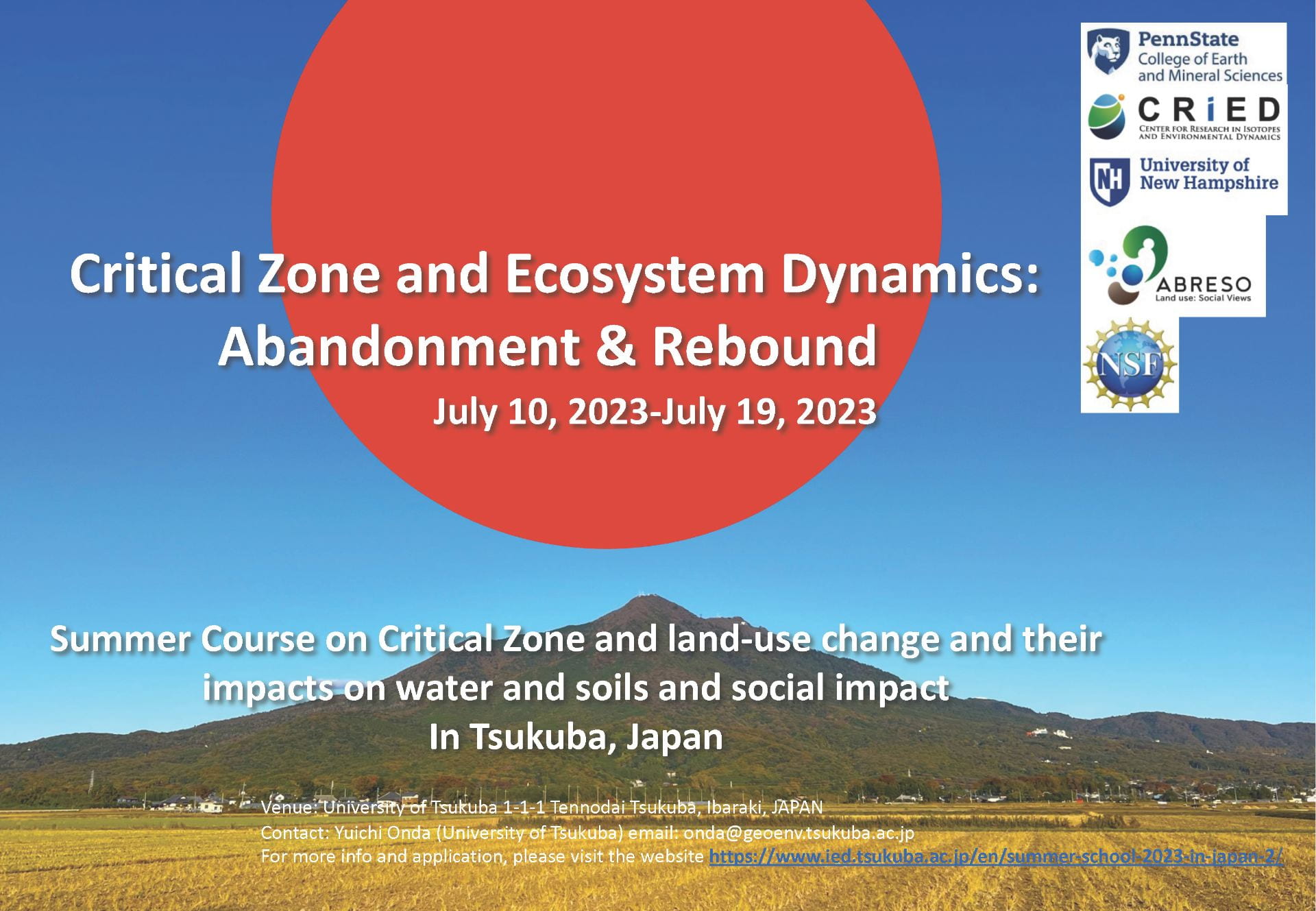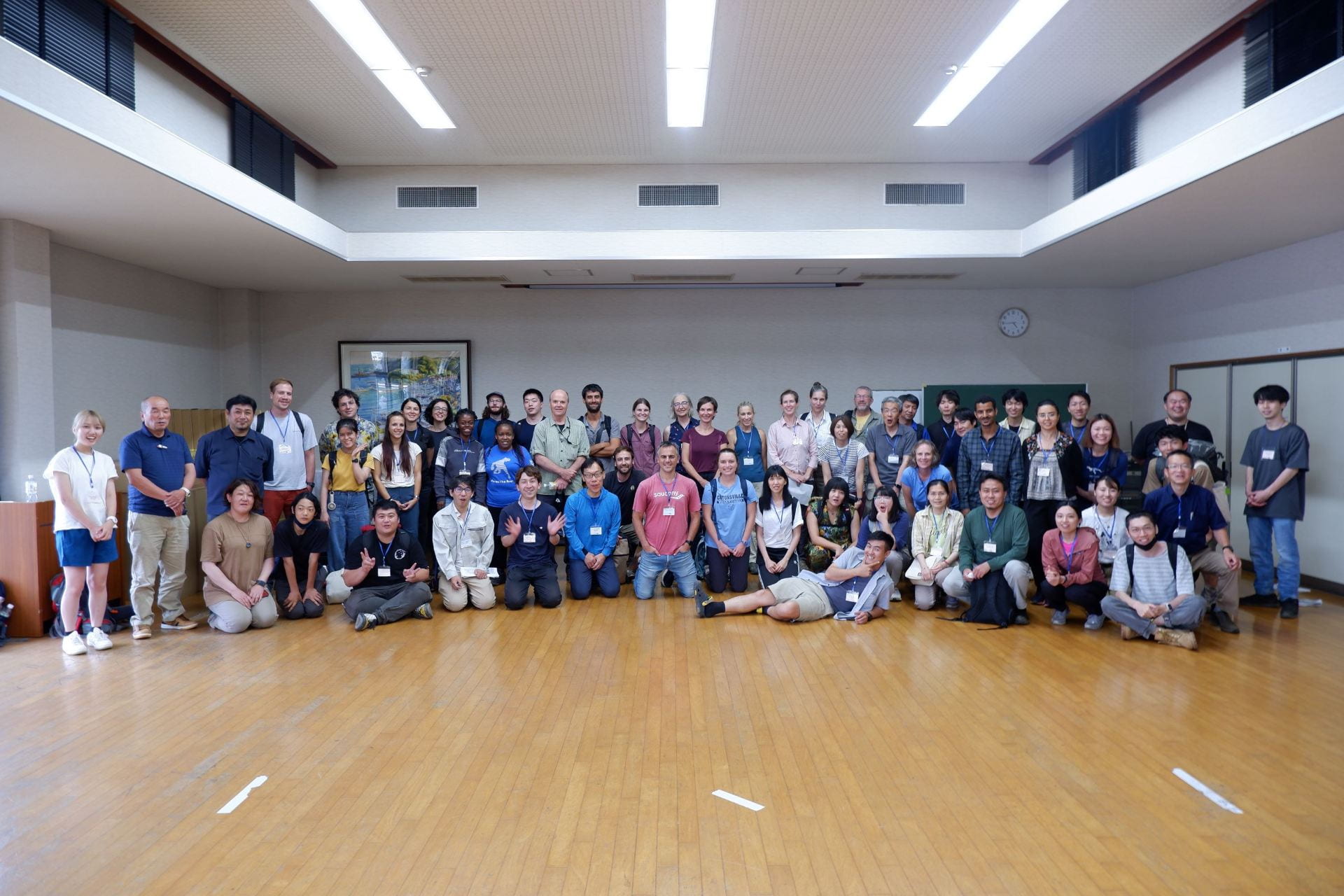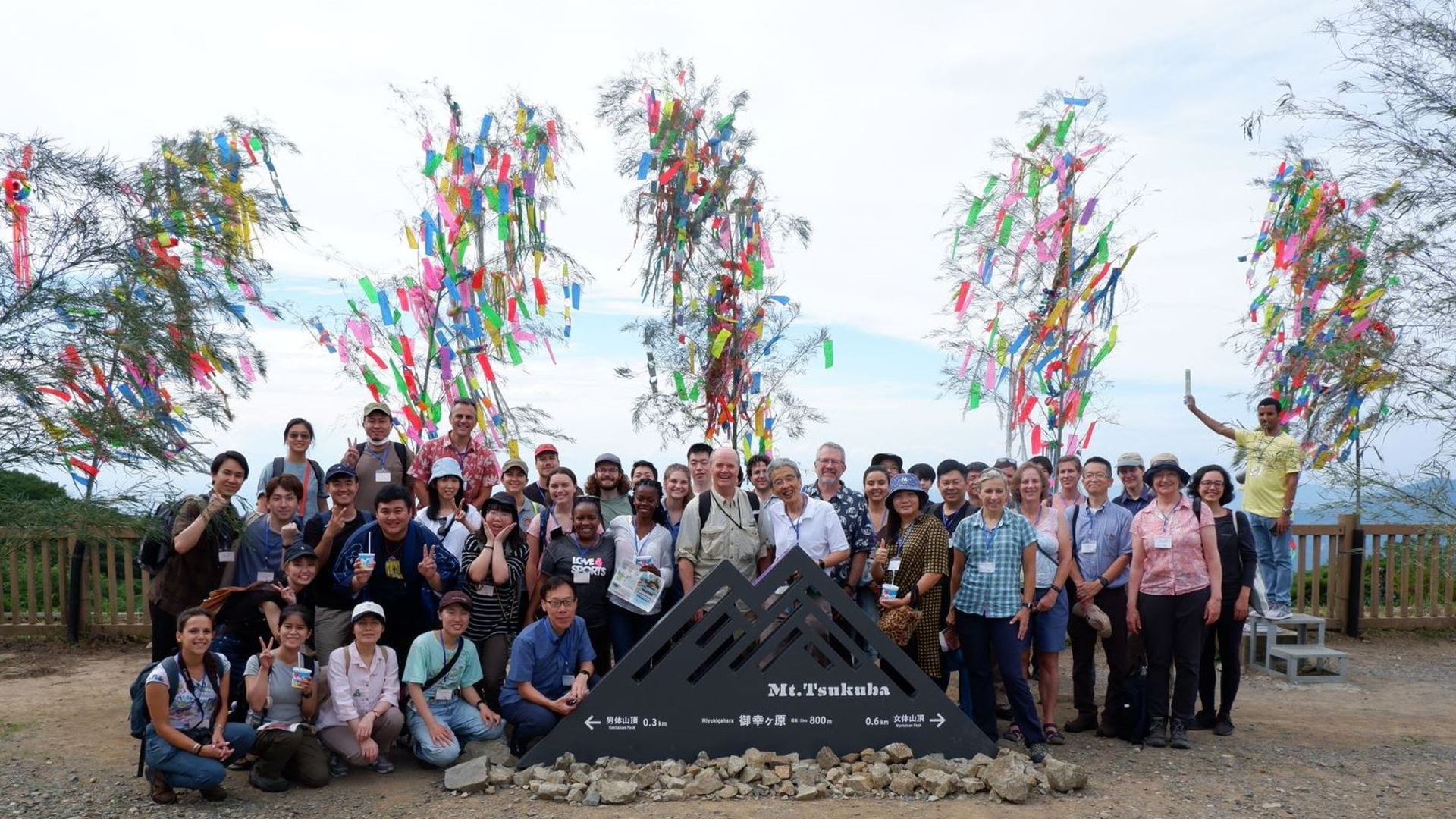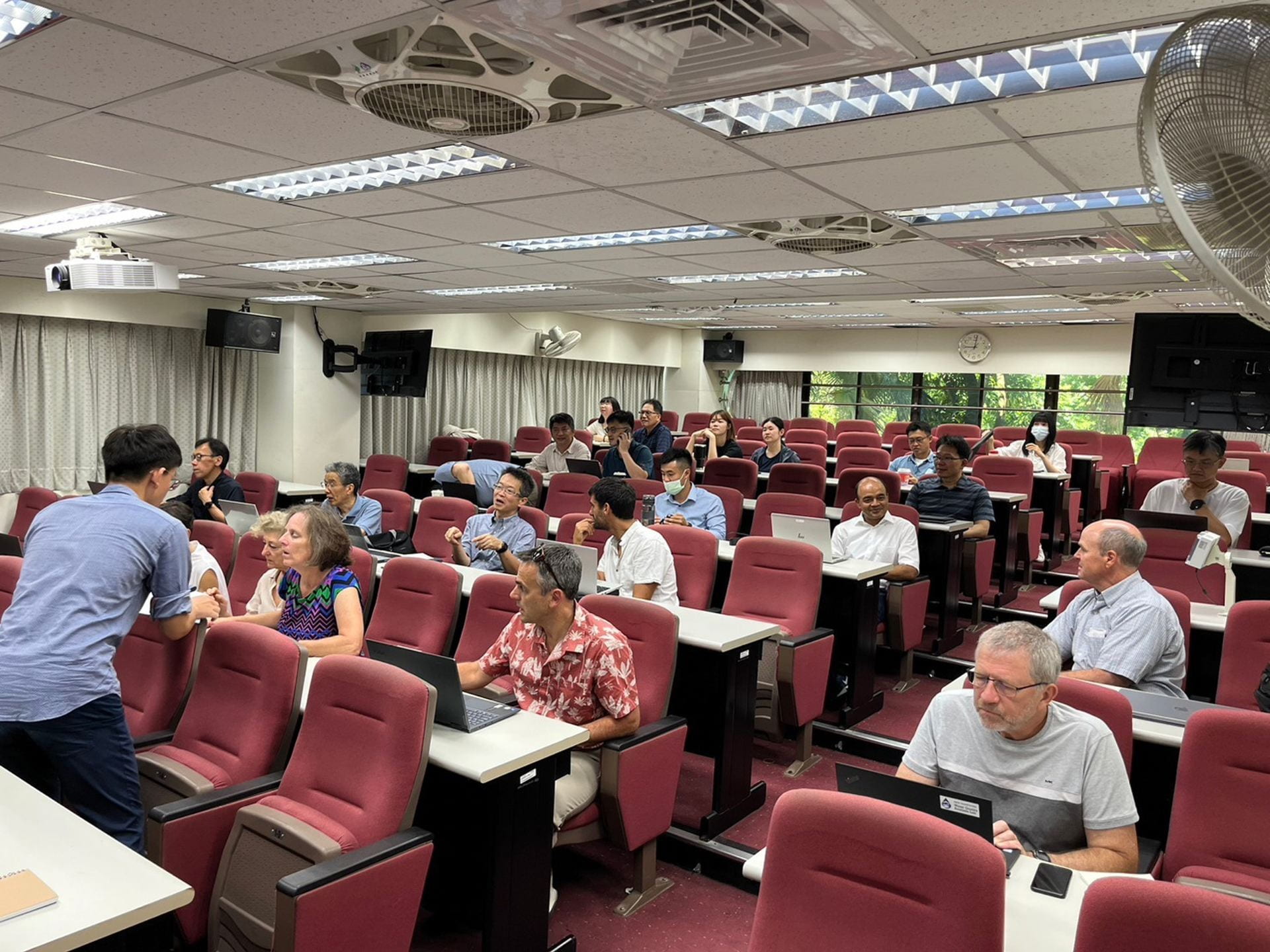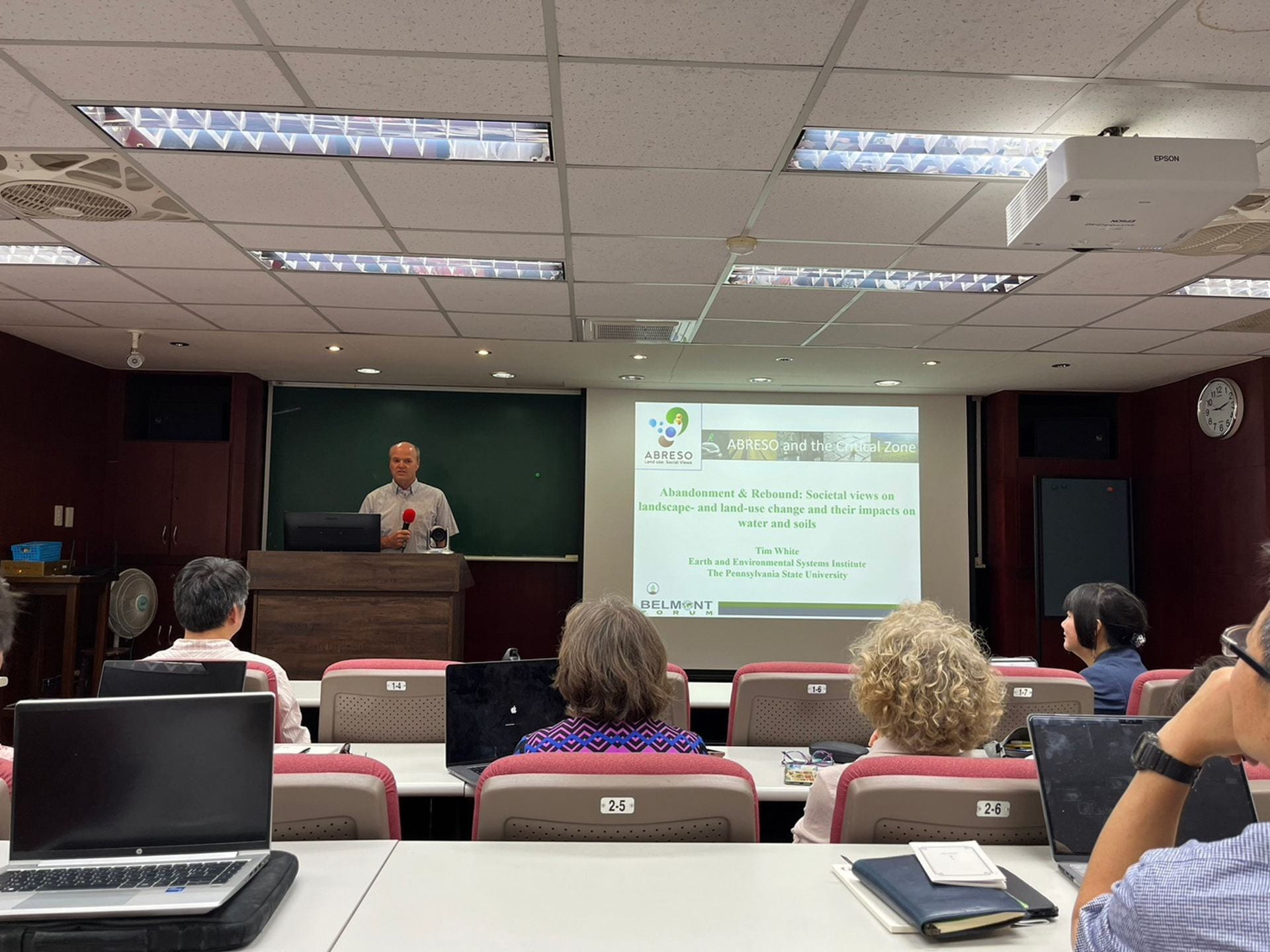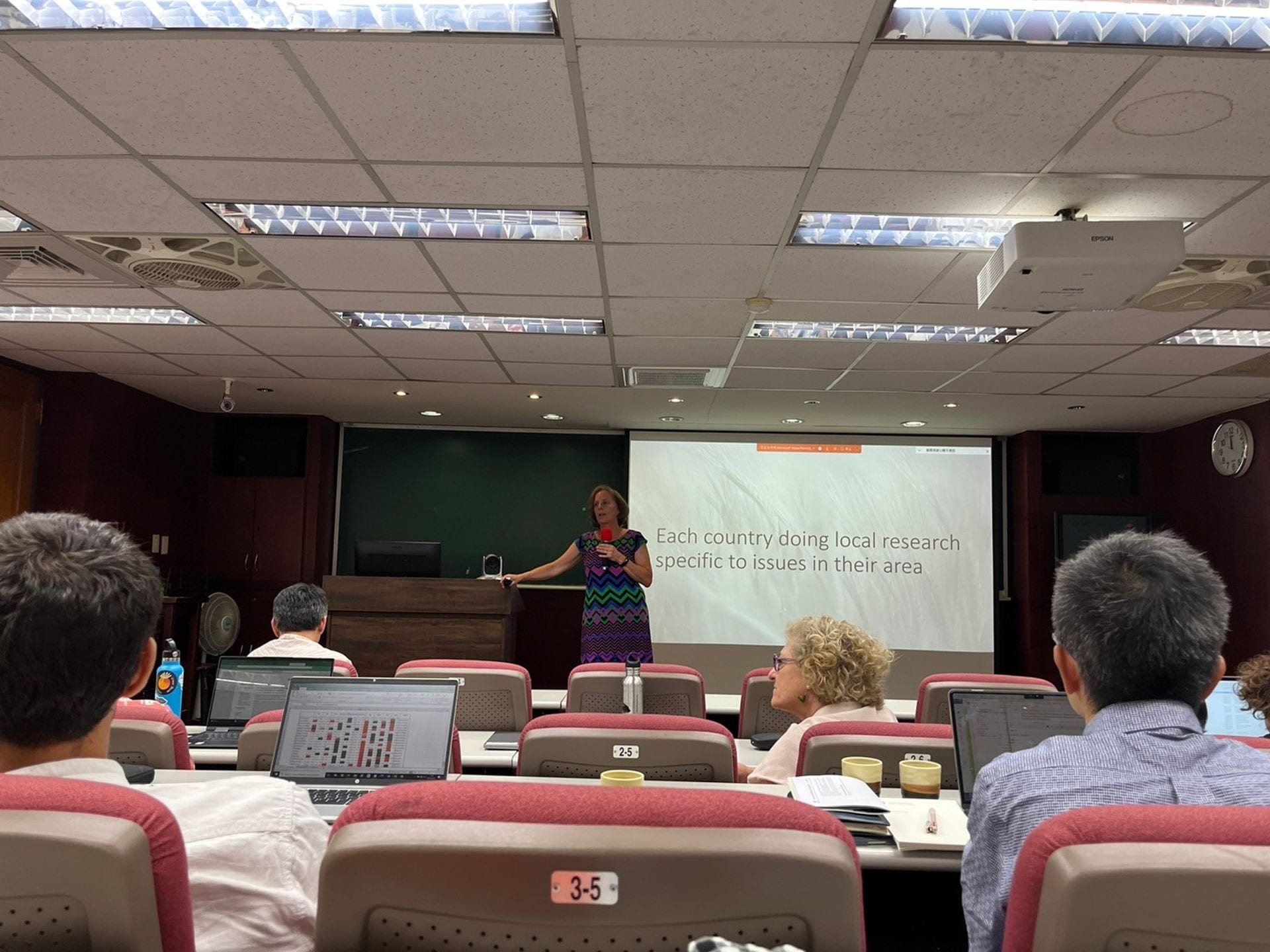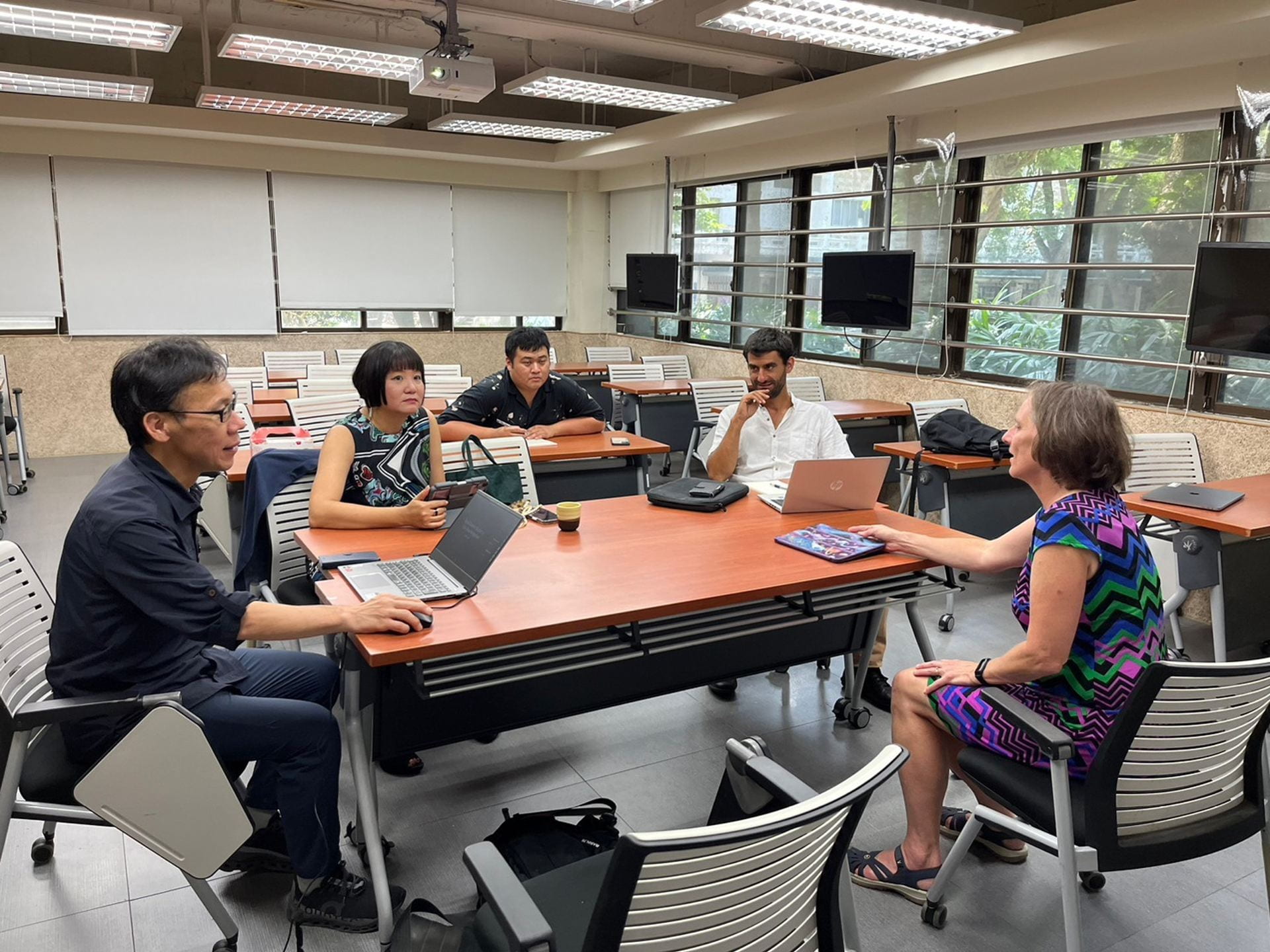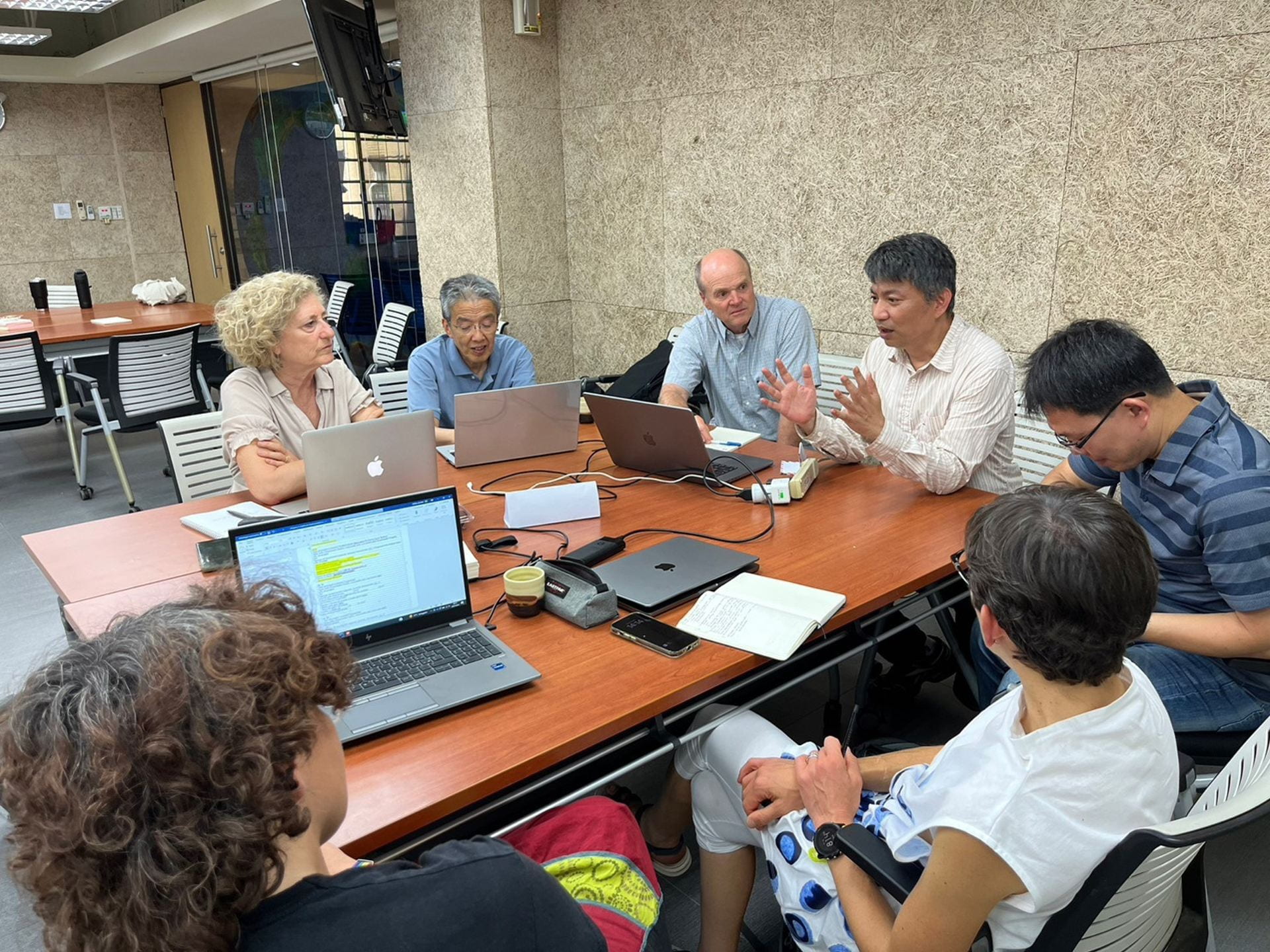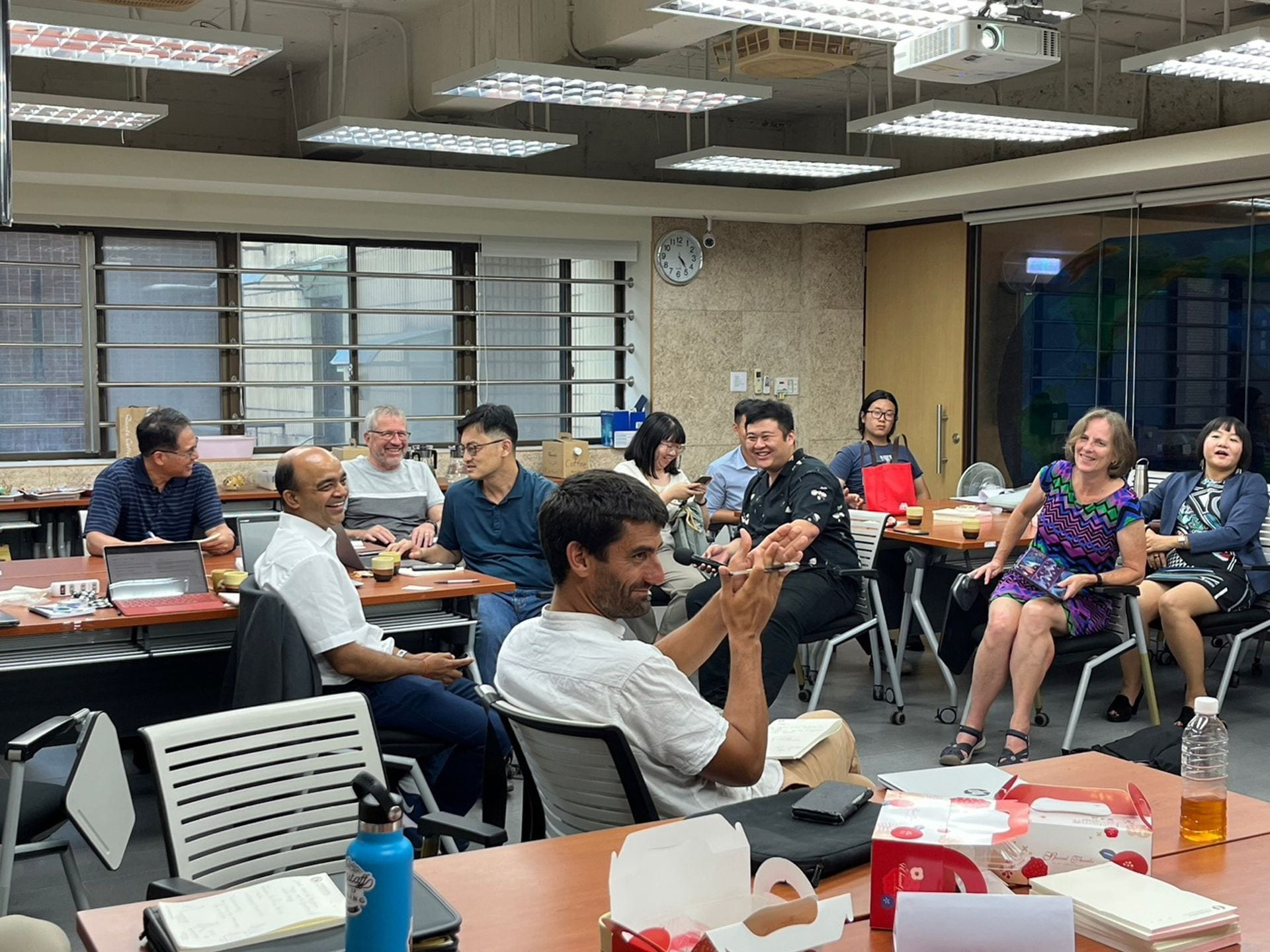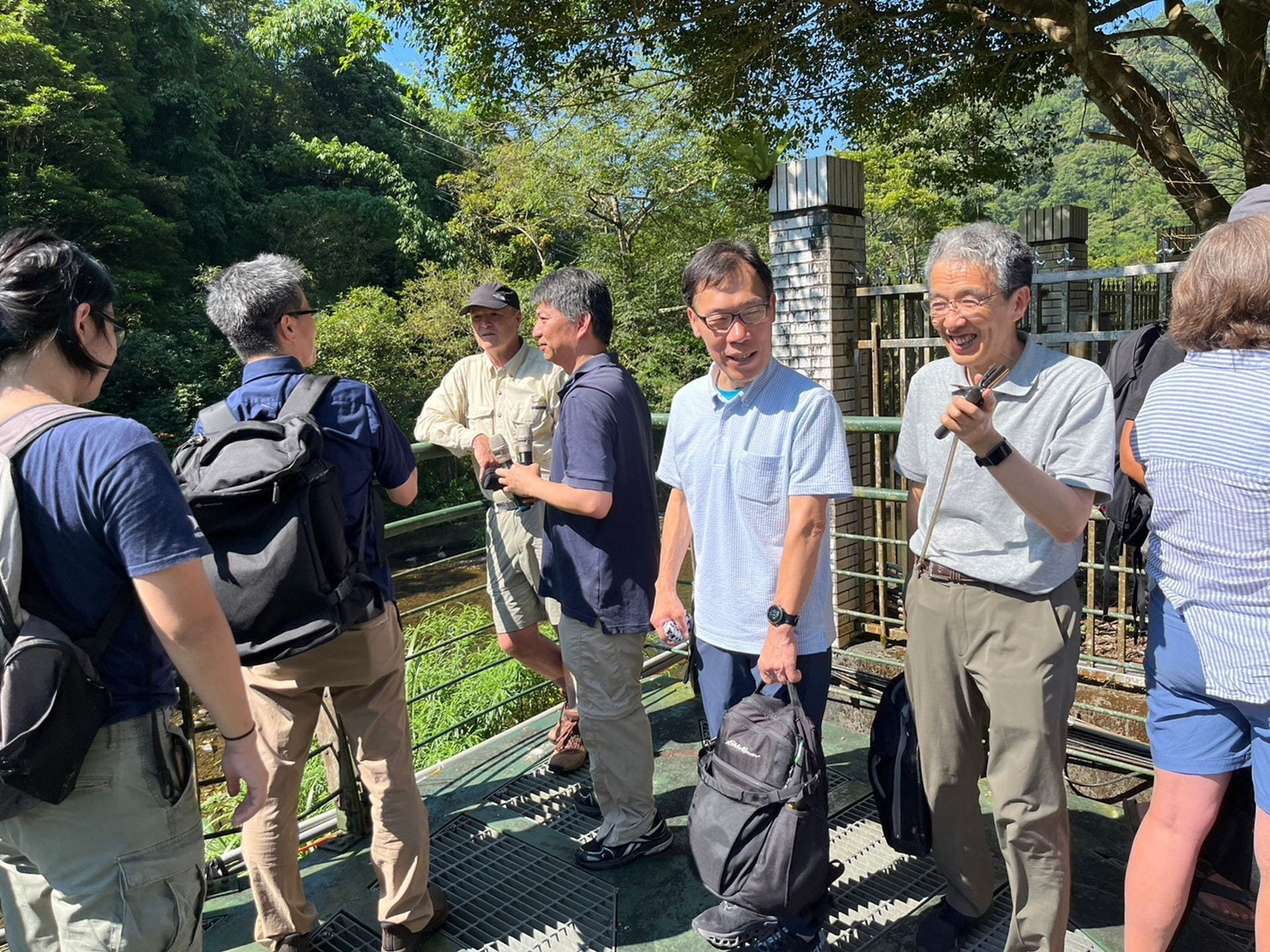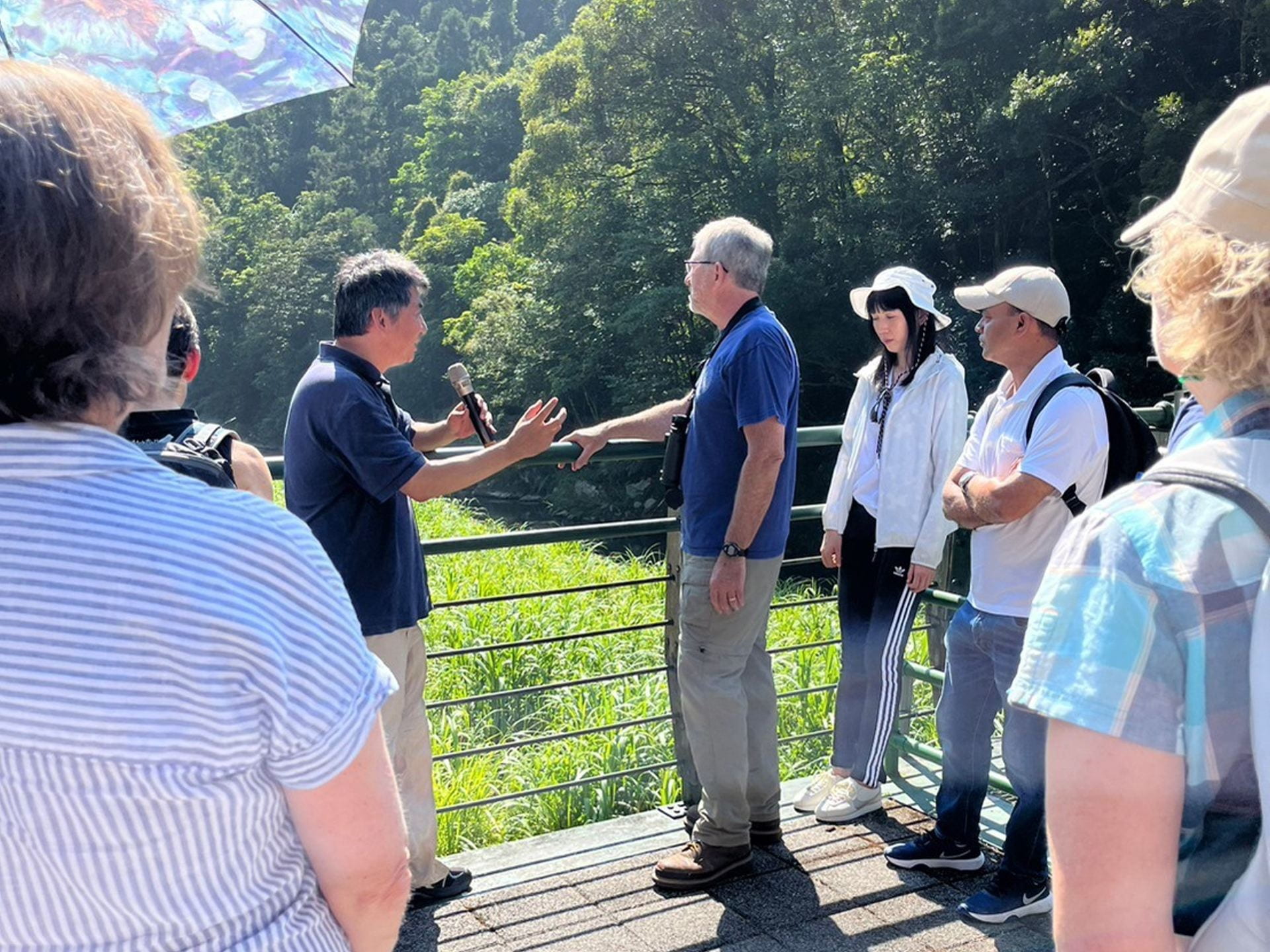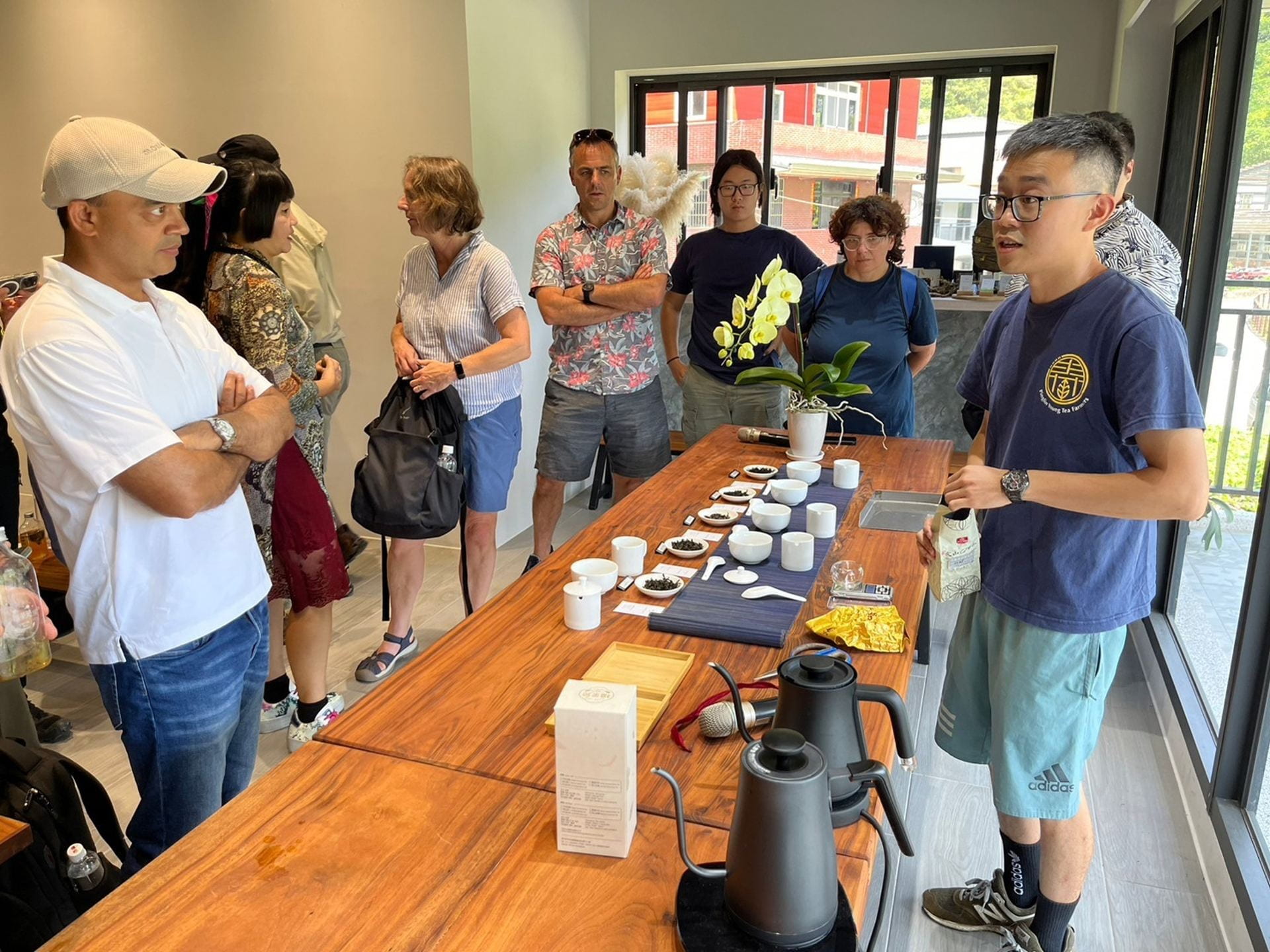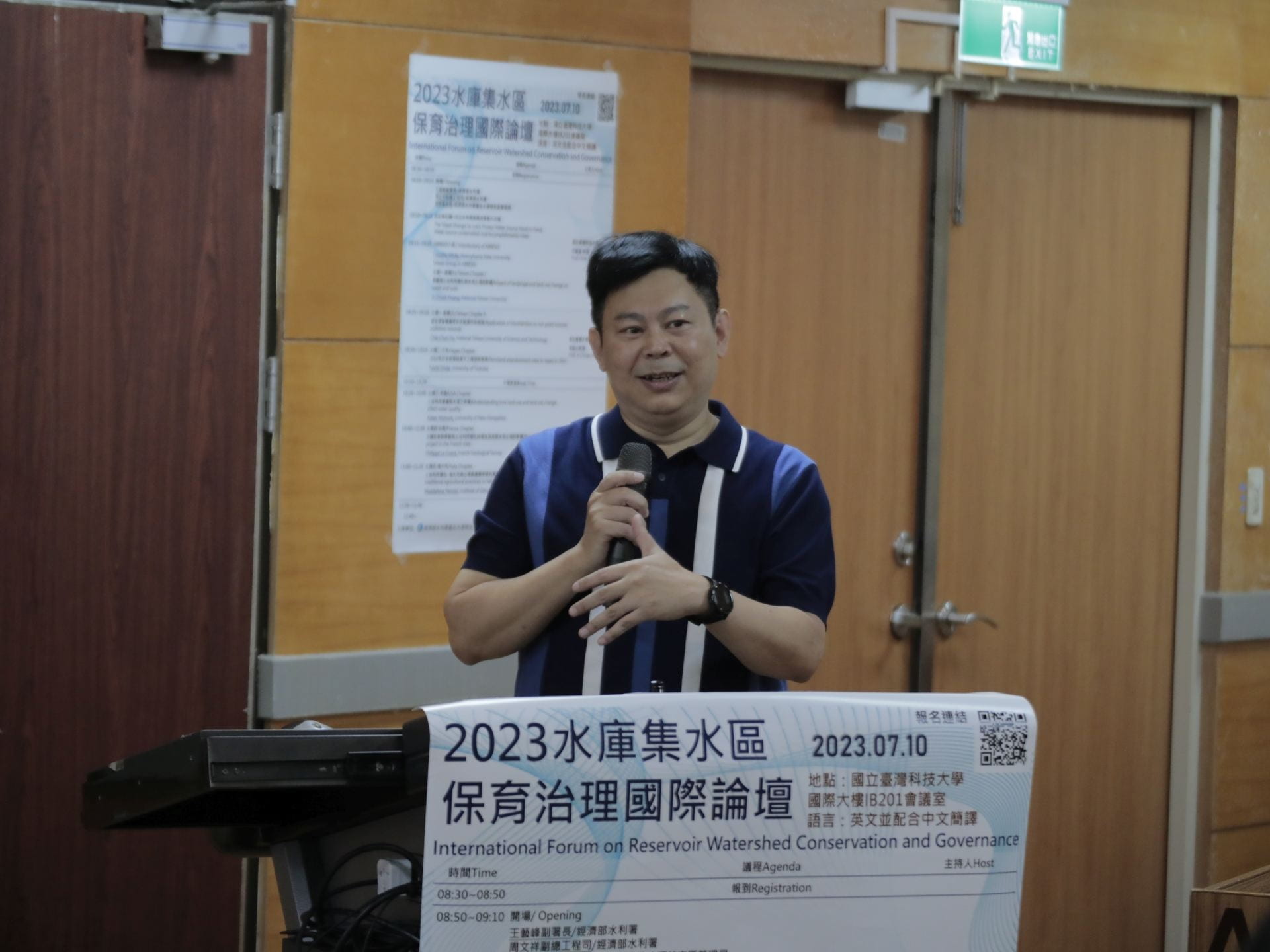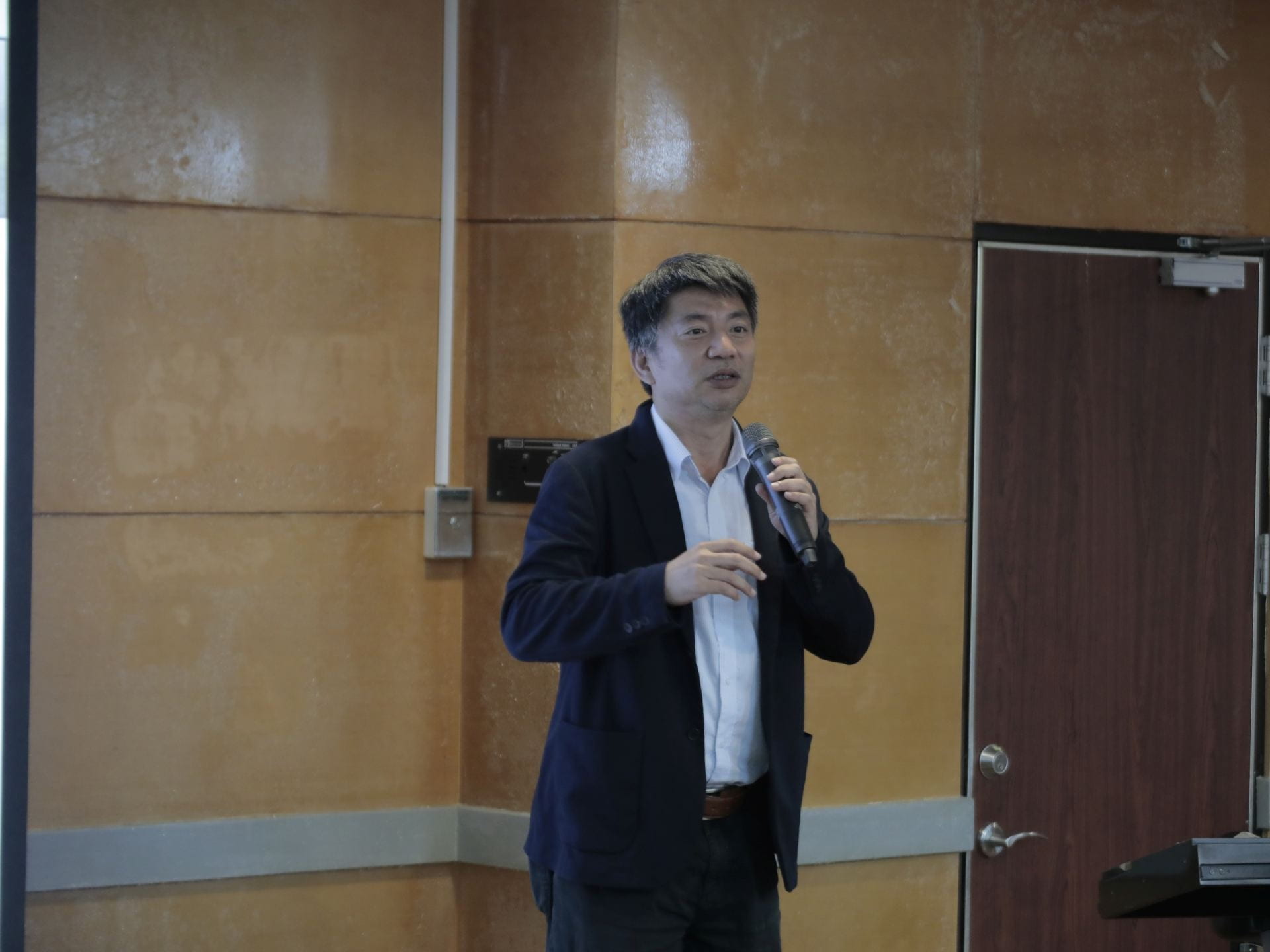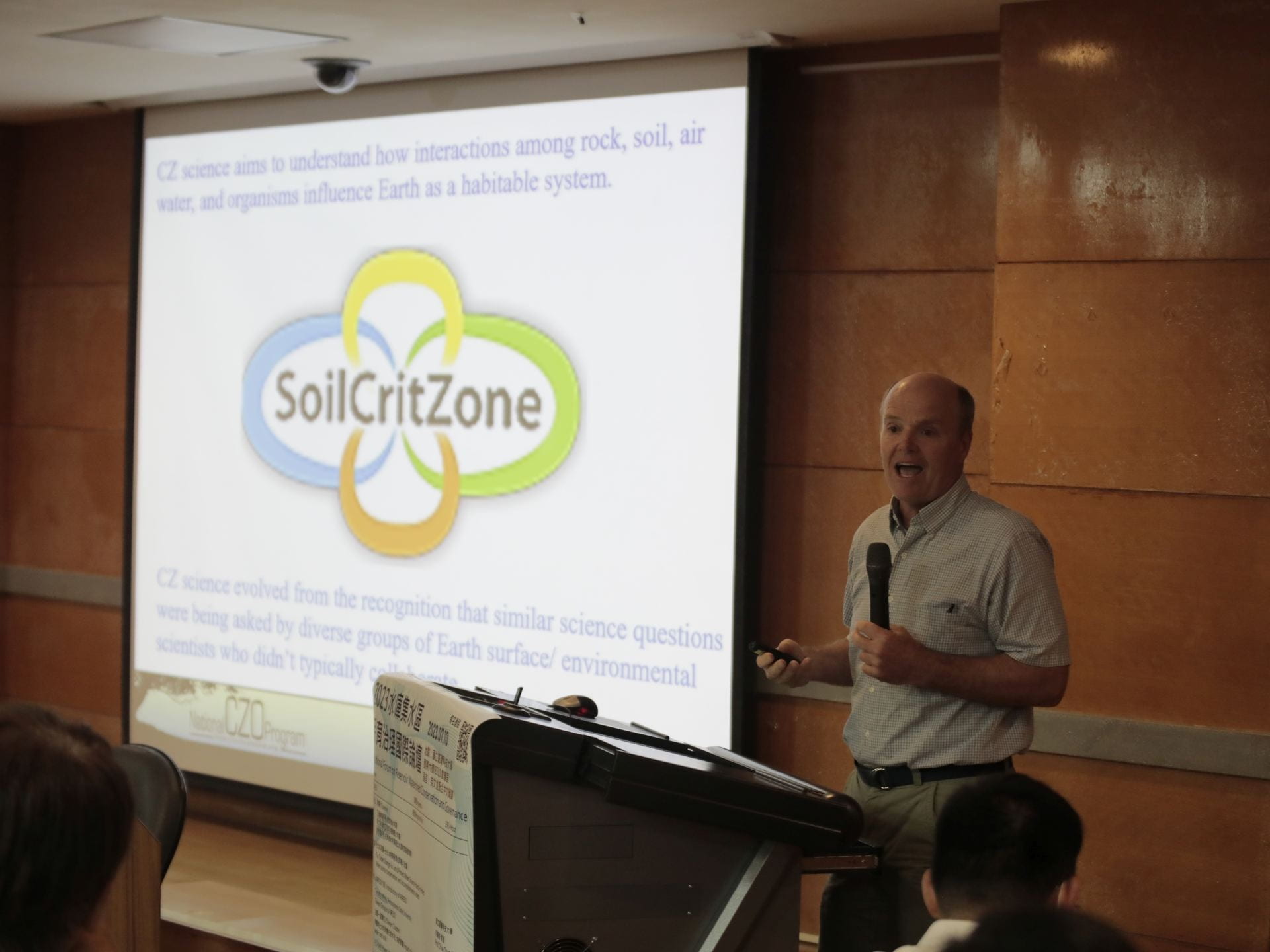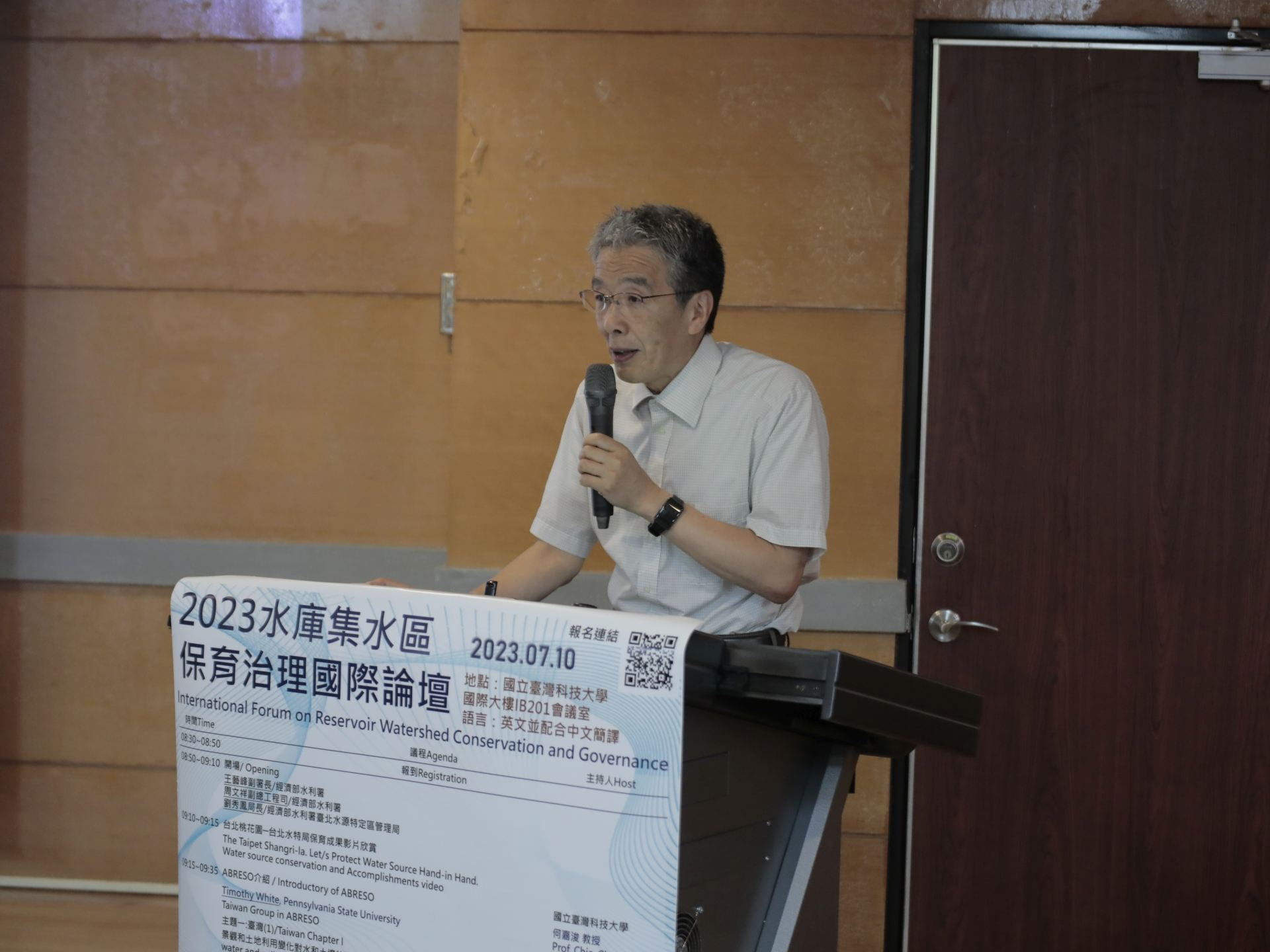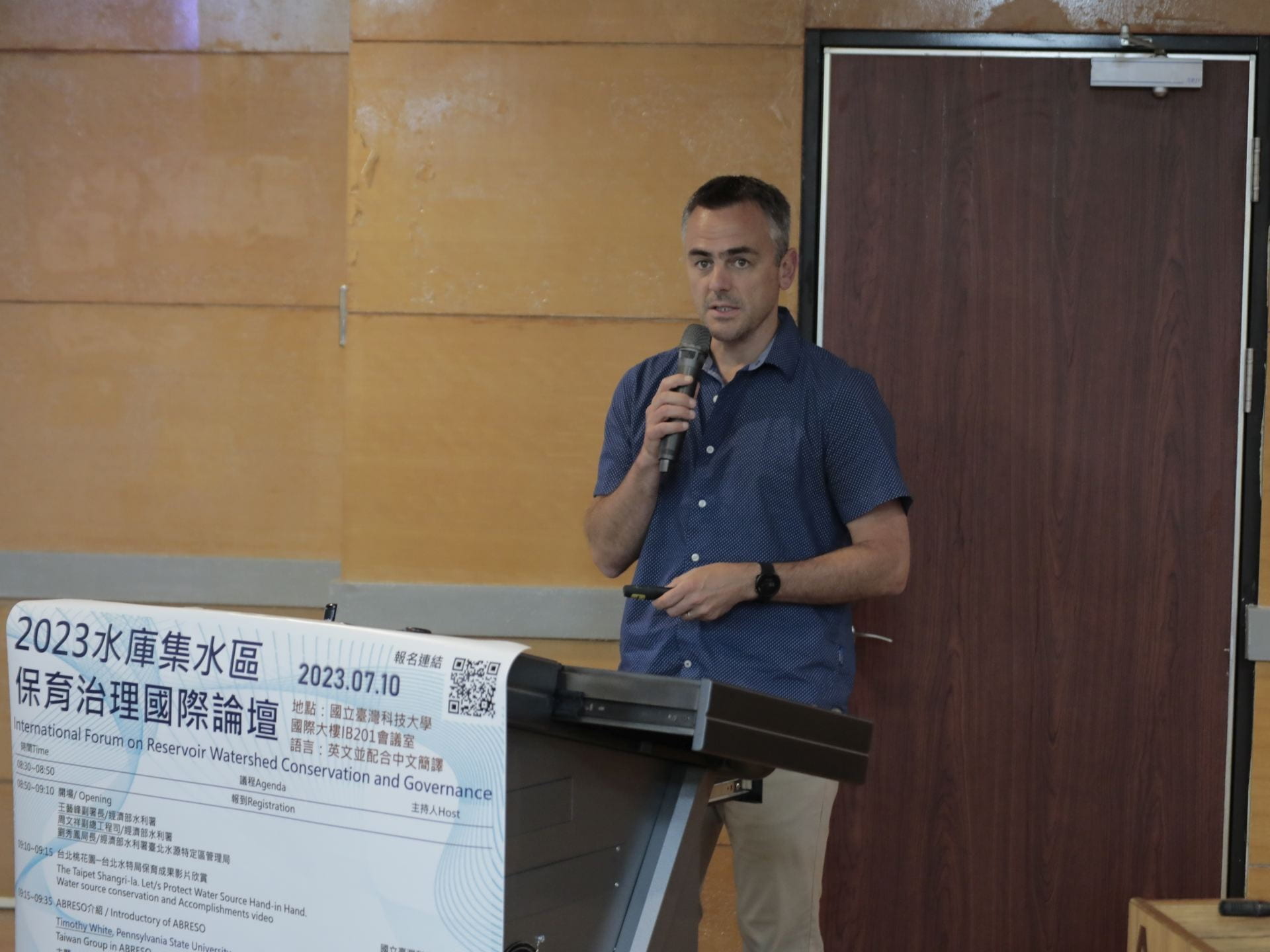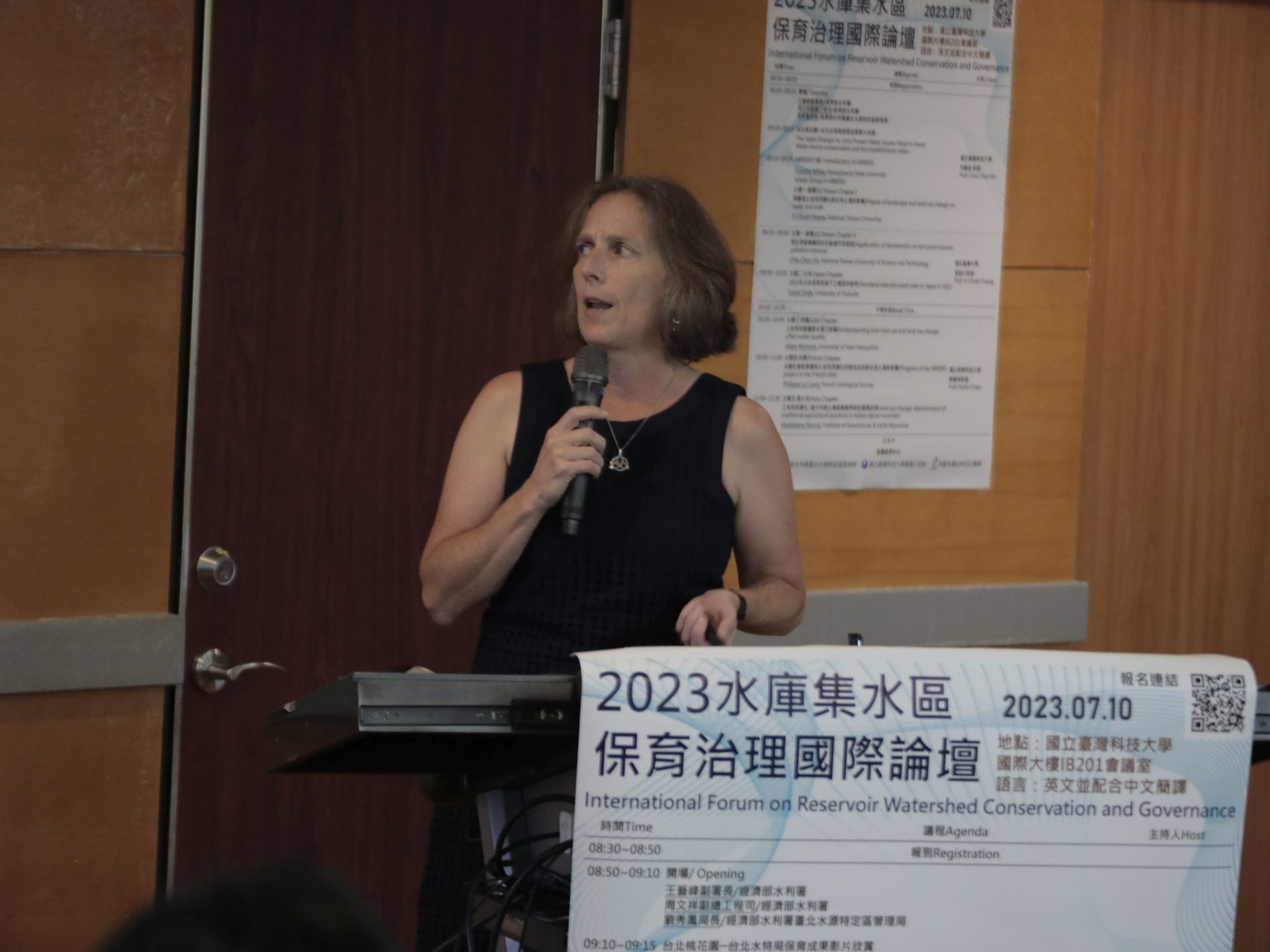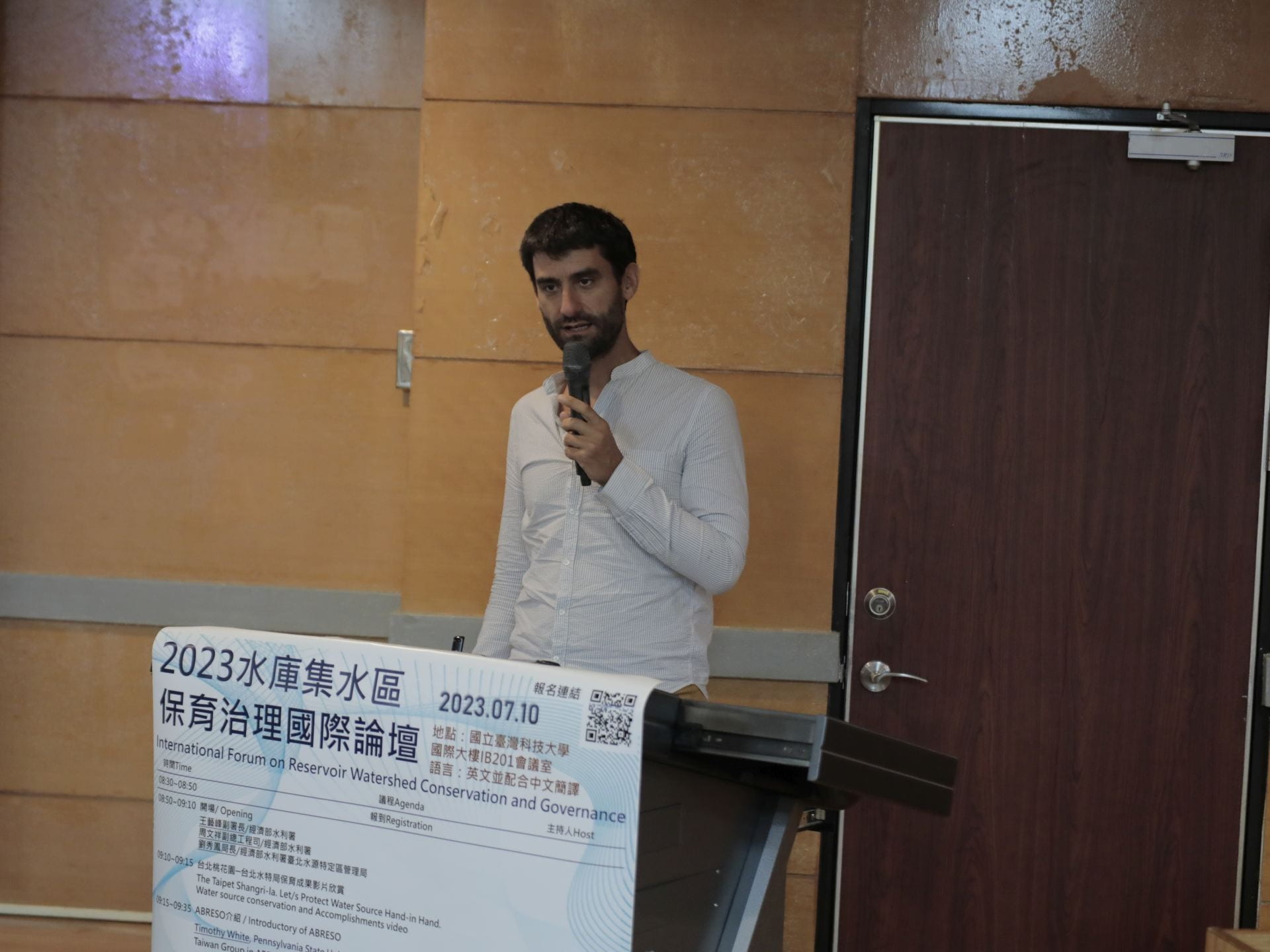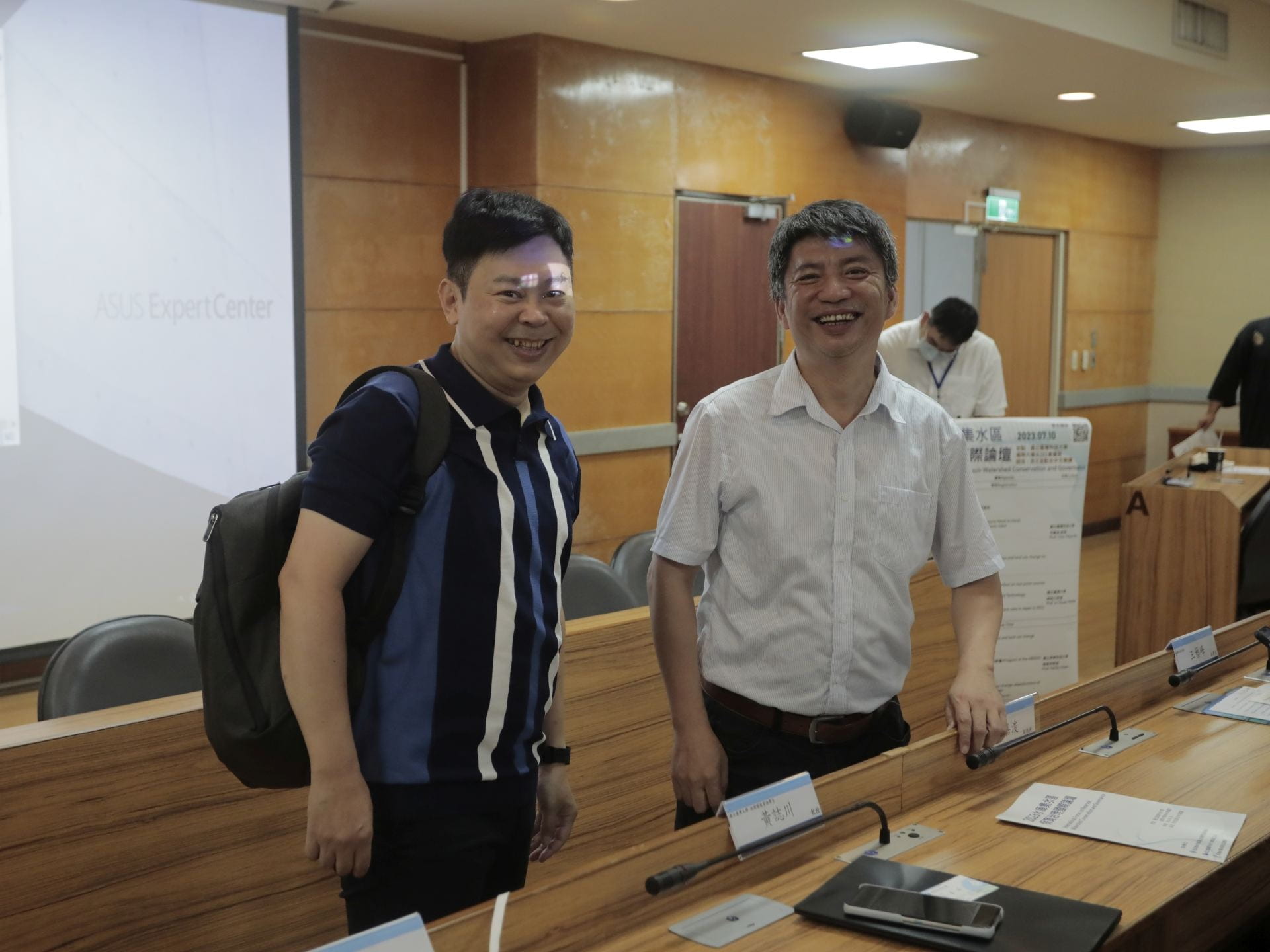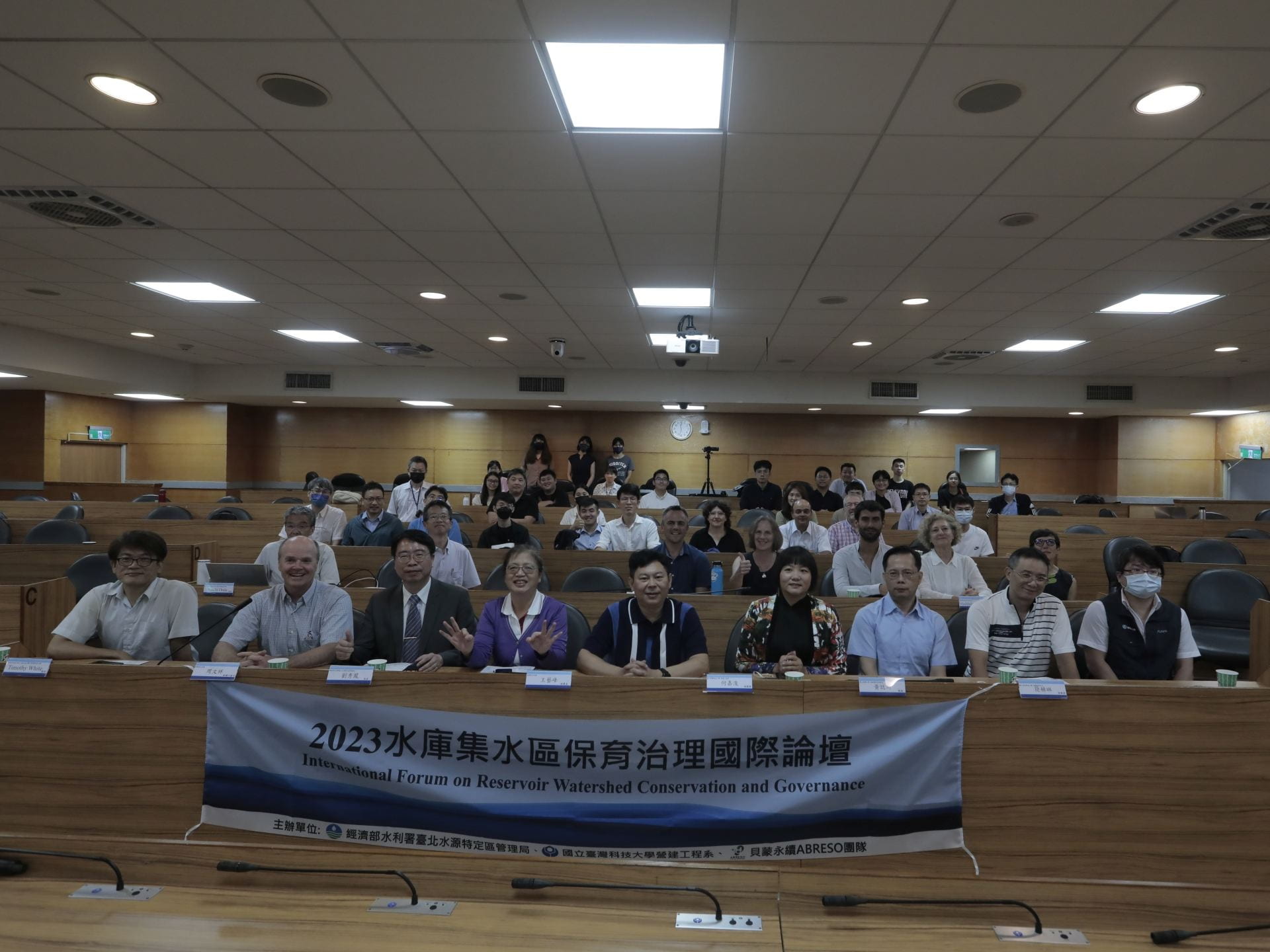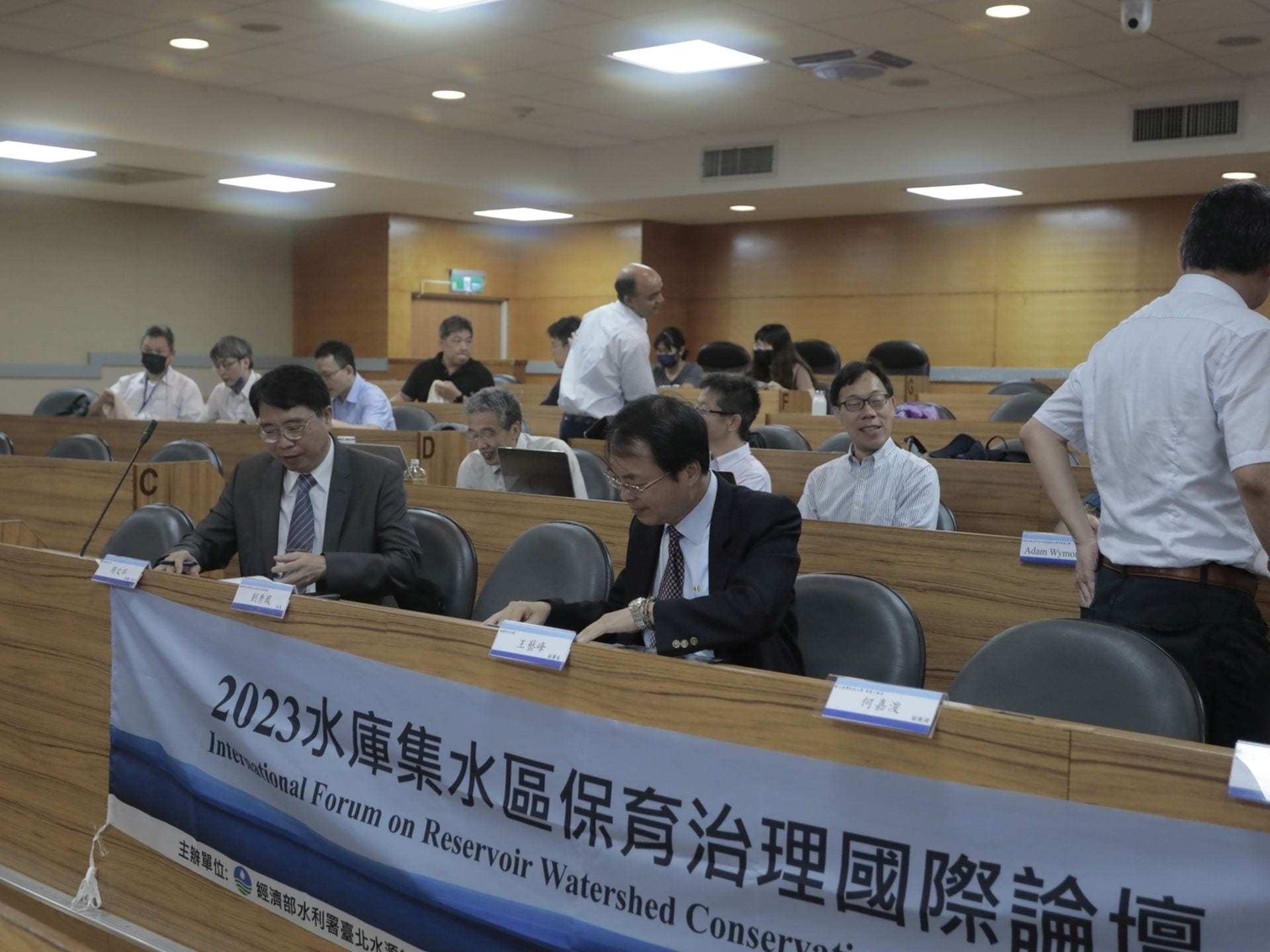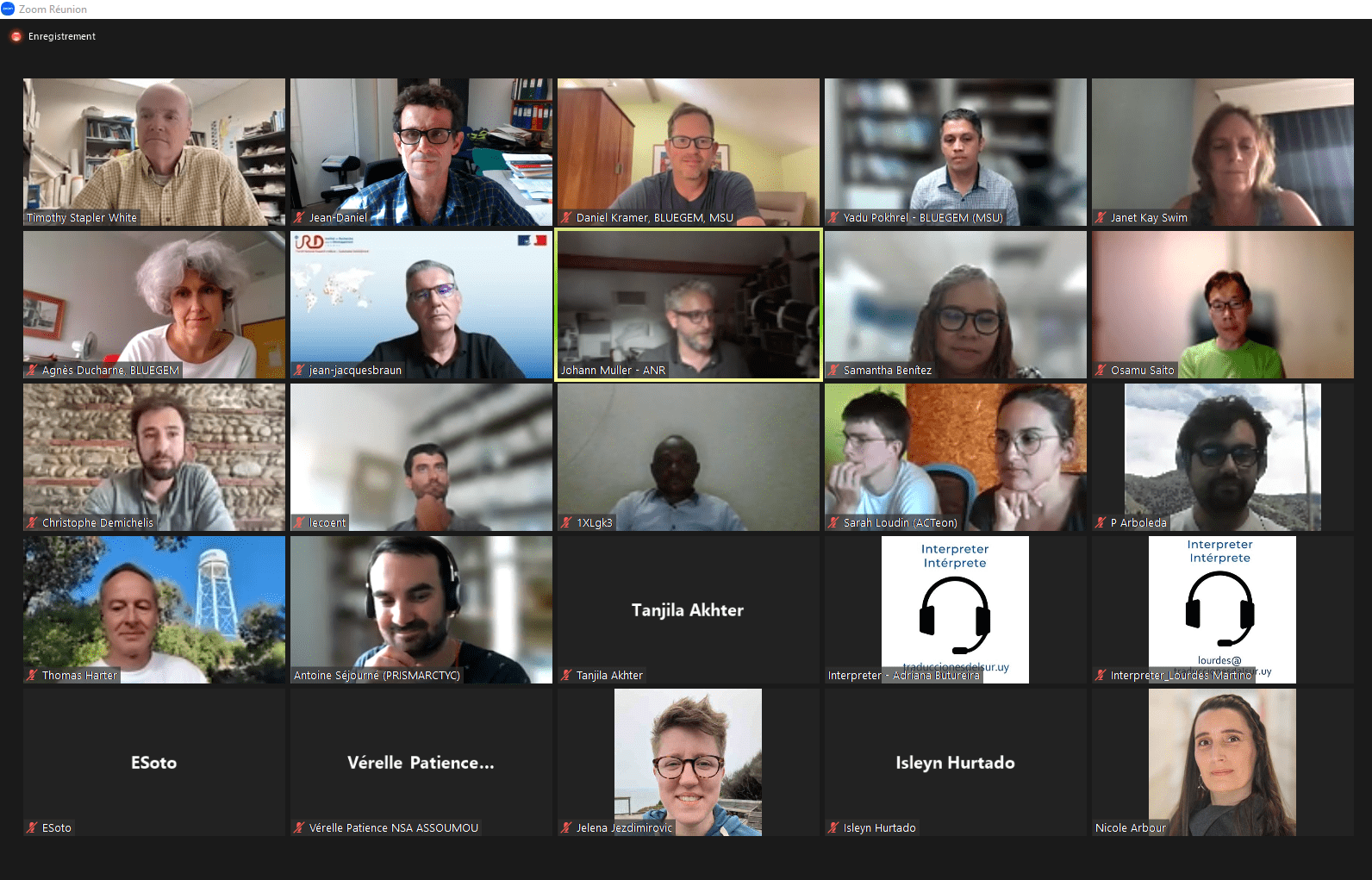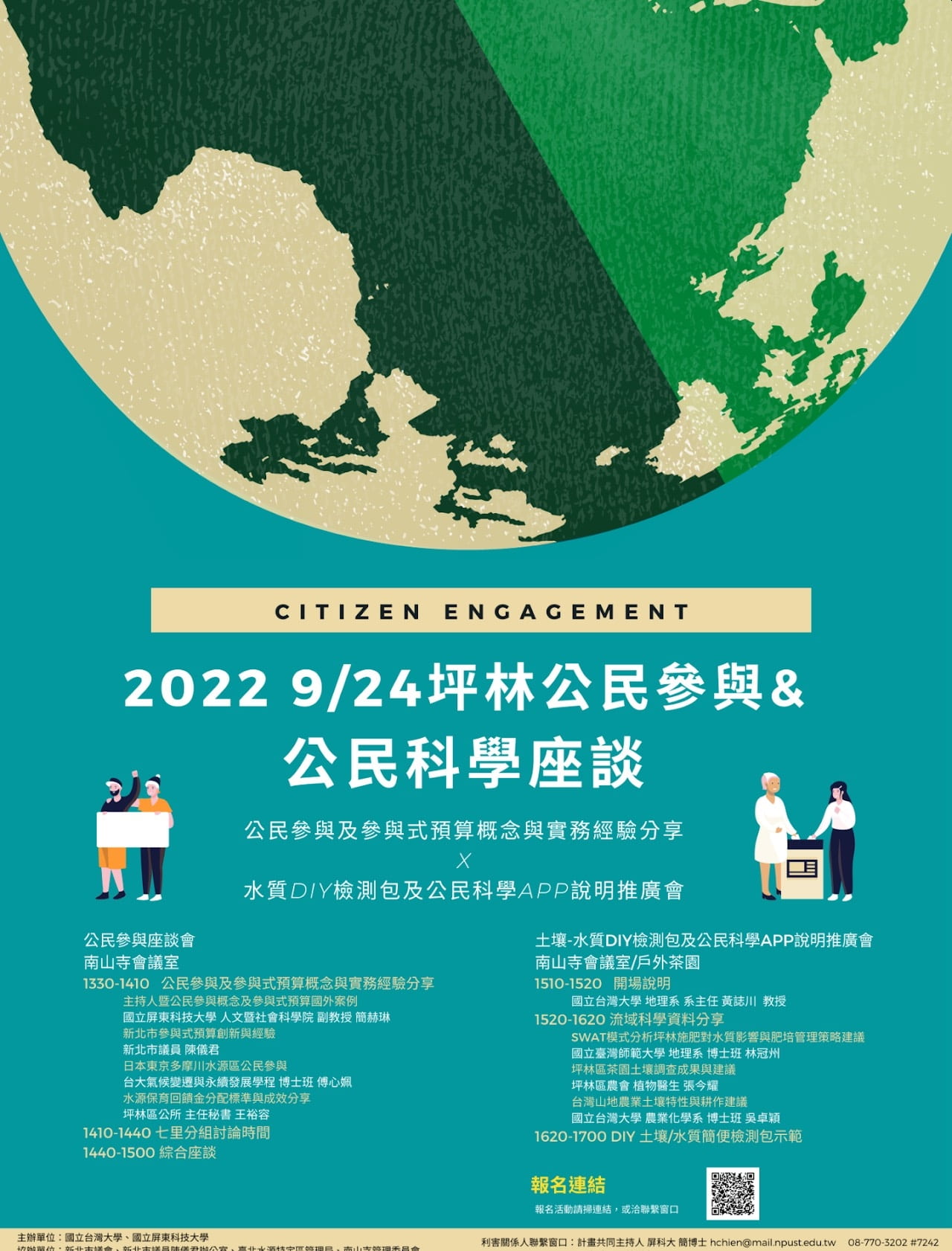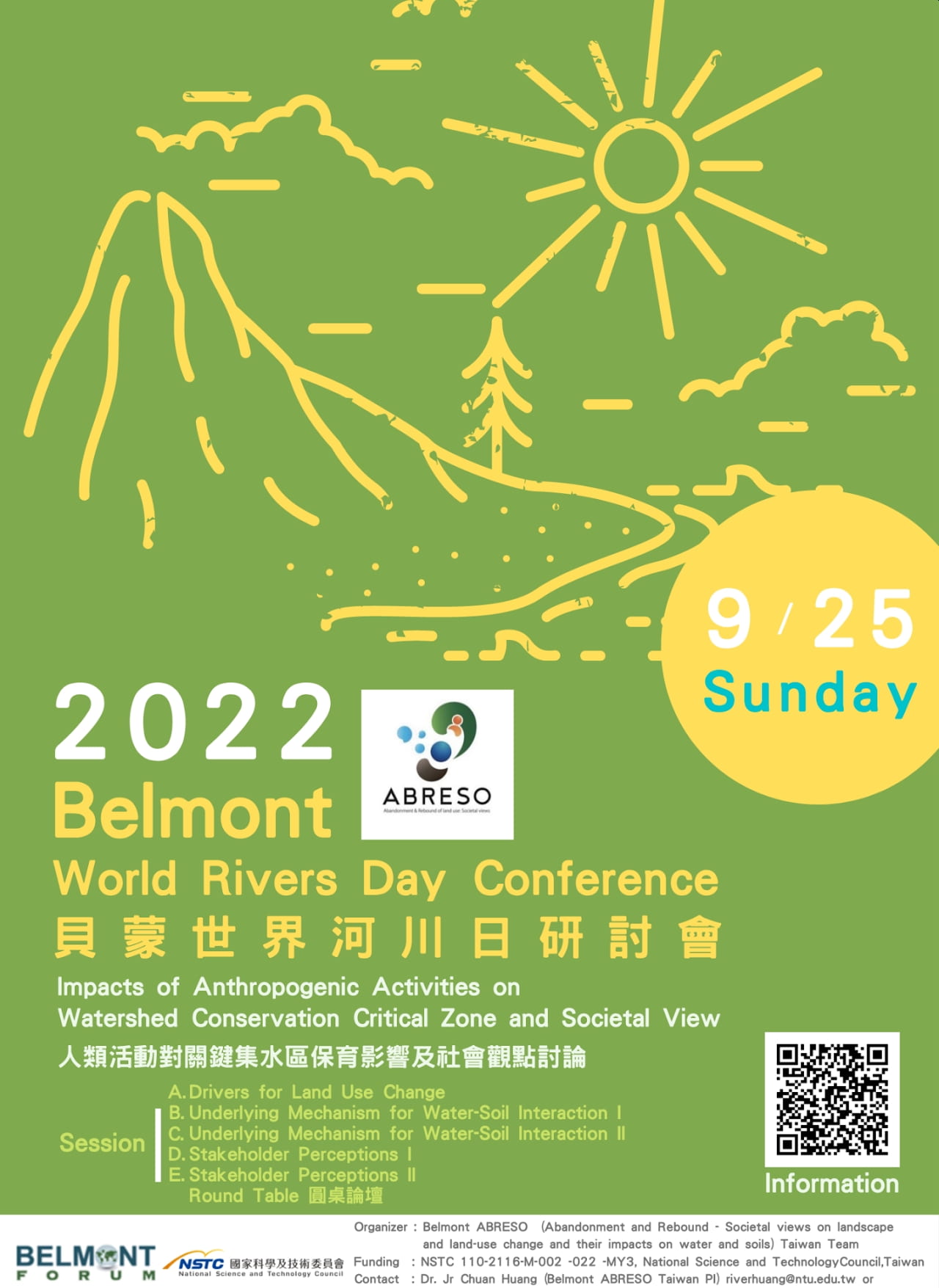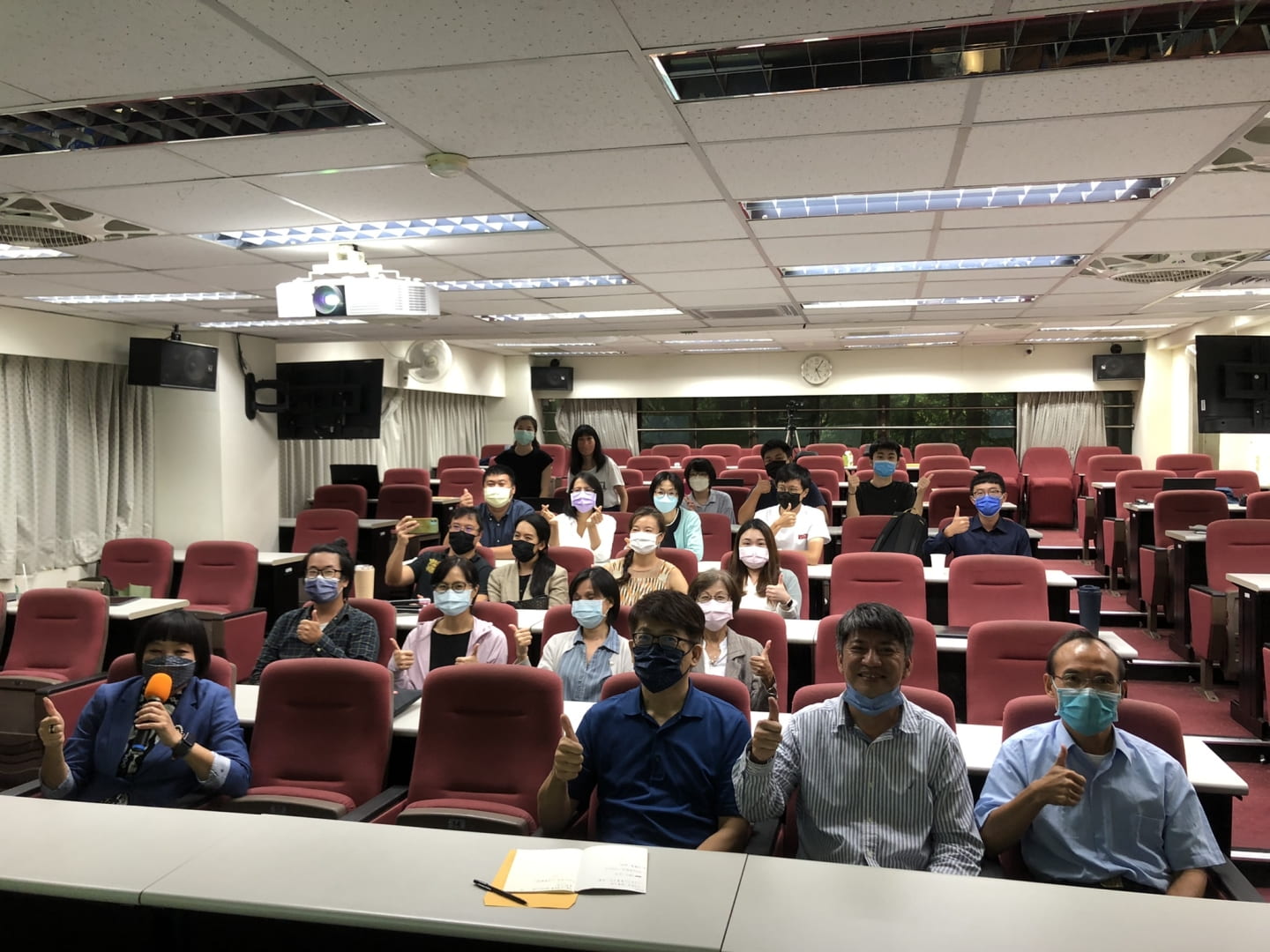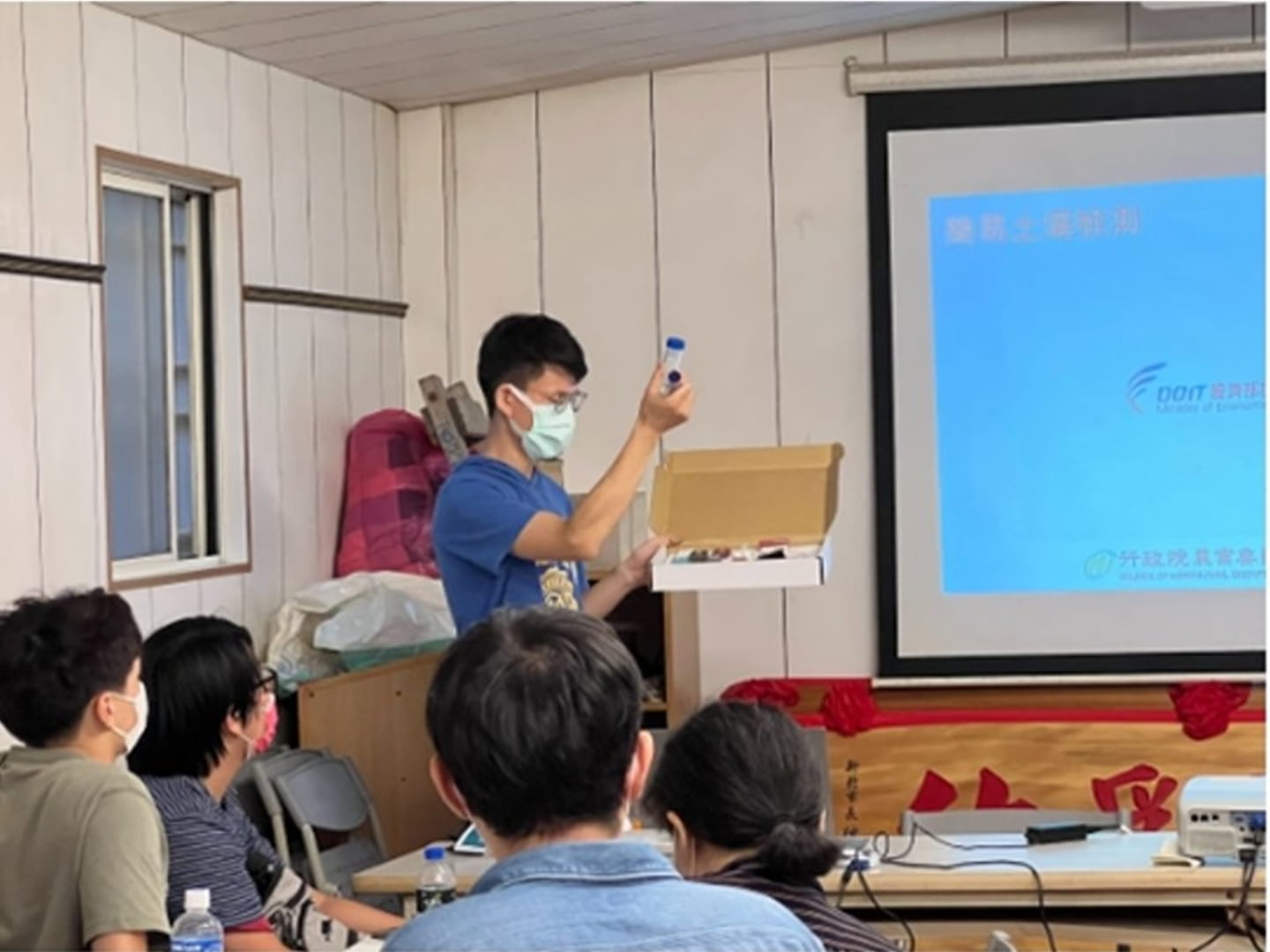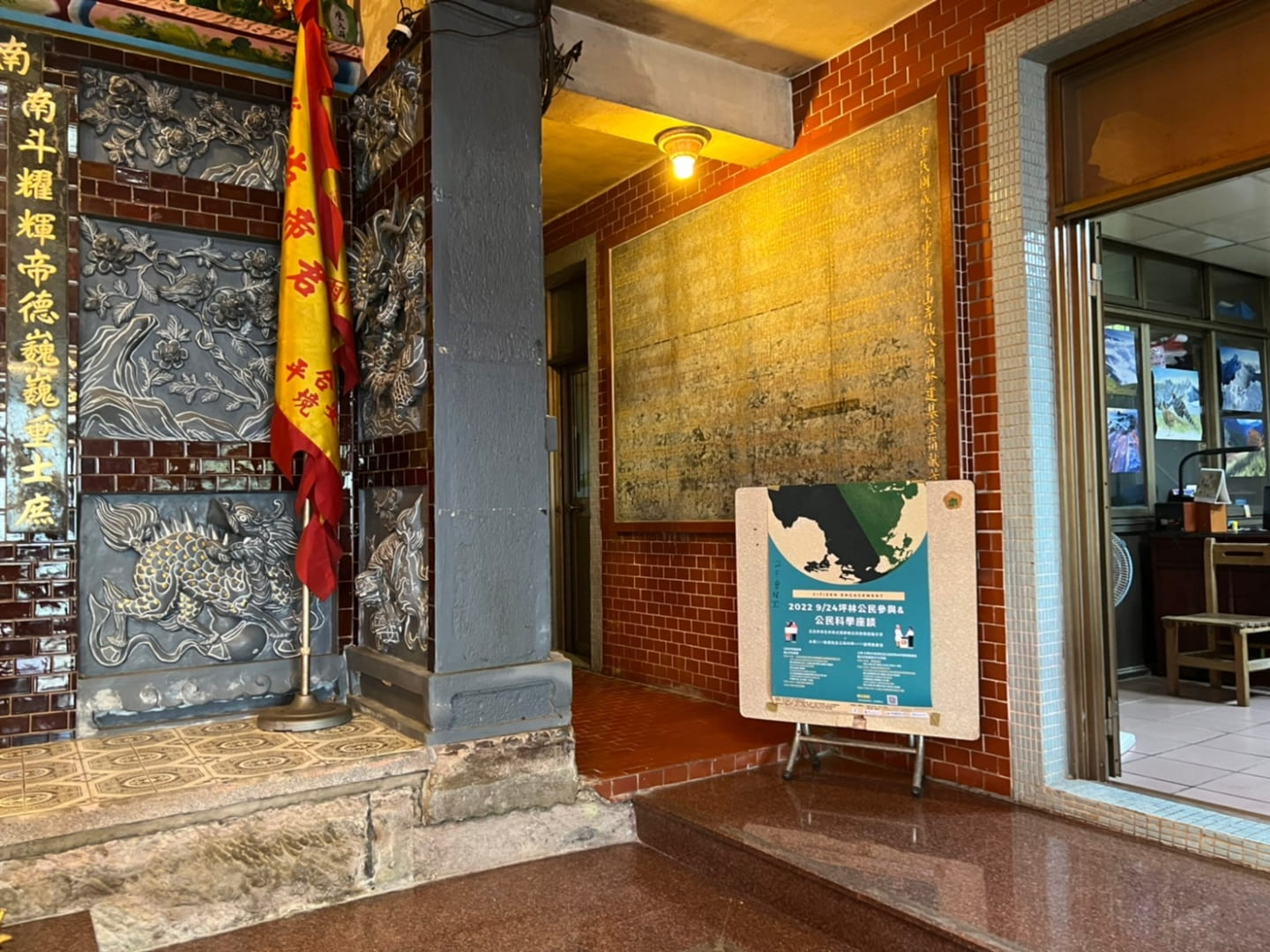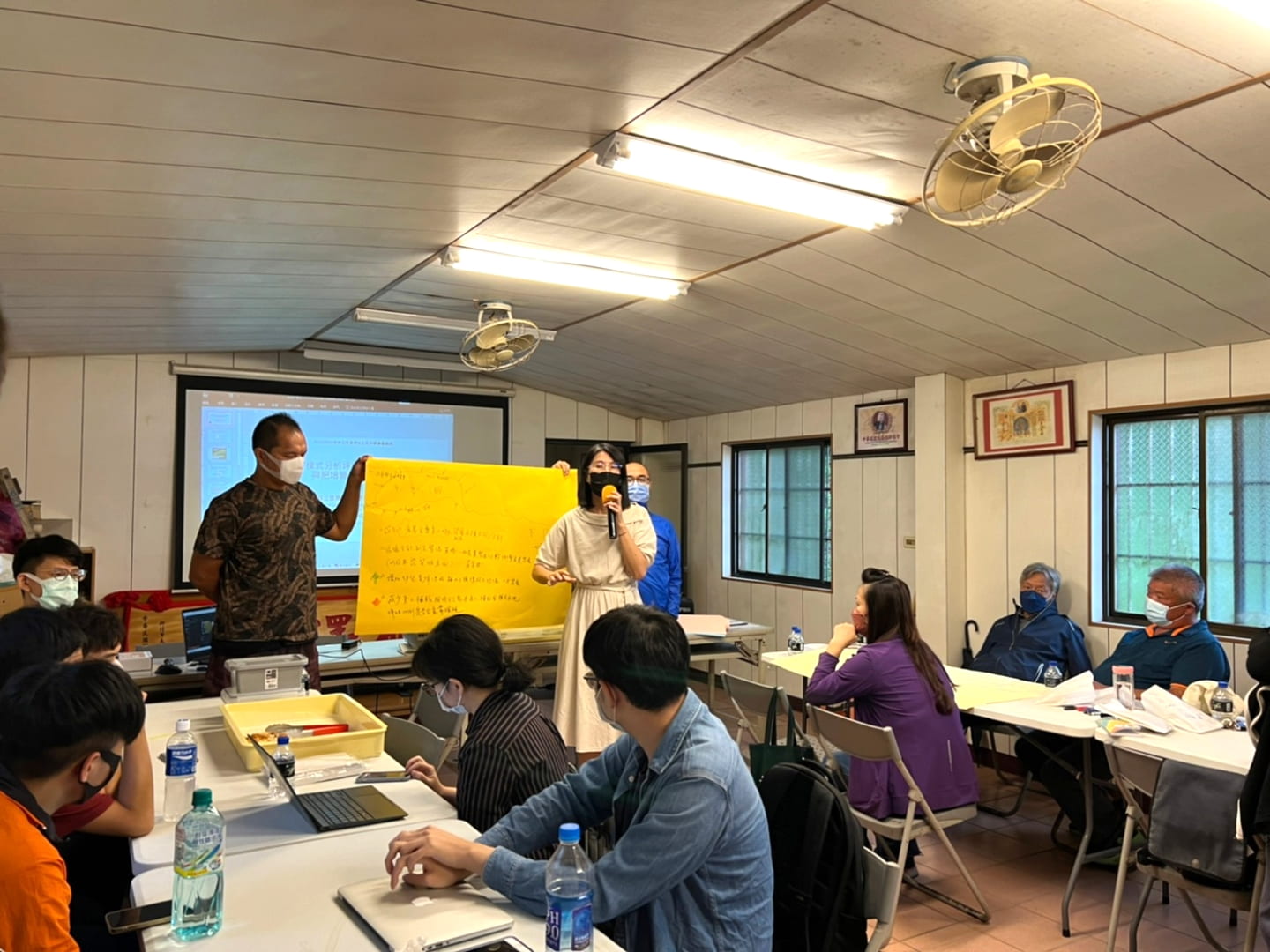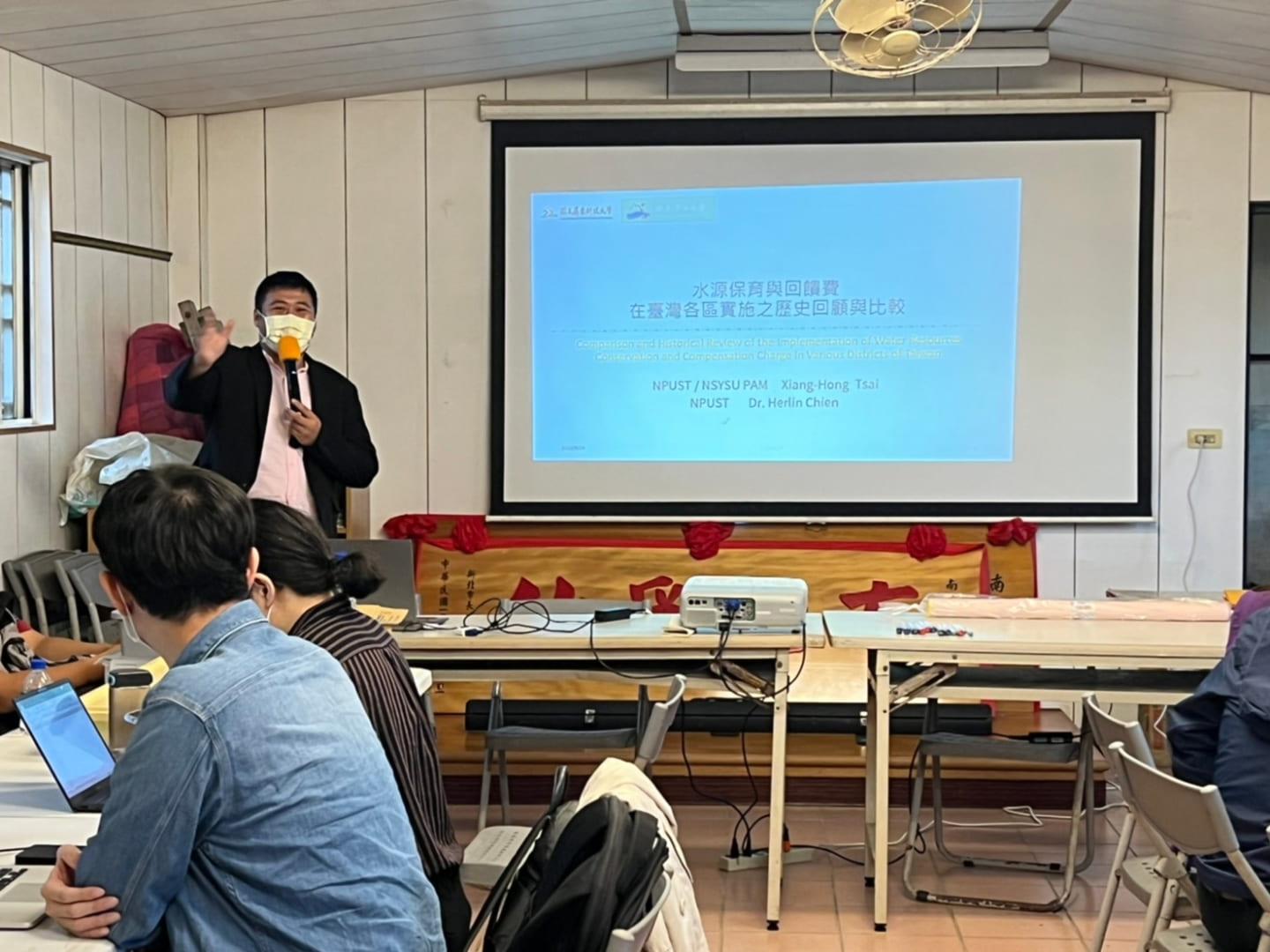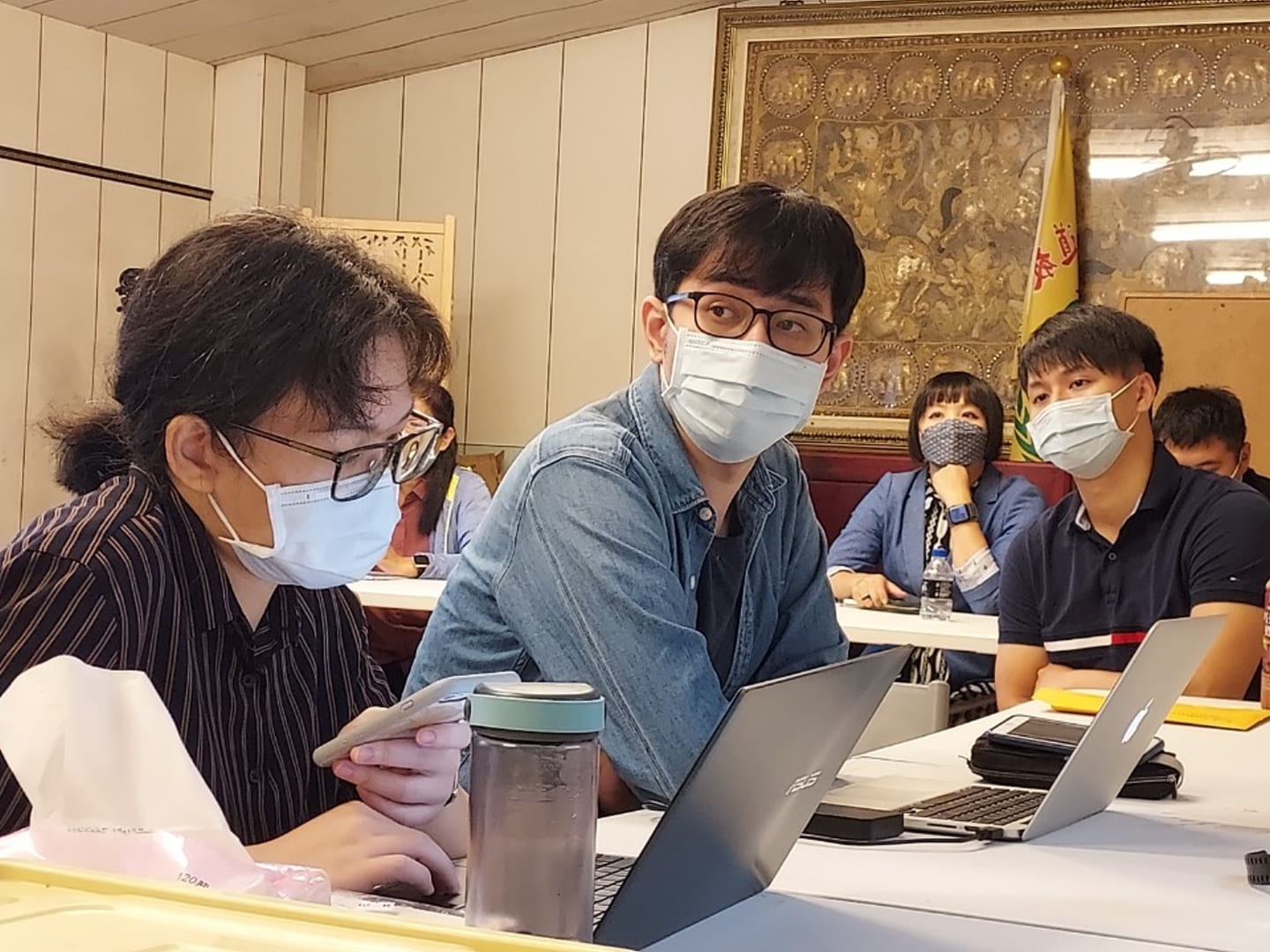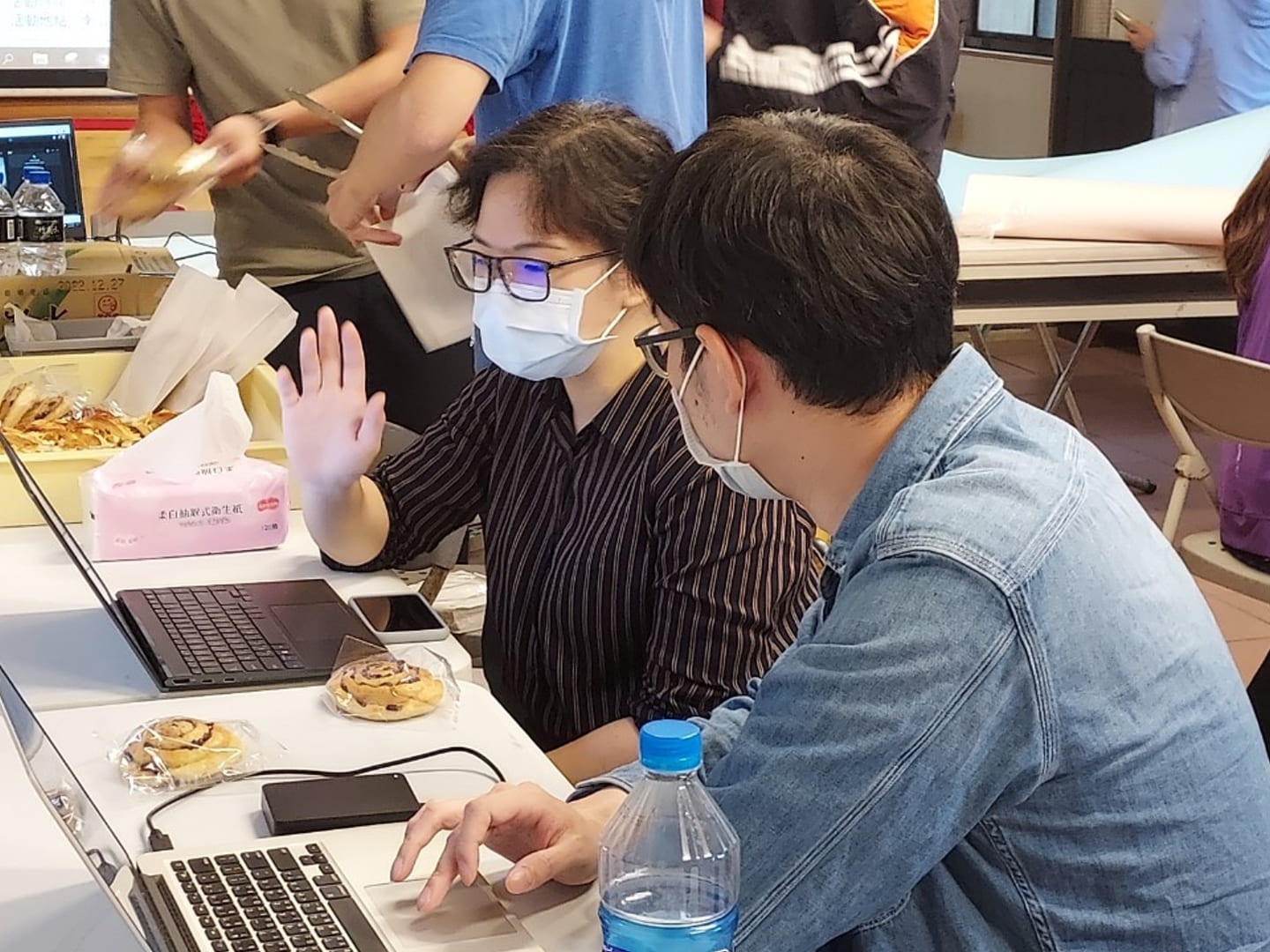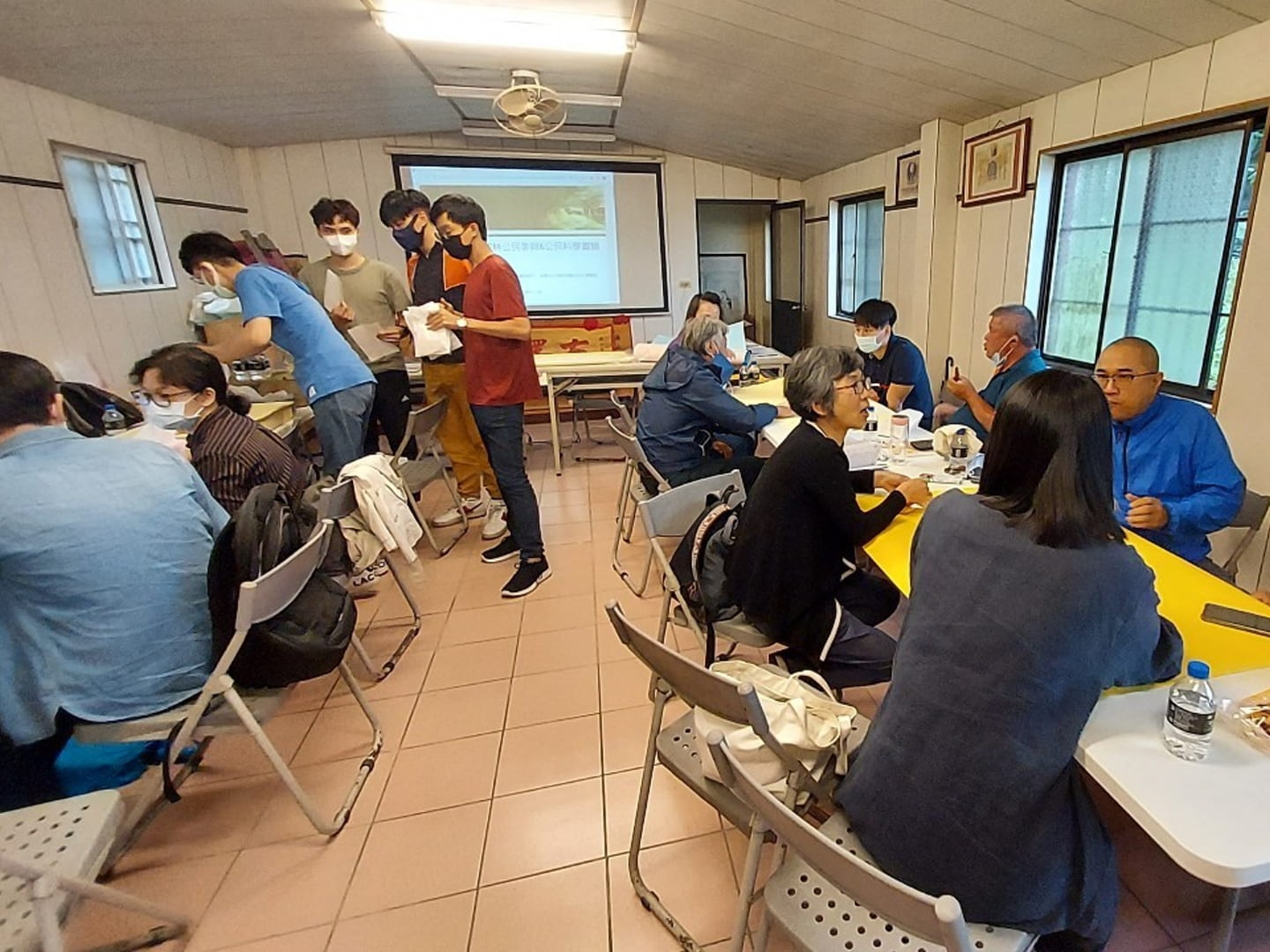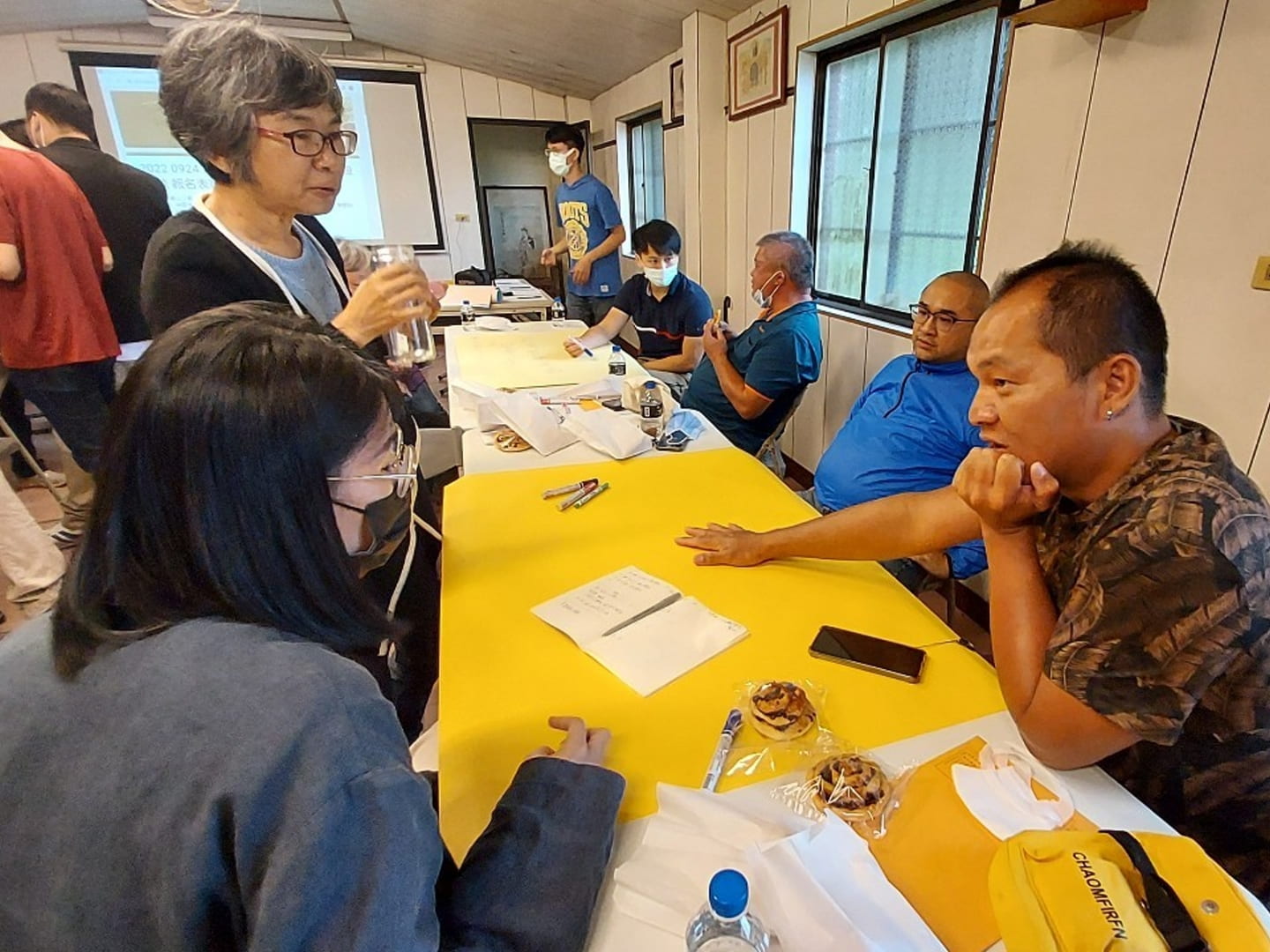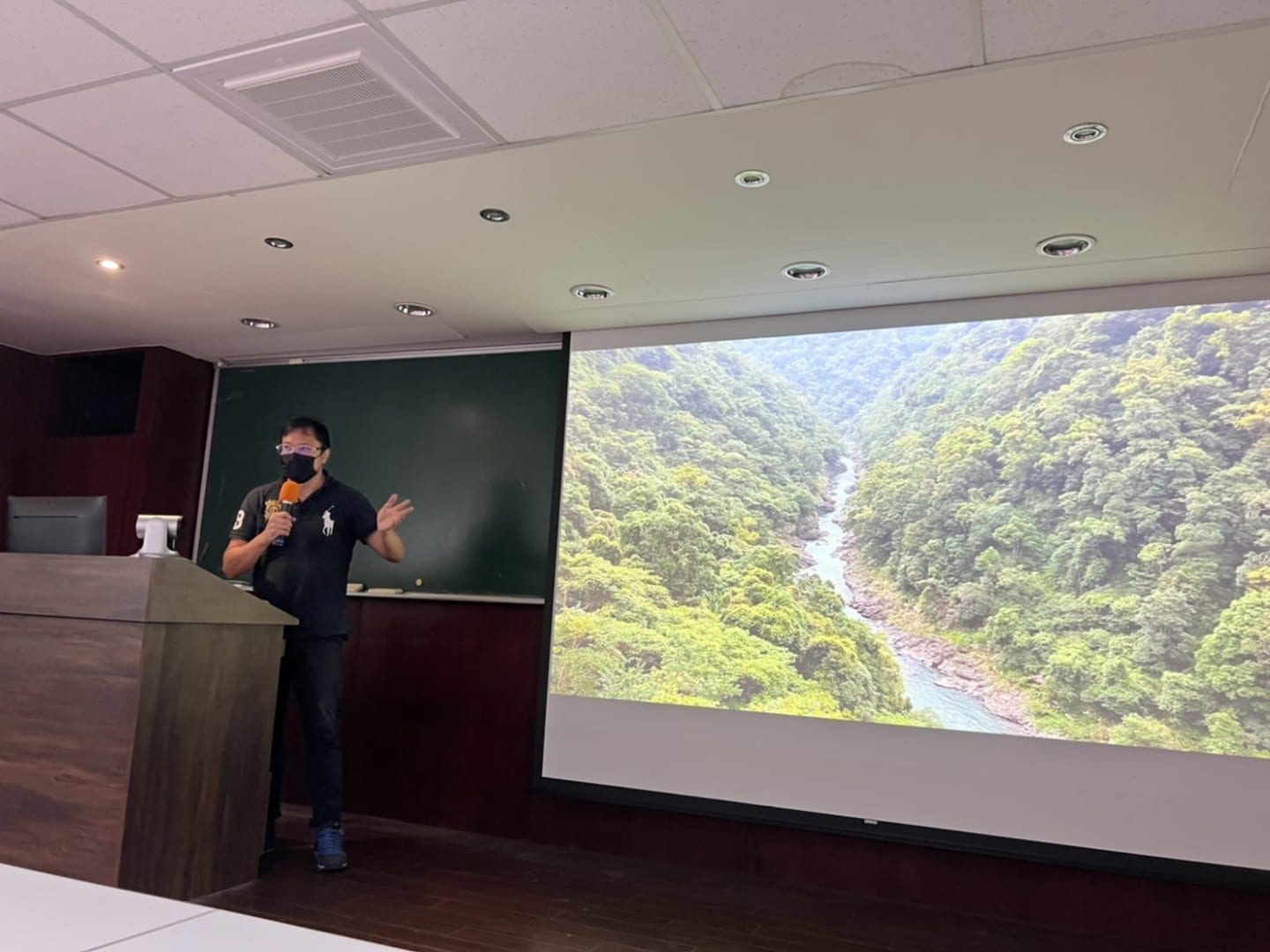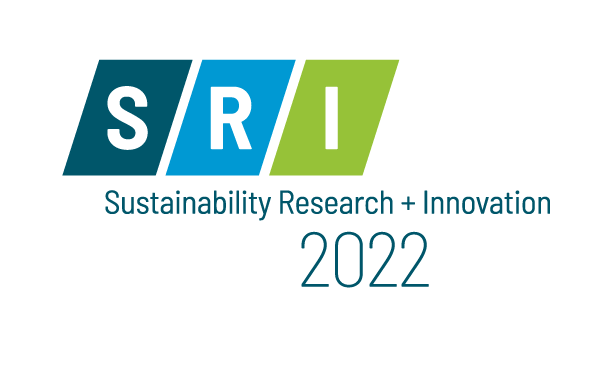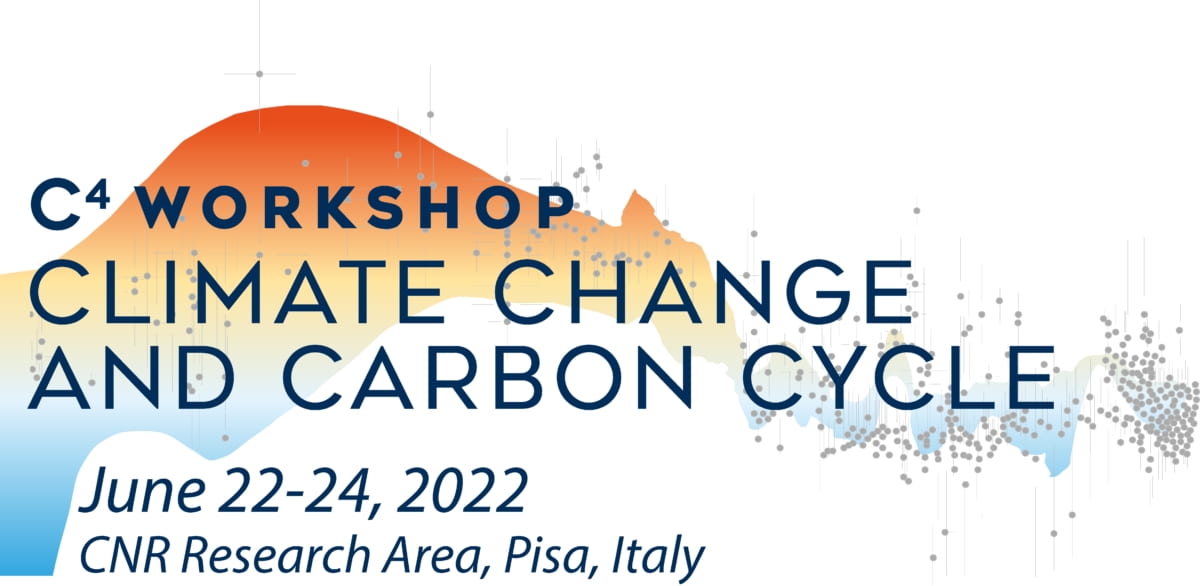Events
2024 Conference on Land Use Change and Water Systems
Interdisciplinary approaches connecting Social and Natural Sciences
19 June 2024
Montpellier, France
BLANK
Abstract submission deadline: 15. March 2024 <=> Conference Information
Over the last decades, land use and land management change – urbanization, development of intensive agriculture, land abandonment, reclaiming of wetlands and floodplains… – have exerted significant influences on water systems and the broader environment and society. Recently, practitioners and academics are actively exploring innovative land use strategies, with a stronger reliance on natural processes. Their goal is to foster a more integrated management of water capable of addressing on-going global changes.
Supporting decision makers in the design of these strategies requires the use of interdisciplinary approaches, encompassing inter allia : i) the understanding of relationships between land use dynamics and water systems (surface and groundwater), ii) the description of social representations and perceptions surrounding these changes and iii) the assessment of economic, social and environmental impacts stemming from historical changes and prospective scenarios.
This scientific conference endeavours to showcase interdisciplinary contributions that integrate natural and social sciences and cover these different approaches. The objective is to provide valuable insights supporting the development of sustainable land management strategies.
This conference is organized by BRGM in the framework of the ABRESO project of the Belmont Forum and co-organized by the Groundwater team of the G-eau lab of Montpellier.
Conference information
The conference will take place at Montpellier, France (Maison des Sciences de l’Homme, 71 rue du Professeur Henri Serre) on 19 June 2024 from 9 am to 5 pm. Participation in the conference is free, but upon registration and subject to availability. Participants will be responsible for covering transportation and accommodation expenses.
Abstract submission:
500 words in all, they must include a title, names and affiliations of the authors, the research context, the case study(ies), research questions, methods, and results, as well as three keywords. Abstracts must be sent in English before March 15, 2024 to the following e-mail address: p.lecoent@brgm.fr.
Scientific committee:
Philippe Le Coent (BRGM, France), Cécile Hérivaux (BRGM, France), Timothy White (Penn State University, US), Janet Swim (Penn State University, US), Bill Mc Dowell (University of New Hampshire, US), Jr-Chuan Huang (National Taiwan University, Taiwan), Herlin Chien (National Taiwan University, Taiwan), Osamu Saito (Institute for Global Environmental Strategies, Japan) Lisa Sella (CNR-Italy), Maddalena Pennisi (CNR-Italy), Ilaria Baneschi (CNR-Italy), Yuichi Onda (University of Tsukuba, Japan), Adam Wymore (University of New Hampshire).
Online and onsite in Helsinki, Finland
SRI/SSD2024 will bring together 2000+ participants from more than 100 countries online and in-person with events on both campuses in Helsinki and Espoo. SRI is a joint initiative of Future Earth and the Belmont Forum.
BLANK
SRI2024 invites contributions to the SRI Congress program - Read more
The Sustainability Research and Innovation Congress (SRI), the world’s largest sustainability research and innovation convening, and Sustainability Science Days (SSD), the largest sustainability conference in Finland, have joined forces. The SRI2024 Congress will be held in collaboration with SSD from 10-14 June, 2024 in Helsinki and Espoo, Finland.
SRI2024 Themes:
- Green Transitions
- Transforming Technologies and the Future of Work
- Living on the Frontlines of Change – The Arctic and Beyond
- Powering the World
PAST EVENTS
14–19 April 2024
Vienna, Austria & Online
ABRESO-related sessions and presentations
BLANK
Session ITS3.4/NH13.4 - Navigating socio-ecological systems in mountain regions and beyond: addressing land use change, water resources, and global change adaptation
Convener: Carolina Adler
Co-conveners: Herlin Chien, Maddalena Pennisi, Diana Pascual Sanchez, Noemí Lana-Renault, Sven Fuchs, Margreth Keiler
Landscapes and land use change dynamics taking place over centuries have resulted in considerable environmental change conditions in many places worldwide, posing challenges for regional sustainability and resilience to climate and global change. However, these intricate social-ecological systems, such as mountains, watersheds and beyond, can also serve as natural laboratories through which an understanding of global change processes can be enhanced, as well as promote opportunities for learning and implementing solutions to address these challenges. In this inclusive EGU session, we delve into the complexity of diverse environments and their changes, emphasizing the heterogeneous landscapes shaped by traditional activities over centuries. A primary focus of the session is the imperative for effective land management strategies in response to these challenges. The discussion encompasses the diverse impacts of land use and other processes of change on water resources and the critical need for adaptive strategies to mitigate environmental risks. Ecosystem services, including soil fertility, biomass provision, and biodiversity, play a pivotal role in the assessment of land management strategies, aiming to enhance resilience and reduce climate change risks. The interdisciplinary nature of mountains and other systems is underscored, recognizing the difficulties in adequately parameterizing complex terrain in models and the scarcity of high-elevation monitoring infrastructure, to name a few such constraints. We seek contributions that bridge disciplinary boundaries, incorporating empirical studies of mountain climate, cryosphere, ecology, hazards, and hydrology. Understanding socio-economic dimensions and risks is prioritized, integrating demographic changes, land-use alterations, and projections to understand hazards, vulnerability, and exposure interactions. This collaborative session provides a pivotal platform to advance knowledge, encourage interdisciplinary research, and design comprehensive strategies for sustainable management in mountains, watersheds, and other regions. It stands as a testament to the collective commitment to address the intricate challenges faced by these unique environments, fostering a holistic understanding of their dynamics under global change.
Public Information:
This session is endorsed by the Mountain Research Initiative and the Institute for Interdisciplinary Mountain Research of the Austrian Academy of Sciences.
Session GMPV8.7 - Boron and strontium isotopic signature in rainwaters from Mt. Etna, Italy
Session GMPV8.7 – Boron and strontium isotopic signature in rainwaters from Mt. Etna, Italy
Filippo Brugnone1, Matteo Salvadori2, Maddalena Pennisi3, Walter D’Alessandro4, Lorenzo Brusca4, Francesco Parello1, and Sergio Calabrese1,4
1Dipartimento di Scienze della Terra e del Mare (DiSTeM), Università degli Studi di Palermo, Palermo, Italy (filippo.brugnone@unipa.it)
2Dipartimento di Scienze della Terra (DST), Università di Pisa, Pisa, Italy
3Istituto di Geoscienze e Georisorse (IGG), Consiglio Nazionale delle Ricerche (CNR), Pisa, Italy
4Istituto Nazionale di Geofisica e Vulcanologia (INGV), Sezione di Palermo, Palermo, Italy
The isotopic compositions of boron (δ11B‰) and strontium (87Sr/86Sr) were measured, for the first time, in 10 rainwater samples from Mt. Etna, Italy. The samples were collected during the paroxysmal sequence of 2021-2022. The chemical composition was determined using an ICP-MS, while the isotopic ratios of B and Sr were measured using a mass spectrometer MC-ICP-MS (Neptune Plus™), after specific pre-concentration procedures in clean rooms (class 100 – 1000). In the analysed rainwater samples, the concentrations of B and Sr were between 4.6 µg L-1 and 42.2 µg L-1, and between 9.7 µg L-1 and 541 µg L-1, respectively. Overall, the isotopic composition of B ranging from +1.29‰ ± 0.30‰ to +42.9‰ ± 0.20‰, with a median value of +22.0‰ ± 0.19‰. The lowest δ11B‰ values were measured in the site closest to the main active craters (3.6 km), with a median value of +11.4‰ ± 0.21‰; the highest was measured in the site close to the Ionian Sea (Zafferana Etnea), with a median value of +38.1‰ ± 0.21‰. Strontium (87Sr/86Sr) ratios were between 0.703728 ± 0.000008 and 0.710363 ± 0.000006, with a median of 0.707328 ± 0.000007. The highest and the lowest 87Sr/86Sr ratios were measured in the sites most and less affected by the contribution of the volcanic emissions, with median values of 0.704339 ± 0.000007 and 0.709583 ± 0.000007, respectively. Although exists few data of isotopic ratios of boron and strontium on fluids in volcanic systems (δ11B‰ between -9.3 to 21.4‰), there are no studies on rainwater influenced by volcanic emissions. Nevertheless, the data available in the literature are sufficient to attribute Etna’s volcanic source as the major contributor to B and Sr emissions in the atmospheres of this area. The rainwater chemistry of the Zafferana Etnea site was partly influenced by the volcanic source, but the measured isotopic ratios at this site showed a strong contribution from the marine source. The results provide the first comprehensive study of B and Sr isotopes in Mt. Etna rainwater. Two main sources of atmospheric emissions of B and Sr were recognised: sea-salt aerosols and volcanic gases. This research also adds to the potential for the use of B and Sr isotopes as volcanic emissions contribution tracers.
How to cite: Brugnone, F., Salvadori, M., Pennisi, M., D’Alessandro, W., Brusca, L., Parello, F., and Calabrese, S.: Boron and strontium isotopic signature in rainwaters from Mt. Etna, Italy, EGU General Assembly 2024, Vienna, Austria, 14–19 Apr 2024, EGU24-17761, https://doi.org/10.5194/egusphere-egu24-17761, 2024.
Session ITS3.11/CL0.1.13 - Comparing Payments for Ecosystem Services in Europe and Asia: A Systematic Literature Review Approach
Tasi-jung Jiang1 and Herlin Chien2
1National Pingtung University of Science and Technology, Graduate Institute of Bioresources, Taiwan (p10721005@mail.npust.edu.tw)
2College of Humanities and Social Sciences, National Pingtung University of Science and Technology, Pingtung 912, Taiwan (hchien@mail.npust.edu.tw )
Payment for ecosystem services (PES) is a compensation concept used to incentivize landowners to improve land management practices in order to maintain and provide ecosystem services. Examples of such services include river basin protection, forest conservation, flood control, or carbon sequestration. Since the early 1990s, hundreds of PES schemes have been implemented worldwide, with varying degrees of success and has only become a new trend in Asia for the last decade. While analyzing PES cases can identify the factors that contribute to specific outcomes, given the high cost of implementing such schemes and the range of stakeholders involved, our study aims to compare PES cases in Europe where historically the human-nature relationship is more balanced and progressively protected with cases in Asia under rapid industrialization and urbanization. Methodologically, we employ a systematic literature review approach to include a total of 134 articles in Scopus database between 2009 and 2023 for systematic scrutiny. The study analyzes different aspects of the literature growth over the past decade, including project types, beneficiaries, who pays for activities (in USD), spatial scale and current size, and implementation barriers. Our analysis provides insights into the factors that contribute to the success of PES schemes for the goal of improving future research agenda and generating policy recommendations for Asian PES in the near future. In particular, we emphasize the importance of considering the environmental, socio-economic, political, and dynamic contexts of PES policies when designing and implementing such schemes.
How to cite: Jiang, T. and Chien, H.: Comparing Payments for Ecosystem Services in Europe and Asia: A Systematic Literature Review Approach, EGU General Assembly 2024, Vienna, Austria, 14–19 Apr 2024, EGU24-3312, https://doi.org/10.5194/egusphere-egu24-3312, 2024.
Session GI2.3/HS13.32 - Transport Processes and Environmental Impact of Human-made Disturbances: Radioactive Contamination and Watershed Management
Convener: Daisuke Tsumune
Co-conveners: Fi-John Chang, Jr-Chuan Huang, Roman Bezhenar, Junko Takahashi, Hikaru Miura, Masatoshi Yamauchi
The session gathers multi-disciplinary transport processes triggered by human-made disturbances in the natural system. Understanding the transport processes, tracers, drivers, and possible consequences are the main concerns in understanding dynamics For example, radioactive materials from nuclear power plant accidents (e.g., Fukushima and Chernobyl) are known as polluting hazardous materials, but are also ideal markers in understanding the transport processes (dynamics and physical/chemical/biological reaction chains) from the atmosphere to the soil-water system and then to the ocean and biosystem.
With water as the key carrier after the fallout, the marker aspect particularly promoted studies in the soil-water system, e.g., effects of artificial change in the entire soil-water interface (watersheds) from the drivers to the possible consequences. Such studies help risk/quality management of human-made forcing to the nature, such as possible nuclear power plants accident (risk is increasing in Ukraine and Yellow Sea).
The following specific topics will particularly discussed:
- Atmospheric Input (transport and deposition of radionuclides);
- Responses in Soil and Forestry System (interaction and transfer to organic system);
- Hydrologic drivers for transport (soil-water interactions);
- Oceanology (long-range transport);
- Natural Hazards (risk assessment in possible accidents);
- Measurement Techniques (advanced instrumentation).
Session GI2.3 - Spatiotemporal Variation of DOM Concentration and Composition along the Subtropical Small River Continuum in Taiwan
Li-Chin Lee1, Jr-Chuan Huang1, Gabriele Weigelhofer2,3, Thomas Hein2,3, Yu-Lin Yu1, and Pei-Hao Chen1
1Department of Geography, National Taiwan University, Taipei, Taiwan
2Department of Water, Atmosphere and Environment, Institute of Hydrobiology and Aquatic Ecosystem Management, , Vienna, Austria
3WasserCluster Lunz, Lunz am See, Austria
The fate and reactivity of dissolved organic matter (DOM) in river networks is critical to understanding carbon cycling in inland water systems, and is highly regulated by physio-geographic factors and water residence time (WRT). In this study, we investigate the spatiotemporal variation of DOM concentration and composition in two SMRs in Taiwan with different landscapes and anthropogenic impacts. The WRT for these two rivers, the Keelung and Lanyang River, are around 34 and 23 hours, respectively. Dissolved organic carbon (DOC) concentration measurements and optical analyses (absorbance and fluorescence) were used to examine DOM quantity and quality along the river continuum. The comparative results showed that, along the SMR continuum, the DOC concentrations and optical indexes exhibited slight changes, with significant increases observed only at downstream sites influenced by human activities. Meanwhile, the higher biological index (BIX) and lower humification index (HIX) indicated an increase in autochthonous sources and a decrease in the degree of humic characters. In addition, we observed a positive correlation between WRT and DOC concentration variability, yet not significant for DOM compositions. When comparing the two rivers, the one with steeper topography and less human influence shows lower levels of DOC concentration and degree of humification. Overall, the SMRs seem to have lower DOC concentrations (0.26 – 1.65 mg-C L-1), lower HIX (0.28 – 0.76), and slightly higher BIX (0.8 – 1.9) on a global scale, which might be attributed to Taiwan’s steep landscape and shorter water residence time, limiting soil organic carbon (SOC) production and in-stream processes rates. Through our investigation, DOC concentration and DOM composition across river networks will be better understood and potentially improve the assessment of the global carbon cycle.
How to cite: Lee, L.-C., Huang, J.-C., Weigelhofer, G., Hein, T., Yu, Y.-L., and Chen, P.-H.: Spatiotemporal Variation of DOM Concentration and Composition along the Subtropical Small River Continuum in Taiwan, EGU General Assembly 2024, Vienna, Austria, 14–19 Apr 2024, EGU24-14216, https://doi.org/10.5194/egusphere-egu24-14216, 2024
Session GI2.3 - Assessment of nutrient export in agroforestry catchments dominated by tea farms in subtropical small mountainous rivers, Taiwan
Pei-Hao Chen1, Hasan Raja Naqvi2, Guan-Zhou Lin3, Tsung-Yu Lee3, Li-Chin Lee1, and Jr-Chuan Huang1
1Department of Geography, National Taiwan University, Taipei, Taiwan (pehou0917@gmail.com)
2Department of Geography, Jamia Millia Islamia, New Delhi, India
3Department of Geography, National Taiwan Normal University, Taipei, Taiwan
Human-induced land-use change has profound effects on both societies and ecosystem services. For example, transitioning from forests to conventional farms using fertilizers can escalate soil nitrogen, degrade groundwater, and impair downstream ecosystems. This study explores the intricate dynamics of human-induced land-use change, focusing on the shift from forests to tea farm-dominated catchments in Taiwan, where conventional farming practices with fertilizers impact soil quality, groundwater, and downstream ecosystems. Utilizing the Soil and Water Assessment Tool (SWAT) for nutrient export analysis, our research reveals that when agricultural land use exceeds 2%, exports of nitrate, phosphate, and potassium spike significantly, ranging from 25% to 150%. Notably, agricultural land use induces a higher impact on nitrate, with concentrations surpassing those by 120% and 233% during the dry season and wet season, respectively. Tea farms, constituting a substantial portion, exhibit a nearly tenfold increase in NO3-N yield compared to forests. Implementing a modified fertilization strategy, involving application during small rainfall events, enhances nitrogen uptake and tea tree harvest yield while reducing nitrogen input by 10%. This research offers actionable recommendations for sustainable agroforestry practices by integrating river and rainwater data with SWAT modeling. By doing so, it advances our understanding of hydrological and biogeochemical processes in subtropical tea farm-dominated catchments, providing valuable insights into hydrology and biogeochemistry.
How to cite: Chen, P.-H., Naqvi, H. R., Lin, G.-Z., Lee, T.-Y., Lee, L.-C., and Huang, J.-C.: Assessment of nutrient export in agroforestry catchments dominated by tea farms in subtropical small mountainous rivers, Taiwan, EGU General Assembly 2024, Vienna, Austria, 14–19 Apr 2024, EGU24-17762, https://doi.org/10.5194/egusphere-egu24-17762, 2024.
American Geophysical Union (AGU) 2023
15-15 December 2023
San Francisco, CA and Online
The American Geophysical Union (AGU) Fall Meeting draws 25,000 attendees from more than 100 countries. The theme for 2023 will explore how Science Leads the Future.
ABRESO-related posters and presentations
BLANK
GCA51A - Advances in transdisciplinary research on land-water-carbon-society interactions using modeling and field-based approaches |Oral
GC53A – Advances in transdisciplinary research on land-water-carbon-society interactions using modeling and field-based approaches | Oral
11 – 15 December 2023 | San Francisco, CA, USA
Session Description:
Climatic and human stressors are transforming the Critical Zone (CZ) through alteration of land, water, soil, and carbon processes. Therefore, there is a need to better understand key drivers of CZ transformations (e.g., deforestation, poor land management/abandonment, groundwater overexploitation, and permafrost degradation) and the implications on water/food security, ecosystem wellbeing, and greenhouse gas (GHG) emissions. This session aims to bring together transdisciplinary groups to discuss advances, challenges, and opportunities on local, regional, and global scale studies (modeling, experimental, or observational) on:
- climatic and anthropogenic drivers of changes in land use, soils, carbon, and groundwater systems
- Earth system and hydrological modeling considering human interventions (e.g., irrigation, groundwater depletion, climate impacts)
- climate change and CZ ecosystem functioning
- wetland conversion, permafrost degradation, and GHG emissions
We encourage studies that use transdisciplinary approaches to address topics above. Studies on new datasets (e.g., remote-sensing) and best-practices for data sharing among transdisciplinary groups are also welcome.
Co-Sponsor(s):
- A – Atmospheric Sciences
- H – Hydrology
Index Terms:
0428 – Carbon cycling [BIOGEOSCIENCES]
1402 – Critical Zone [CRITICAL ZONE]
1829 – Groundwater hydrology [HYDROLOGY]
1842 – Irrigation [HYDROLOGY]
Primary Convener:
Yadu Pokhrel, Michigan State University, Department of Civil and Environmental Engineering, East Lansing, United States
Conveners:
Timothy S. White, Pennsylvania State University Main Campus, Earth and Environmental Systems Institute, University Park, PA, United States
Hwa-Lung Yu, National Taiwan University, Department of Bioenvironmental Systems Engineering, Taipei, Taiwan
Jr-Chuan Huang, National Taiwan University, Department of Geography, Taipei, Taiwan
Chairs:
Yadu Pokhrel, Michigan State University, Department of Civil and Environmental Engineering, East Lansing, United States
Timothy S. White, Pennsylvania State University Main Campus, Earth and Environmental Systems Institute, University Park, PA, United States
Hwa-Lung Yu, National Taiwan University, Department of Bioenvironmental Systems Engineering, Taipei, Taiwan
Amar Deep Tiwari, Michigan State University, Department of Civil and Environmental Engineering, East Lansing, MI, United States
Student/Early Career Convener:
Amar Deep Tiwari, Michigan State University, Department of Civil and Environmental Engineering, East Lansing, MI, United States
GC53A-01 - Advancing the Understanding of Land-Water-Carbon-Society Interactions in the Anthropocene: A Study on Intensively Managed Landscapes in the Midwest USA (Invited)
GC53A-01 – Advancing the Understanding of Land-Water-Carbon-Society Interactions in the Anthropocene: A Study on Intensively Managed Landscapes in the Midwest USA (Invited)
11 – 15 December 2023 | San Francisco, CA, USA
Author(s):
Praveen Kumar University of Illinois at Urbana Champaign
Abstract:
We investigate the dynamics of the Critical Zone (CZ) within the context of intensively managed landscapes (IMLs), particularly focusing on regions affected by industrial agriculture, and highlight the significant human influence characterizing the Anthropocene. We shed light on the drastic alterations in CZ environmental processes due to sustained human activities and climatic change, resulting in a transformation from a primarily process-dominant system to a transport-dominant system.
Our research concentrates on the Midwest USA region, where the landscape modification for agriculture has led to profound changes in water, sediment, carbon, and nutrient fluxes, impacting agro-ecosystem sustainability and the CZ’s evolutionary trajectory. Specifically, this study recognizes critical interfaces (CIs) – spatial and temporal transition areas where landscape dynamics are amplified or attenuated – and analyzes their influence on CZ processes in IMLs. These CIs encompass atmospheric and land transitions, hillslope-river channel connections, and biotic-abiotic transitions in the root zone.
We present insights from a ten-year-long study at the Intensively Managed Landscapes Critical Zone facility and explore the interplay between CZ structure and function, arguing that understanding these dynamics through the lens of CIs is essential for developing sustainable management strategies. Key issues addressed include landscape connectivity between uplands and river corridors, near-surface controls on eroded soil fluxes and land-atmosphere exchange, the role of the root-zone/shallow subsurface CI in nutrient dynamics, and the impact of the upland-river corridor CI on carbon dynamics.
This transdisciplinary research combines modeling and field-based approaches to gain a comprehensive understanding of CZ transformations, thereby contributing to addressing the challenges of land management, water/food security, ecosystem wellbeing, and greenhouse gas emissions in the Anthropocene.
Plain-language Summary:
Agriculture significantly shapes our world, particularly in areas of intensive farming like the Midwest USA. Here, practices have drastically changed our landscapes, impacting soil, water, and air in a process we call ‘critical zone transformations’. These transformations have led to a swift transport system moving water, soil, and nutrients across the land. Also crucial are ‘Critical Interfaces’ – transition zones between different environmental areas such as where the atmosphere meets the land surface or roots interact with soil. These interfaces regulate the movement and transformation of materials in our environment. After ten years of studying these transformations in the Midwest, we’ve realized that to create sustainable farming methods, we need to understand how these interfaces and transformations function, and how they are altered by farming practices. Our research seeks to bridge this knowledge gap. The goal? To develop farming practices that balance our need for food production with the health of our environment, ensuring a sustainable future for all.
GC53A-03 Human disturbance and Landscape setting interactively alter DON-NO3 coupling in subtropical mountainous rivers
11 – 15 December 2023 | San Francisco, CA, USA
Author(s):
Jr-Chuan Huang1, En-Ru Liu1, Li-Chin Lee1, Chung-Te Chang, Teng-Chiu Lin2, Tsung-Yu Lee3, Adam S Wymore4, Gabriele Weigelhofer5, (1) National Taiwan University, (2) School of Life Science, National Taiwan Normal University, Taipei 11677, Taiwan, (3) NTNU National Taiwan Normal University, (4) University of New Hampshire, (5) University of Natural Resources and Life Sciences
Abstract:
Stream water dissolved organic carbon (DOC), dissolved organic nitrogen (DON), and nitrate (NO3-) concentration can be described by the passive carbon vehicle hypothesis, DON release hypothesis and indirect carbon control hypothesis, and each of these hypotheses has different applicable situations. Nutrient transport is controlled by many environmental factors, like land use, landscape and runoff, and spatial and temporal variation may exist. To realize the relation between environmental characteristics and biogeochemistry cycle, this study monitors the nutrient export of 19 sampling sites in the small mountainous catchment in northern Taiwan. The sampling sites are classified according to the passive carbon vehicle hypothesis (13 sampling sites) and the indirect carbon control hypothesis (6 sampling sites), and redundancy analysis (RDA) is used to clarify the relationship between nutrient transport and its controlling factors. Results show the average annual DOC yields of the 19 catchments is around 1.75 ton-C km-2 yr-1, while DON and NO3- yield are around 0.53 and 1.7 ton-N km-2 yr-1. We divide the characteristics into three groups, namely, land use, landscape and hydrology for RDA. In the DOC yield, hydrology is main controlling factor. The explanatory variables of DON and NO3- are also dominated by hydrology, but the interaction between landscape and land use has largely increased, especially the sites in the indirect carbon control hypothesis set. Our study suggests that interpretation of spatial variation in nutrient export should address the overlap of characteristics, which helps to understand controlling factors of nutrient transport more accurately.
GC53A-04 - Belmont Forum/ABRESO Study Sites: Applied Conceptual Models of the Critical Zone for Watershed Comparison
GC52A-04 – Belmont Forum/ABRESO Study Sites: Applied Conceptual Models of the Critical Zone for Watershed Comparison
11 – 15 December 2023 | San Francisco, CA, USA
Author(s):
Bernd J. Haupt1, Timothy S. White2, (1) Penn state University, Main Campus, University Park, PA, United States, (2) Pennsylvania State University Main Campus, Earth and Environmental Systems Institute, University Park, PA, United States
Abstract:
The ABRESO project (Abandonment and Rebound: Societal views on landscape- and land-use change and their impacts on water and soils) looks at actual and perceived effects of land use transitions on critical zone (CZ) function in the context of land abandonment that occur in different watersheds. In this study, we use a GIS and mathematical based approach to develop conceptual models of the CZ architecture encountered at our Lamprey River watershed study site in New Hampshire, USA, with an aim to applying this approach to each of our partner study sites in France, Italy, Japan, and Taiwan. Our approach includes an effort to quantify the diversity of CZ architectural and functional characteristics that define each watershed as a means to compare and contrast the results of concentration-discharge analyses and assessments of land use change and abandonment.
We use publicly available GIS data layers that represent the environmental spheres that overlap in the CZ; mean annual precipitation and temperature (Atmosphere); land cover (vegetation and surface hydrology, Bio- and Hydrosphere); soil type, Topographic Position Index, and bedrock (Pedo- and Lithosphere), and permeability (global_hydrogeology). These data layers are available for all of the project’s watersheds, though many are presented at differing resolutions and geographic projections rather than as global datasets, and we discuss our strategy for addressing these disparities to create comparable results from each watershed.
GC53A-08 - Atmospheric Depositions of Major Ions in Forests across Three Monitoring Networks in North Hemisphere over Last Two Decades
GC53A-08 – Atmospheric Depositions of Major Ions in Forests across Three Monitoring Networks in North Hemisphere over Last Two Decades
11 – 15 December 2023 | San Francisco, CA, USA
Author(s):
Chung-Te Chang1, Ci-Jian Yang2, Jr-Chuan Huang2, (1) Tunghai University, (2) National Taiwan University
Abstract:
Synthesizing precipitation chemistry in forest sites (n = 128) from three monitoring networks, (NADP in Northern America, EMEP in Europe, and EANET in East Asia), quantifies the temporal changes of precipitation acidity and its dominant acidifying agents and neutralization potential over the last two decades (1999-2018). Results show distinct declines of sulfate and nitrate depositions and increases of precipitation pH in northeast America and central and east Europe, but not in Asia during 2001 and 2018. The temporal pattern of sulfate (SO42-)/nitrate (NO3-) and ammonium nitrogen (NH4-N)/nitrate nitrogen (NO3-N) equivalent ratios indicate that acid rain in the NADP and EMEP have transitioned from sulfate-dominated to nitrate-dominated, and the DIN deposition has shifted from nitrate-dominated to ammonium-dominated in recent years, owing to reductions of sulfur dioxides (SO2) and nitrogen oxides (NOx) emissions. The annual trends of cations showed that 20-30% of the forest sites had significant increasing or decreasing trends in which the sites scattered across the three networks. Possibly, base cation (BC) deposition has reached a low-stable level in NADP and EMEP, whereas it has high spatial heterogeneity in the temporal change in EANET. The difference in BC deposition among the three networks reflects their divergent development of economy. Our synthesis indicates that the annual trends of neutralization factor (NF) in NADP can be attributable to the declining of acid potential (AP), not by neutralization potential (NP) as BC deposition has been stably low over the past two decades. But the concurrent reductions of AP and NP in EMEP or high variability of both AP and NP in EANET have led to a standstill of acid neutralizing capacity.
GC53A - Discussion
GC53A – Discussion
11 – 15 December 2023 | San Francisco, CA, USA
Session Description:
Climatic and human stressors are transforming the Critical Zone (CZ) through alteration of land, water, soil, and carbon processes. Therefore, there is a need to better understand key drivers of CZ transformations (e.g., deforestation, poor land management/abandonment, groundwater overexploitation, and permafrost degradation) and the implications on water/food security, ecosystem wellbeing, and greenhouse gas (GHG) emissions. This session aims to bring together transdisciplinary groups to discuss advances, challenges, and opportunities on local, regional, and global scale studies (modeling, experimental, or observational) on:
- climatic and anthropogenic drivers of changes in land use, soils, carbon, and groundwater systems
- Earth system and hydrological modeling considering human interventions (e.g., irrigation, groundwater depletion, climate impacts)
- climate change and CZ ecosystem functioning
- wetland conversion, permafrost degradation, and GHG emissions
We encourage studies that use transdisciplinary approaches to address topics above. Studies on new datasets (e.g., remote-sensing) and best-practices for data sharing among transdisciplinary groups are also welcome.
Co-Sponsor(s):
- A – Atmospheric Sciences
- H – Hydrology
Index Terms:
0428 Carbon cycling [BIOGEOSCIENCES]
1402 – Critical Zone [CRITICAL ZONE]
1829 Groundwater hydrology [HYDROLOGY]
1842 Irrigation [HYDROLOGY]
Primary Convener:
Yadu Pokhrel, Michigan State University, Department of Civil and Environmental Engineering, East Lansing, United States
Conveners:
Timothy S. White, Pennsylvania State University Main Campus, Earth and Environmental Systems Institute, University Park, PA, United States
Hwa-Lung Yu, National Taiwan University, Department of Bioenvironmental Systems Engineering, Taipei, Taiwan
Jr-Chuan Huang, National Taiwan University, Department of Geography, Taipei, Taiwan
Chairs:
Yadu Pokhrel, Michigan State University, Department of Civil and Environmental Engineering, East Lansing, United States
Timothy S. White, Pennsylvania State University Main Campus, Earth and Environmental Systems Institute, University Park, PA, United States
Hwa-Lung Yu, National Taiwan University, Department of Bioenvironmental Systems Engineering, Taipei, Taiwan
Amar Deep Tiwari, Michigan State University, Department of Civil and Environmental Engineering, East Lansing, MI, United States
Student/Early Career Convener:
Amar Deep Tiwari, Michigan State University, Department of Civil and Environmental Engineering, East Lansing, MI, United States
GC010 - Advances in transdisciplinary research on land-water-carbon-society interactions using modeling and field-based approaches
GC010 – Advances in transdisciplinary research on land-water-carbon-society interactions using modeling and field-based approaches
11 – 15 December 2023 | San Francisco, CA, USA
Session Description:
Climatic and human stressors are transforming the Critical Zone (CZ) through alteration of land, water, soil, and carbon processes. Therefore, there is a need to better understand key drivers of CZ transformations (e.g., deforestation, poor land management/abandonment, groundwater overexploitation, and permafrost degradation) and the implications on water/food security, ecosystem wellbeing, and greenhouse gas (GHG) emissions. This session aims to bring together transdisciplinary groups to discuss advances, challenges, and opportunities on local, regional, and global scale studies (modeling, experimental, or observational) on:
- climatic and anthropogenic drivers of changes in land use, soils, carbon, and groundwater systems
- Earth system and hydrological modeling considering human interventions (e.g., irrigation, groundwater depletion, climate impacts)
- climate change and CZ ecosystem functioning
- wetland conversion, permafrost degradation, and GHG emissions
We encourage studies that use transdisciplinary approaches to address topics above. Studies on new datasets (e.g., remote-sensing) and best-practices for data sharing among transdisciplinary groups are also welcome.
Index Terms:
0428 – Carbon cycling [BIOGEOSCIENCES]
1402 – Critical Zone [CRITICAL ZONE]
1829 – Groundwater hydrology [HYDROLOGY]
1842 – Irrigation [HYDROLOGY]
Primary Convener:
Yadu Pokhrel, Michigan State University, Department of Civil and Environmental Engineering, East Lansing, United States
Conveners:
Timothy S. White, Pennsylvania State University Main Campus, Earth and Environmental Systems Institute, University Park, PA, United States
Hwa-Lung Yu, National Taiwan University, Department of Bioenvironmental Systems Engineering, Taipei, Taiwan
Jr-Chuan Huang, National Taiwan University, Department of Geography, Taipei, Taiwan
Student/Early Career Convener:
Amar Deep Tiwari, Michigan State University, Department of Civil and Environmental Engineering, East Lansing, MI, United States
GC53G - Advances in transdisciplinary research on land-water-carbon-society interactions using modeling and field-based approaches
GC53G – Advances in transdisciplinary research on land-water-carbon-society interactions using modeling and field-based approaches ||| Poster
11 – 15 December 2023 | San Francisco, CA, USA
Session Description:
Climatic and human stressors are transforming the Critical Zone (CZ) through alteration of land, water, soil, and carbon processes. Therefore, there is a need to better understand key drivers of CZ transformations (e.g., deforestation, poor land management/abandonment, groundwater overexploitation, and permafrost degradation) and the implications on water/food security, ecosystem wellbeing, and greenhouse gas (GHG) emissions. This session aims to bring together transdisciplinary groups to discuss advances, challenges, and opportunities on local, regional, and global scale studies (modeling, experimental, or observational) on:
- climatic and anthropogenic drivers of changes in land use, soils, carbon, and groundwater systems
- Earth system and hydrological modeling considering human interventions (e.g., irrigation, groundwater depletion, climate impacts)
- climate change and CZ ecosystem functioning
- wetland conversion, permafrost degradation, and GHG emissions
We encourage studies that use transdisciplinary approaches to address topics above. Studies on new datasets (e.g., remote-sensing) and best-practices for data sharing among transdisciplinary groups are also welcome.
Index Terms:
0428 – Carbon cycling [BIOGEOSCIENCES]
1402 – Critical Zone [CRITICAL ZONE]
1829 – Groundwater hydrology [HYDROLOGY]
1842 – Irrigation [HYDROLOGY]
Primary Convener:
Yadu Pokhrel, Michigan State University, Department of Civil and Environmental Engineering, East Lansing, United States
Conveners:
Timothy S. White, Pennsylvania State University Main Campus, Earth and Environmental Systems Institute, University Park, PA, United States
Hwa-Lung Yu, National Taiwan University, Department of Bioenvironmental Systems Engineering, Taipei, Taiwan
Jr-Chuan Huang, National Taiwan University, Department of Geography, Taipei, Taiwan
Student/Early Career Convener:
Amar Deep Tiwari, Michigan State University, Department of Civil and Environmental Engineering, East Lansing, MI, United States
GC53G-0889 - Solute Dynamics Dependence on Soil Water Ages in a Maize Farm
11 – 15 December 2023 | San Francisco, CA, USA
Author(s):
Jun-Yi Lee1, Qun-Zhan Huang2, Chu-Chung Chen3, Tsang-Sen Liu4, Shao-Yiu Hsu5, Jr-Chuan Huang2, Tsung-Ren Peng1, (1) National Chung Hsing University, (2) National Taiwan University (3) Taiwan Agriculture Research Institute, Ministry of Agriculture, (4) Taiwan Agricultural Research Institute, (5) NCU National Central University of Taiwan
Abstract:
Soil water ages provide valuable insights into the velocity of hydrological processes within the soil column, which could potentially influence the solute dynamics of soil water. This study involved weekly sampling of rainwater, soil water, groundwater, and irrigation water in a maize farm located in Taichung, Taiwan during 2022. These water samples were analyzed for δ2H, major ions, dissolved organic nitrogen (DON), and dissolved organic carbon (DOC). Percolation fluxes were evaluated using a 1D physical soil water model that simulated soil moisture at various depths. Soil water ages were estimated using StorAge Selection functions, considering water fluxes and isotopes. The results show that the soil water age during the dry period is 31 days, and percolation tends to prefer the utilization of old water. During the extreme wet period, the age of soil water is 12 days, and percolation tends to prefer the utilization of young water. As the water age dramatically reduces during the wet period, the concentrations of positive ions, NO3, and DON could diminish rapidly. However, the DOC keeps nearly constant concentration even in high plant uptake rates in the late period, implying biological contribution could not be ignored. This study highlights the significance of water transit time, providing a solid scientific foundation for intelligent agriculture and carbon reduction efforts.
GC53G-0896 - Evaluating the Factors of Watershed Water Storage: A Comparative Study in Temperate Forested Headwater Watersheds in the United States and Japan
11 – 15 December 2023 | San Francisco, CA, USA
Author(s):
Shodai Inokoshi1, Takashi Gomi1, Adam S Wymore2, William H McDowell2, (1) Nagoya University, (2) University of New Hampshire
Abstract:
Climate change associated with global warming has a significant impact on the water cycle at the regional and watershed scales. For example, reduced snowpack and earlier snowmelt is associated with higher winter temperatures and an increased frequency of rain on snow events. Watershed water storage is a critical component of the water cycle in the context of climate change because storage can buffer the effects of climate variability and sustain stable streamflow and plant water use. Storage is controlled by both climate factors (e.g., amount of precipitation and type of precipitation (rain or snow)) and internal factors (e.g., topography and geology). Understanding how strongly each of these factors affects storage is essential for appropriate watershed management and ecosystem conservation in the critical zone under climate change. In this study, we examined the characteristics of discharge-storage relationships and the factors contributing to this relationship in forested headwater watersheds located in the temperate zones of the United States and Japan. The targeted watersheds are in the rain-snow transition zones, which are expected to be strongly affected by climate change. For each catchment, storage was estimated from diminishing returns analysis, and the strength of each factor defining the storage – runoff relationship was examined by multivariate analysis. This study focused on how interactions between climate variability and critical zone attributes influence water storage in regions that are strongly influenced by winter precipitation.
GC52B - Advances in Transdisciplinary Research on Land-Water-Carbon-Society Interactions Using Modeling and Field-Based Approaches | Oral
GC52B – Advances in Transdisciplinary Research on Land-Water-Carbon-Society Interactions Using Modeling and Field-Based Approaches | Oral
11 – 15 December 2023 | San Francisco, CA, USA
Climatic and human stressors are transforming the Critical Zone (CZ) through alteration of land, water, soil, and carbon processes. Therefore, there is a need to better understand key drivers of CZ transformations (e.g., deforestation, poor land management/abandonment, groundwater overexploitation, and permafrost degradation) and the implications on water/food security, ecosystem wellbeing, and greenhouse gas (GHG) emissions. This session aims to bring together transdisciplinary groups to discuss advances, challenges, and opportunities on local, regional, and global scale studies (modeling, experimental, or observational) on:
- climatic and anthropogenic drivers of changes in land use, soils, carbon, and groundwater systems
- Earth system and hydrological modeling considering human interventions (e.g., irrigation, groundwater depletion, climate impacts)
- climate change and CZ ecosystem functioning
- wetland conversion, permafrost degradation, and GHG emissions
We encourage studies that use transdisciplinary approaches to address topics above. Studies on new datasets (e.g., remote-sensing) and best-practices for data sharing among transdisciplinary groups are also welcome.
Primary Convener:
Yadu Pokhrel, Michigan State University, Department of Civil and Environmental Engineering, East Lansing, United States
Conveners:
Timothy S. White, Pennsylvania State University Main Campus, Earth and Environmental Systems Institute, University Park, PA, United States
Hwa-Lung Yu, National Taiwan University, Department of Bioenvironmental Systems Engineering, Taipei, Taiwan
Jr-Chuan Huang, National Taiwan University, Department of Geography, Taipei, Taiwan
Chairs:
Yadu Pokhrel, Michigan State University, Department of Civil and Environmental Engineering, East Lansing, United States
Hwa-Lung Yu, National Taiwan University, Department of Bioenvironmental Systems Engineering, Taipei, Taiwan
Jr-Chuan Huang, National Taiwan University, Department of Geography, Taipei, Taiwan
Amar Deep Tiwari, Michigan State University, Department of Civil and Environmental Engineering, East Lansing, MI, United States
Timothy S. White, Pennsylvania State University Main Campus, Earth and Environmental Systems Institute, University Park, PA, United States
Student/Early Career Convener:
Amar Deep Tiwari, Michigan State University, Department of Civil and Environmental Engineering, East Lansing, MI, United States
GC52B-05 - A Multi-Objective Optimization Approach for the Planning of Urban Groundwater Recharge Solutions
11 – 15 December 2023 | San Francisco, CA, USA
Author(s):
Georges Farina1, Philippe Le Coent2, Noémie Neverre3, (1) BRGM, Univ Montpellier, Montpellier, France; BSE, University of Bordeaux, 6 Av. Léon Duguit, 33600 Pessac, France, (2) BRGM, Univ Montpellier, Montpellier, France; G-eau, UMR 183, INRAE, CIRAD, IRD, AgroParisTech, Institut Agro Montpellier, BRGM, (3) BRGM, Univ Montpellier, Montpellier, France; G-eau, UMR 183, INRAE, CIRAD, IRD, AgroParisTech, Institut Agro Montpellier, BRGM, Montpellier, France
Abstract
Over the last decades, urbanization has deeply altered the functioning of the critical zone, which has largely hampered the capacity of cities to adapt to climate change. Urban Nature-based Solutions (NBS) have recently emerged as potential strategies to restore this potential. However, urban decision makers require effective decision-support tools to plan and implement NBS development strategies, considering multiple objectives and constraints. Traditional decision support methods like cost-benefit analysis and multicriteria decision analysis often fall short in addressing the complexities of spatial problems and fail to depict trade-offs at stake in this decision. This paper advocates for the use of multi-objective optimization (MOO) as an approach to support decision making in urban planning. MOO allows decision-makers to explore trade-offs, evaluate a large number of solutions across multiple criteria, and identify a range of optimal solutions known as the Pareto front. Past applications of MOO however lack considerations for actual space availability, simultaneous objectives of climate change adaptation and water management, integration of ecosystem service demand, and exploration and visualization of results for stakeholders. To address these shortcomings, this paper presents an integrated approach to MOO that focuses on stakeholder needs and covers the entire decision-making process, from conception to results. We present the application of this approach to a real case study, the City of Bordeaux, France, for the selection of groundwater recharge solutions (NBS and Grey solutions) to maximize both urban cooling benefits and groundwater recharge of the shallow aquifer. The study incorporates the evaluation of the benefits of the solutions using interdisciplinary methods (stated preferences method from environmental economics and multi criteria analysis of recharge benefits from hydrogeology), incorporates real site constraints, and introduces novel approaches for exploring and visualizing MOO results. As expected, the MOO identifies two polar strategies: the development of grey solutions at the periphery of the city to maximize groundwater recharge and the development of NBS close to the city center’s main heat island areas. More interestingly, the MOO identifies an area of simultaneous high gains in the Pareto front: high-ambition urban cooling-focused solutions tend to perform very well in terms of both benefits, recharge and cooling (but with high opportunity costs). This result can be of particular interest for local stakeholders as it can indicate the existence of win-win solutions to be developed in the future. We believe that this interdisciplinary decision support method, with an integrated approach of the critical zone has the potential to be replicated to help designing land use planning strategies in cities.
GC52B - Discussion
GC52B – Discussion
11 – 15 December 2023 | San Francisco, CA, USA
Climatic and human stressors are transforming the Critical Zone (CZ) through alteration of land, water, soil, and carbon processes. Therefore, there is a need to better understand key drivers of CZ transformations (e.g., deforestation, poor land management/abandonment, groundwater overexploitation, and permafrost degradation) and the implications on water/food security, ecosystem wellbeing, and greenhouse gas (GHG) emissions. This session aims to bring together transdisciplinary groups to discuss advances, challenges, and opportunities on local, regional, and global scale studies (modeling, experimental, or observational) on:
- climatic and anthropogenic drivers of changes in land use, soils, carbon, and groundwater systems
- Earth system and hydrological modeling considering human interventions (e.g., irrigation, groundwater depletion, climate impacts)
- climate change and CZ ecosystem functioning
- wetland conversion, permafrost degradation, and GHG emissions
We encourage studies that use transdisciplinary approaches to address topics above. Studies on new datasets (e.g., remote-sensing) and best-practices for data sharing among transdisciplinary groups are also welcome.
Primary Convener:
Yadu Pokhrel, Michigan State University, Department of Civil and Environmental Engineering, East Lansing, United States
Conveners:
Timothy S. White, Pennsylvania State University Main Campus, Earth and Environmental Systems Institute, University Park, PA, United States
Hwa-Lung Yu, National Taiwan University, Department of Bioenvironmental Systems Engineering, Taipei, Taiwan
Jr-Chuan Huang, National Taiwan University, Department of Geography, Taipei, Taiwan
Chairs:
Yadu Pokhrel, Michigan State University, Department of Civil and Environmental Engineering, East Lansing, United States
Hwa-Lung Yu, National Taiwan University, Department of Bioenvironmental Systems Engineering, Taipei, Taiwan
Jr-Chuan Huang, National Taiwan University, Department of Geography, Taipei, Taiwan
Amar Deep Tiwari, Michigan State University, Department of Civil and Environmental Engineering, East Lansing, MI, United States
Timothy S. White, Pennsylvania State University Main Campus, Earth and Environmental Systems Institute, University Park, PA, United States
Student/Early Career Convener:
Amar Deep Tiwari, Michigan State University, Department of Civil and Environmental Engineering, East Lansing, MI, United States
100 years of CNR (Consiglio Nationale delle Ricerche)
26 October 2023
Pisa, Italy
Towards a new CNR: What tools to address the challenges of increasingly interdisciplinary and transdisciplinary research
Organizing committee: Maddalena Pennisi (CNR-IGG), Lisa Sella (CNR-IRCRES), Francesca Di Donato (CNR-ILC)
With the collaboration of: Andrea Scartazza and Olga Gavrichkova (CNR-IRET), Ilaria Baneschi (CNR-IGG), Elena Ragazzi (CNR-IRCRES), Sabrina Molinaro, Michela Franchini and Stefania Pieroni (CNR-IFC), Giorgio Senesi and Olga de Pascale (CNR-ISTP), Giovanni De Simone (CNR), Riccardo Coratella (NBFC) Massimo Spadoni (CNR)
The purpose of the intedisciplinary event was to present activities on selected projects (ABRESO, PINK, EMBRAPA), and to promote discussion on this topic with representatives of the CNR (round table). CNR researchers are increasingly carrying out research on complex systems for which interdisciplinarity is an essential requirement. However, putting interdisciplinarity into practice is a very difficult challenge. Unlike multidisciplinarity, in which disciplines meet while maintaining their autonomy, interdisciplinarity implies the shared creation of a theoretical framework of the objective, concepts, methods and terminologies adopted. In addition to these critical issues, there are the current mechanisms for evaluating research, which in fact limits biblio-diversity, the enhancement of different activities and multilingualism.
The final discussion included researchers attending the meeting at the research area of CNR in Pisa. Online participation was available. Additional information about the event is available at CNR 100 – Towards a new CNR: What tools to meet the challenges of increasingly interdisciplinary and transdisciplinary research.
ABRESO Summer school in Japan
The full ABRESO Summer School Japan 2023 brochure is available as PDF.
ABRESO Summer workshop in Taiwan
8 – 10 July 2023
Through the pre-departure meeting organized by the ABRESO team at the Belmont Forum during Japan’s NSF Annual Workshop, the Taiwan team had an opportunity to host the ABRESO International Workshop in Taiwan from July 8th to 10th, 2023, spanning three days. On the first day, the event commenced at the Department of Geography, National Taiwan University, and was opened by the Taiwan team in the morning. Subsequently, researchers from the United States, Japan, France, and Italy shared the current status and management policies of water resource conservation areas in their respective countries. The ABRESO team consisted of scholars from diverse research areas, including investigations into nutrient C-Q relationships, socio-ecological surveys, and long-term critical zone monitoring. In the afternoon, all members were divided into four groups based on four themes: Concentration-discharge Relationships, Critical Zone Conceptual Models, Hydrologic Models, and Perceptions of Land Use. They engaged in group discussions and exchanges.
On the second day, the participants visited Pinglin, New Taipei City, for a field trip. The first stop was the Jingualiao Observatory Station, where the Taiwan team provided explanations about the observatory and the local environment, fostering interactions with researchers from various countries. Later, we visited the local tea plantation, “Fortune Tea Garden,” and engaged with local tea farmers. The farmers introduced the unique features of Pinglin’s local tea farming, which differs from large-scale machinery-based production. Instead, it relies on family units for cultivation, with family members actively involved in every aspect of tea production and sales. The tea farmers demonstrated and explained the traditional tea processing, tasting, and grading procedures. The face-to-face exchange during the on-site visit received positive responses from all researchers, and they enjoyed interacting with the local tea farmers.
On the third day, the 2023 International Forum on Reservoir Watershed Conservation and Governance was held at the International Conference Hall of the National Taiwan University of Science and Technology. To further enhance communication between observatories and stakeholders, administrative personnel and teams from the Water Resources Agency, MOEA, and the Taipei Water Management Office, WRA were invited to participate, facilitating discussions and comparisons of water quality and management policies in different countries’ water resource conservation areas. This visit aimed not only to compare the characteristics and management differences of reservoir watersheds from different countries but also to promote exchanges between decision-makers, local communities, academic institutions, and international scholars.
Day 1
Day 2
Day 3
Sustainability Research & Innovation (SRI) Congress 2023
26-30 June 2023
Online and onsite in Panama City, Panama
The third edition of the SRI Congress, SRI2023, will be hosted by the National Secretariat of Science, Technology and Innovation of the Republic of Panama (SENACYT) and the Inter-American Institute for Global Change Research (IAI) in June 2023. SRI is a joint initiative of Future Earth and the Belmont Forum.
BLANK
SRI2023 invites contributions to the SRI Congress program - Read more
SRI2023 invites contributions to the SRI Congress program that will be held in Panama City, Panama, from June 26-30, 2023. Contributions for an interactive and engaging session or event must be submitted by December 21, 2022 (23:59 EST / UTC -5). Any group of people working in sustainability science and practice, including the research sector, government, business, philanthropy, art, and civil society is welcome to submit contributions.
The Sustainability Research & Innovation (SRI) Congress is the world’s largest transdisciplinary gathering for the global sustainability community. SRI2023 is hosted by the National Secretariat of Science, Technology and Innovation of the Republic of Panama (SENACYT) and the Inter-American Institute for Global Change Research (IAI) bringing this global event to the Latin American and Caribbean Region. More than 1500 experts from around the world are expected to join us for this event.
SRI2023 Themes:
- Turning the Tide for Climate: Collaborative Action for Institutional Transformation
- Healthy and Inclusive Communities
- A Peaceful Planetary Mind
- Latin America and the Caribbean Science and Innovation for Sustainability
CRA: SOILS Mid-term meeting related presentations – Wednesday, 28 June 2023 | 9:00 – 12:30 EDT | Online
BLANK
CRA: SOILS Mid-term meeting - Timothy White - organizer
CRA: SOILS Mid-term meeting – Timothy White – organizer
Wednesday, 28 June 2023 | 9:00 – 12:30 EDT | Online
Author(s):
Timothy White, Penn State University, USA
Abstract:
The Belmont Forum Collaborative Research Action (CRA) “Towards Sustainability of Soils and Groundwater for Society” aims to produce the necessary knowledge and propose solutions to maintain well-functioning soils and groundwater systems in the Critical Zone, or rehabilitate them where degraded, through: 1. Better understanding of the long- and shorter-time dynamics and functions of soils and groundwater, impacts from societal (including economics) decisions, integrative management practices, public policies, and how these systems have been transformed; and 2. Providing avenues, pathways, and narratives toward transformation of management practices of the whole soil and groundwater systems through a fundamental shift of socio-economic actors’ practices and related-decisions making processes. Six projects have been funded: ABRESO, BLUEGEM, INCLUSIVE, INTERACTION, PRISMARCTYC, and VULCAR-FATE, each with a unique perspective on the aforementioned goals. Funding has been provided from the U.S. NSF to support substantial collaborative actions between CRA projects. Thus far, the PIs of the projects have met several times but have only just begun to understand the goals and details of the other projects. Yet, we aim to offer meaningful solutions to real-world problems associated with soil and water. Thus, we propose a Belmont Soils and Water CRA mid-term meeting in which the six projects will have the opportunity to 1) present broadly, and in some detail, the aims and progress of each project, so that 2) we can engage in informed discussions to determine how we can collaborate and integrate across the projects, and be prepared for a meaningful contribution at the SRI 2024 Congress. We envision one half-day of presentations, and a second half-day of guided discussions.
CRA: SOILS Mid-term meeting - Yadu Pokhrel - speaker
CRA: SOILS Mid-term meeting – Yadu Pokhrel – speaker
Wednesday, 28 June 2023 | 9:00 – 12:30 EDT | Online
Author(s):
Yadu Pokhrel
Abstract:
TBA
CRA: SOILS Mid-term meeting - Jean-Jacques Braun - speaker
Wednesday, 28 June 2023 | 9:00 – 12:30 EDT | Online
Author(s):
Jean-Jacques Braun, Institute of Research for Development, France
Abstract:
TBA
CRA: SOILS Mid-term meeting - Janet Swim - speaker
CRA: SOILS Mid-term meeting – Janet Swim – speaker
Wednesday, 28 June 2023 | 9:00 – 12:30 EDT | Online
Author(s):
Janet Swim
Abstract:
TBA
CRA: SOILS Mid-term meeting - Sarah Loudin - speaker
CRA: SOILS Mid-term meeting – Sarah Loudin – speaker
Wednesday, 28 June 2023 | 9:00 – 12:30 EDT | Online
Author(s):
Sarah Loudin
Abstract:
TBA
CRA: SOILS Mid-term meeting - Sarah Ollivier - speaker
CRA: SOILS Mid-term meeting – Sarah Ollivier – speaker
Wednesday, 28 June 2023 | 9:00 – 12:30 EDT | Online
Author(s):
Sarah Ollivier
Abstract:
TBA
CRA: SOILS Mid-term meeting - Philippe Le Coent - speaker
CRA: SOILS Mid-term meeting – Philippe Le Coent – speaker
Wednesday, 28 June 2023 | 9:00 – 12:30 EDT | Online
Author(s):
Philippe Le Coent
Abstract:
TBA
CRA: SOILS Mid-term meeting - Christophe Demichelis - speaker
CRA: SOILS Mid-term meeting – Christophe Demichelis – speaker
Wednesday, 28 June 2023 | 9:00 – 12:30 EDT | Online
Author(s):
Christophe Demichelis
Abstract:
TBA
European Geosciences Union (EGU) General Assembly 2023
23–28 April 2023
Vienna, Austria & Online
The General Assembly 2023 of the European Geosciences Union (EGU) is held at the Austria Center Vienna (ACV) in Vienna, Austria and online, from 23–28 April 2023. The assembly is open to the scientists of all nations. The congress centre is wheelchair accessible.
BLANK
EGU23-14567 - The impact of landscape and land use changes on the critical zone and society: the Belmont Forum ABRESO project
Authors:
Chiara Richiardi1, Maria Adamo1, Andrea Scartazza2, Lisa Sella3, Ilaria Baneschi4, Serena Botteghi4, Enrico Brugnoli2, Silvana Fuina1, Olga Gavrichkova2, Michael Maerker5, Michele Mattioni2, Elena Ragazzi3, Valentina Rossi4, Francesca Silvia Rota3, Matteo Salvadori4, Cristina Tarantino1, Saverio Vicario1, Alberto Zanetti4, and Maddalena Pennisi4
(1) Institute of Atmospheric Pollution Research (IIA), National Research Council (CNR), c/o Interateneo Physics Department
(2 )Research Institute on Terrestrial Ecosystems, National Research Council of Italy (CNR–IRET)
(3 )CNR-IRCrES, National Research Council of Italy – Research Institute on Sustainable Economic Growth
(4) Institute of Geosciences and Earth Resources, IGG-CNR
(5) Department of Earth and Environmental Sciences, University of Pavia
Abstract
The stable presence of humans in the Alps dates back to the Bronze Age and peaked in the mid-19th century, deeply shaping the landscape and allowing the co-evolution of numerous plant and animal species. Since the 1950s, socio-economic changes have led to the gradual depopulation of mountain areas, and the consequent abandonment of traditional agro-pastoral activities. The rupture of the long-established balance between man and nature has triggered a process of transition, further exacerbated and accelerated by climate change. The Belmont Forum project ABRESO (Abandonment and rebound: Societal views on landscape and land-use change and their impacts on water and soils) started in 2021 and aims at advancing the understanding of mitigation and adaptation strategies to environmental change, through an international partnership involving five countries (the United States, France, Italy, Japan and Taiwan). Italy contributes to the project with three case studies: Gran Paradiso National Park, Val Grande National Park and the Tesino highlands are investigated in the Italian Alps. Using an interdisciplinary approach, the project aims to study the impact of the abandonment of traditional activities on ecosystem services provisioning, such as biodiversity conservation and soil sustainability, as well as the actual perception of the ongoing environmental changes by different stakeholders and its subsequent integration into local land management practices and policies. The land use and land cover change occurring due to land abandonment can have profound implications in the critical zone (CZ), inducing changes in soil, vegetation, carbon fluxes and water resources. This project integrates the natural and social sciences approaches to study the evolution of ecosystems in response to these factors. More specifically, advanced techniques that integrate Earth Observation, biogeochemical analyses and socio-economic investigation are used in the Italian sites to understand in which extent geo-biophysical and social landscapes reciprocally interact. The environmental variables collected for ecosystem monitoring and to study and upscale the ongoing dynamics in the CZ include snow cover and phenology parameters, soil organic carbon, and land use change maps extracted from time series of satellite imagery, validated via in situ measurements. Then, the observed processes will be compared to the perception of different stakeholders (local population, policy makers, tourists, business keepers, etc.) to unveil new insights into the way land use change in the mountain areas influence and is influenced by the local land management practices and policies.
How to cite: Richiardi, C., Adamo, M., Scartazza, A., Sella, L., Baneschi, I., Botteghi, S., Brugnoli, E., Fuina, S., Gavrichkova, O., Maerker, M., Mattioni, M., Ragazzi, E., Rossi, V., Rota, F. S., Salvadori, M., Tarantino, C., Vicario, S., Zanetti, A., and Pennisi, M.: The impact of landscape and land use changes on the critical zone and society: the Belmont Forum ABRESO project, EGU General Assembly 2023, Vienna, Austria, 24–28 Apr 2023, EGU23-14567, https://doi.org/10.5194/egusphere-egu23-14567, 2023.
American Geophysical Union (AGU) 2022
12-16 December 2022
Chicago, IL and Online
The American Geophysical Union (AGU) Fall Meeting draws 25,000 attendees from more than 100 countries. The theme for 2022 will explore how Science Leads the Future.
ABRESO-related posters and presentations
BLANK
H12D-05 - Effects of Upstream Decontamination Activities in Agricultural Land on Downstream Transport of Persistent Suspended Solids and Cs-137 in Niida Catchment in Fukushima, Japan
H12D-05 – Effects of Upstream Decontamination Activities in Agricultural Land on Downstream Transport of Persistent Suspended Solids and Cs-137 in Niida Catchment in Fukushima, Japan
Monday, 12 December 2022 | 10:40 – 10:50 | McCormick Place – E352 (Lakeside, Level 3)
Author(s):
Yuichi Onda1, Bin Feng2, Yoshifumi Wakiyama3, Keisuke Taniguchi4, Asahi Hashimoto5 and Yupan Zhang1, (1)University of Tsukuba, Tsukuba, Japan, (2)University of Tsukuba, Center for Research in Isotopes and Environmental Dynamics, Tsukuba, Japan, (3)Fukushima University, Fukushima, Japan, (4)Tsuyama College, Tsuyama, Japan, (5)University of Tsukuba, Colleage of Geoscience, Tsukuba, Japan
Abstract:
The Fukushima Daiichi Nuclear Power Plant (FDNPP) accident released the largest amount of radioactive cesium into the terrestrial environment since the Chernobyl accident [1]. In order to reduce radiation risks, especially in highly contaminated areas, decontamination was carried out by removing 5 cm of soil from farmland and replacing it with new soil, and soil contaminated with 137Cs was removed, but the long-term effects on the downstream areas were unknown.
To evaluate the impact of land use change in the decontaminated area on the dynamics of suspended sediment and 137Cs downstream discharge, we digitized the evolution of the decontaminated area boundary, photographed the land cover in the decontaminated area using a drone, and analyzed the land use change by using the fusion images of 10 m spatial resolution of Normalized vegetation index (NDVI) was used to quantitatively assess land use change. We also conducted a long-term field survey spanning the decontamination (2013-2016) and natural restoration (2017-2018) phases, continuously recording water flow and turbidity (10 min temporal resolution) and suspended 137Cs concentrations both upstream and downstream [2].
We found that from 2013 to 2018 and found that soil erosion potential increased during the decontamination period (2013-2016) and decreased with subsequent revegetation; soil erosion potential increased in 2013 compared to 2012, and an increase of 237.1% in suspended sediment (SS) during annual flooding in 2016. The mixed model suggested that the gradual increase in sediment from the decontaminated area caused the rapid decrease in suspended 137Cs. However, no significant changes were observed in the downstream runoff-normalized fluxes after decontamination; in 2018, both suspended sediment concentrations and fluxes approached their pre-decontamination levels. Therefore, upstream decontamination resulted in a persistent excess suspended sediment (SS) load downstream, although the 137Cs concentration decreased. On the other hand, the environmental recovery was very rapid in Fukushima, with vegetation recovering quickly due to heavy rainfall.
H13G-01 - Stoichiometry-discharge relationships reveal the balance of energy and nutrient availability across watersheds
H13G-01 – Stoichiometry-discharge relationships reveal the balance of energy and nutrient availability across watersheds
Monday, 12 December 2022 | 15:45 – 19:15 | McCormick Place – Poster Hall, Hall – A
Author(s):
Adam S Wymore1, Hannah Fazekas2, Jr-Chuan Huang3, Hao-Chi Lin3, Michael Maerker4, William H McDowell5, Yuichi Onda6 and Eric M Parker7, (1)University of New Hampshire Main Campus, Natural Resources and the Environment, Durham, NH, United States, (2)University of New Hampshire Main Campus, Durham, NH, United States, (3)National Taiwan University, Taipei, Taiwan, (4)Pavia University, Department of Earth and Environmental Sciences, Pavia, Italy, (5)University of New Hampshire, Department of Natural Resources and the Environment, Durham, NH, United States, (6)University of Tsukuba, Tsukuba, Japan, (7)University of New Hampshire, Department of Natural Resources and the Environment, Durham, United States
Abstract:
Concentration-discharge relationships (C-Q) provide powerful insight into the hydro-biogeochemical controls on surface water solute concentrations and source pools within watersheds. Frequently, C-Q relationships are examined for individual solutes in isolation; yet the biogeochemical cycling of elements is often coupled, with rates of reaction determined by biota depending on stoichiometric demands. Here we combine the frameworks of C-Q relationships and ecological stoichiometry to investigate how hydrological connectivity across the terrestrial-aquatic interface drives elemental ratios of dissolved organic carbon (DOC) and dissolved organic nitrogen (DON) and DOC and nitrate (NO3) across river networks. We employ these frameworks to garner insights into how solute reservoirs are activated synchronously or asynchronously across space and time and how solutes scale with one another across intervals of discharge. We leverage a network of temperate watersheds in New England (USA), Japan, and Taiwan to examine these stoichiometric-discharge (Stoic-Q) relationships and how they vary with land-use-land cover and drainage area with relatively similar climates. Preliminary results indicate that across sites the DOC: DON Stoic-Q relationship is non-linear (e.g., negative curvilinear) where DOC: DON stoichiometry in larger rivers is unresponsive to changes in discharge. The slope of the line describing DOC: DON Stoich-Q is also variable across sites indicating the concentrations of DOC and DON scale differently to increases in flow. Similarly, the DOC: NO3 Stoich-Q relationship was non-linear but we observed much greater variability across all sites and seasons. These non-linear relationships suggest that at lower discharge intervals multiple source pools can be activated and that watersheds are biogeochemically active due to increased residence time affecting the variability of resource stoichiometry and responsiveness to climate and land-use variability. Understanding the role of hydrology to control elemental stoichiometry is essential to understanding the balance of energy and nutrients in ecosystems.
H13G-02 - Transition of Carbon-Nitrogen Coupling along an Anthropogenic Disturbance Gradient in Subtropical Small Mountainous Rivers
H13G-02 – Transition of Carbon-Nitrogen Coupling along an Anthropogenic Disturbance Gradient in Subtropical Small Mountainous Rivers
Monday, 12 December 2022 | 12:10 – 12:20 | McCormick Place – Poster Hall, Hall – A
Author(s):
Jr-Chuan Huang, National Taiwan University, Department of Geography, Taipei, Taiwan, Li-Chin Lee, National Taiwan University, Geography, Taipei, Taiwan, Fuh-Kwo Shiah, Research Center for Environmental Changes, Academia Sinica, Taipei, Taiwan, Taipei, Taiwan, Tsung-Yu Lee, NTNU National Taiwan Normal University, Taipei, Taiwan and Ying-San Liou, National Donghua University, Shoufeng, Taiwan
Abstract:
Relationship between DOC and DIN and their stoichiometric ratio regulating various biogeochemical reactions reflects the condition of balanced carbon and nitrogen in aquatic environments. Little is known to the relationship between DOC and DIN along a human disturbance gradient in subtropic mountainous rivers. Here, we investigated the DOC, NO3-, and NH4+ in 42 Taiwan rivers with different levels of human disturbance. Results showed that the concentrations of the three nutrients were generally low, yet the DOC and DIN exports were much higher than the global average, which indicate a strong hydrologic regulation and continuous supply. As stoichiometric ratios, Taiwan rivers are generally under carbon-limited conditions. Thus, NO3- in excess of microbial demand should accumulate following energetic constraints in well-oxygenated rivers. Human activities lead to higher concentration and export of DOC, NO3-, and NH4+. An elevated concentration combined with gentle slope in highly-disturbed watersheds may lower down DO concentration and pose the threat of eutrophication. When DO became lower than 6.5 mg L-1 in water columns, the dominant influence on DOC-DIN patterns would shift from energy to redox constraints. Under this condition, an inverse DOC- NO3- pattern would emerge and the excess N was accumulated as NH4+ rather than NO3-. This study provided empirical evidence for the transition and drivers of riverine DOC-DIN patterns along an anthropogenic gradient and furthered our understanding of aquatic carbon-nutrient dynamics.
H15P-0989 - Sister Streams: A Comparative Study on the Impacts of Evolving Trajectories of Land-use Land Cover on the Water Quality of Two Temperate Watersheds
H15P-0989 – Sister Streams: A Comparative Study on the Impacts of Evolving Trajectories of Land-use Land Cover on the Water Quality of Two Temperate Watersheds
Monday, 12 December 2022 | 15:45 – 19:15 | McCormick Place – Poster Hall, Hall – A
Author(s):
Eric M Parker1, Hideaki Shibata2, Shota Takeuchi3, Takayuki Shiraiwa4, William H McDowell5 and Adam S Wymore1, (1)University of New Hampshire, Department of Natural Resources and the Environment, Durham, United States, (2)Hokkaido University, Field Science Center for Northern Biosphere, Sapporo, Japan, (3)Hokkaido University, Graduate School of Environmental Science, Sapporo, Japan, (4)Hokkaido University, Institute of Low Temperature Science, Sapporo, Japan, (5)University of New Hampshire, Department of Natural Resources and the Environment, Durham, NH, United States
Abstract:
Changes in land use-land cover (LULC) are widely recognized to impact water quality, but the extent to which mosaics of land use, including land abandonment, impact surface water chemistry and freshwater ecosystems is uncertain. It is particularly challenging to make generalizations across watersheds with mixed LULC, especially in those systems where LULC is changing (e.g., decreases or increases in forest cover). The Lamprey River and the Bekanbeushi River watersheds are two forest-dominated, temperate coastal river networks located in southeastern New Hampshire, USA and eastern Hokkaido, Japan, respectively. Both watersheds drain into economically important estuaries and are characterized by evolving land-use gradients with a history of land abandonment. Spatial sampling of multiple sub-watersheds was conducted during the 2022 summer season across a range of sites chosen to represent different landscapes and land-use regimes, such as agriculture versus forested sub-catchment, to better understand the impacts on water resources. Locations across the two watersheds were selected for four replicate samplings over the course of an approximately four-week period. We analyzed samples for a wide suite of water quality parameters including carbon, nutrients, and base cations. Utilizing this spatial framework, snapshots of nutrient and solute inputs were mapped across the Lamprey and Bekanbeushi Rivers. The similarity of the study sites (e.g., size, land cover, climate) enables parallels to be drawn between the impacts of changing land-use on watersheds and water resources in different parts of the world.
B22G-1525 - Development of a Method for Estimating Tree Density in Planted Forests in Japan Using Low Irradiation Density Airborne LiDAR and Satellite Remote Sensing
B22G-1525 – Development of a Method for Estimating Tree Density in Planted Forests in Japan Using Low Irradiation Density Airborne LiDAR and Satellite Remote Sensing
Tuesday, 13 December 2022 | 10:00 – 13:30 | McCormick Place – Poster Hall, Hall A (South, Level 3)
Author(s):
Asahi Hashimoto1, Shodai Inokoshi2, Chen-Wei Chiu2, Yuichi Onda1, Yupan Zhang1 and Takashi Gomi3, (1)University of Tsukuba, Tsukuba, Japan, (2)Tokyo University of Agriculture and Technology, International Innovative Agricultural Science, Tokyo, Japan, (3)Institute of Global Innovation Research, Tokyo University of Agriculture and Technology, Tokyo, Japan
Abstract:
Japanese planted forests that are not properly managed have a very high density of standing trees, causing increased interception evaporation and reduced groundwater recharge, thereby reducing the amount of water available. In order to maintain an adequate water cycle, it is necessary to understand the degree of tree crowding and then manage the trees appropriately.
Since the appropriate stand density varies with tree height, the Relative yield index (Ry) is used in Japan to evaluate forest crowding. The index is determined by tree height and tree density, with the highest possible density of planted forest at a given tree height set at 1. Therefore, it is possible to estimate the density of standing trees if Ry and tree height can be ascertained. Once Ry and tree height are known, it is possible to estimate tree density.
LiDAR data is widely used to determine forest structure because of its superior vertical resolution. Although LiDAR data (1 point/m2) is widely available in Japan, however, it is difficult to determine tree density with this data only. Satellite remote sensing has attempted to determine tree density using vegetation indices that are sensitive to activity and canopy density, as well as differences in surface temperature due to differences in canopy density. When used in combination with LiDAR data, it may be possible to determine the tree density with higher accuracy.
In this study, we developed a method to estimate tree density, which is necessary information for understanding the water cycle in forests, using LiDAR data and satellite remote sensing for Japanese planted conifer forests.
Ry estimation index is calculated using Landsat8 and is based on the following principles: (1) forests with higher forest density have relatively higher winter canopy temperatures, and (2) reflectance in the NIR region depends on canopy density. Tree height was obtained from LiDAR data. Forest density was then calculated from Ry and tree height.
The estimated forest density was highly correlated with the forest density obtained from the field survey (r2 = 0.80, n = 27). The results of this study provide insight into the estimation of the water cycle in planted forests in Japan. In addition, this method can be applied to various coniferous forests around the world and will contribute to the advancement of global scale water cycle models.
H32M-1082 - Factors contributing to the 137Cs variation in the drainage channel K at the Fukushima Daiichi Nuclear Power Plant by mixing model using 3H concentration
H32M-1082 – Factors contributing to the 137Cs variation in the drainage channel K at the Fukushima Daiichi Nuclear Power Plant by mixing model using 3H concentration
Wednesday, 14 December 2022 | 10:00 – 13:30 | McCormick Place – Poster Hall, Hall A (South, Level 3)
Author(s):
Hikaru Sato1, Yuichi Onda1 and Maksym Gusyev2, (1)University of Tsukuba, Tsukuba, Japan, (2)Fukushima University, Fukushima, Japan
Abstract:
The 2011 Fukushima Daiichi Nuclear Power Plant (FDNPP) accident released vast amounts of radio cesium (137Cs) into the ocean. In October 2015, a sea-side impermeable wall was installed to diverge groundwater around the FDNPP site and reduced 137Cs contaminated water to the ocean. After the installation, seasonal variations of 137Cs concentrations in ocean water were observed due to the decrease of highly contaminated groundwater discharge underneath the FDNPP site. However, the cause of this seasonal variation remains unclear. The highest 137Cs concentration in ocean water found at the monitoring point of “south-inside the intake of Units 1-4”. The surface water and shallow groundwater in the FDNPP site discharge to the ocean near this point through the K-drainage channel. Therefore, this study focused on the K-drainage channel examining the contribution of surface water and shallow groundwater flow into the K-drainage channel using tritium (3H) concentrations as a tracer.
The 3H concentrations in K-drainage channel are lower than high 3H concentrations in groundwater which seems to leak from the storage tanks, and decrease during rainfall events. The 3H concentrations measured in the K-drainage channel indicated a similar trend to groundwater during low flow with limited rainfall events. These show 3H in groundwater would be a good tracer. Therefore, the monthly maximum 3H concentrations in the K-drainage channel were assumed as the 3H concentrations measured in groundwater of steady-state flow, and the binary mixing model was used to examine the contribution of surface flow and groundwater components in the K-drainage channel by using rainwater and groundwater 3H concentrations. It was revealed that the 137Cs concentrations in the K-drainage channel increased when the contribution of surface flow increased. This result suggests that the variation of 137Cs concentrations in the K-drainage channel were controlled by an increase in surface flow that transports high radionuclide concentrations to the ocean.
B42I-1738 - Estimation of radiation transfer and rainfall interception from drone LiDAR data by modeling 3D canopy structure and ray tracing in plantation forest
B42I-1738 – Estimation of radiation transfer and rainfall interception from drone LiDAR data by modeling 3D canopy structure and ray tracing in plantation forest
Thursday, 15 December 2022 | 10:00 – 13:30 | McCormick Place – Poster Hall, Hall A (South, Level 3)
Author(s):
Yupan Zhang1, Yuichi Onda1, Asahi Hashimoto2, Shiori Takamura1 and Linh Thuy Pham3, (1)University of Tsukuba, Tsukuba, Japan, (2)University of Tsukuba, Colleage of Geoscience, Tsukuba, Japan, (3)Energy and environment consultancy joint stock company, Hanoi, Vietnam
Abstract:
The multidimensional arrangement of upper canopy features is a physical driver of energy and water balance under various canopies, and standard modeling approaches integrate leaf area index (LAI) and canopy closure (CC) to describe canopies. Similar to physical canopy structure measurements, field measurements of throughfall and stemflow are also important for understanding canopy interception component of evapotranspiration in forest systems. However, the effects on canopy interception and understory radiation transfer due to temporal and spatial changes in stand characteristics caused by forest management are not well understood. The experiments were conducted in two plantation forests located in Tochigi and Fukushima prefecture, Japan. Throughfall was computed from 20 rain gauges distributed on a grid under the forest canopy, 3 stemflow collectors was set up around the tree trunks connected to a bucket with water level sensor. Three-dimensional point clouds from the forest canopy and understory vegetation were collected using drone LiDAR. For canopy modeling, a voxel-based method was used to create 3D representations of forest canopies, and an analysis of these point-derived canopy structures was performed disregarding optical properties of canopy elements. For light modeling, the optical properties of the different objects were created to calculate and simulate light that passes through the canopy using the ray tracer. This physics-based model was used to generate hemispherical photographs to further calculate LAI and canopy openness. Destructive sampling methods was used to accurately measured leaf area index to verify the accuracy of simulated hemispherical photographs for LAI calculation. In addition, by further analyzing the multiple return data (three-echo) included in the small footprint drone LiDAR, this study calculated the laser penetration index (LPI) and developed an empirical model of the LAI and LiDAR data for the watershed scale. Measured throughfall and stemflow results were related to the estimated LAI for further projection of canopy interception data. After thinning one year, it needs less water to saturate the canopy (2.1mm) compared to before thinning (2.7mm) and 9 years after thinning (2.5mm) due to the reduction and recovering in canopy openness (97%->44%->90%). Throughfall increase was slowed down with the increase of thinning pass time. These results indicate that LAI can be accurately estimated for plantation forests conditions using LiDAR data and further estimate the canopy interception.
ABRESO All-Hands Workshop
November 2022
Online
Day 1: Monday, 7 November, 7:00-8:30 AM ET
Overview of meeting, past workshops and working groups
- Japan National Presentation
- U.S. National Presentation
Day 2: Monday, 14 November, 7:00-8:30 AM ET
- France National Presentation (20-30 mins)
- Italy National Presentation (20-30 mins)
- Taiwan National Presentation (20-30 mins)
Day 3: Wednesday, 16 November, 7:00-8:30 AM ET
- Presentation on Integration (20-30 mins)
- Breakout Discussions (45-65 mins)
- Would a special session at the SRI Congress Meeting in Panama City (June 26-30, 2023) be useful/valuable for project integration? SRI Congress | Sustainability Research and Innovation Congress
- What workshops, topics, and research sites for a 2023 summer school would contribute to better integration?
- What could we do at an in-person meeting of all participants (PI/senior scientists; students; stakeholders) at a particular field site that would enhance integration? Or enhance the work of specific working groups?
- Summary & Conclusions (15 mins)
Note: The order of national presentations on Day 1 and 2 is subject to change.
2022 Belmont World Rivers Day Conference
24-25 September 2022
National Taiwan University, Taipei, Taiwan
To celebrate World Rivers Day 2022 with worldwide aquatic ecosystem enthusiasts, the Belmont ABRESO team in Taiwan organized a two-day conference to rally researchers and stakeholders both in Taiwan and abroad and re-direct scholarly and partitioners’ attention on the ecosystem and human health of watersheds under conservation and in transition.
On Day 1, the team hosted a Citizen Engagement and Science forum and field trip for local stakeholders to the Taiwan critical zone study site located in Fei-Tsui Watershed and Pinglin District. The goal was to discuss the multi-use of the water resource compensation fund and to promote their citizen science app and DIY-soil testing kit.
On Day 2, Dr. Jr-Chuan Huang (National Taiwan University) introduced the conference followed by a keynote speech by Dr. Timothy White (Pennsylvania State University). Submitted abstracts were then presented around the ABRESO project’s four research areas: 1. Drivers for land use change, 2. Underlying mechanisms for water-soil interaction, 3. Stakeholder Perceptions and 4. Scenarios. The conference agenda and presentation abstracts can be found in the proceedings here: Manual Belmont River Conference_0925.pdf – Google Drive.
Sustainability Research & Innovation (SRI) Congress 2022
Online and onsite in Pretoria, South Africa
A joint initiative of Future Earth and the Belmont Forum, the SRI Congress is a space of dedicated advocacy for sustainability scholarship and innovation, transdisciplinary and cross-sectoral collaboration and action. SRI2022 is the second meeting in the annual SRI series that unites global leaders, experts, industry, and innovators to inspire action and promote transformation in sustainability. SRI2022 offers a platform for meaningful solutions to society, transformations at the intersection of research and innovation, and collaborations for change on the ground.
Find meeting details and program at attend.sri2022.org.
The International Workshop C4 on “Climate Change and Carbon Cycle”
22-24 June 2022
Pisa, Italy
The C4 Workshop envisions knowledge exchange and cross-pollination within the scientific communities interested in Global Changes, Climate System and Carbon Cycle through time. ABRESO researchers presented and participated during this workshop on bio-geochemistry, remote sensing and social sciences aspects of the project. During the laboratory, “A journey to discover the fate of a carbon atom in a terrestrial ecosystem along the soil-plant-atmosphere continuum”, practical and challenging aspects of the research developed in ABRESO were given to the participants.
BLANK
Combining bio-geochemistry, remote sensing and social sciences to assess the effects of land use change within the CZ framework: the ABRESO project
Combining bio-geochemistry, remote sensing and social sciences to assess the effects of land use change within the CZ framework: the ABRESO project
Wednesday, 22 June 2022 | 17:15 – 17:30 | Auditorium
Author(s):
Salvadori M., A. Scartazza, I. Baneschi, M. P. Adamo, M. Pennisi, O. Gavrichkova, L. Sella, S. Botteghi, E. Brugnoli, S. Fuina, M. Maerker, M. Mattioni, E. Ragazzi, C. Richiardi, M. V. Rossi, F. Rota, C. Tarantino
Abstract:
XXX
Walking through the Earth: a hands-on experience
Thursday, 23 June 2022 | Laboratories
Author(s):
Bachi, G., I. Baneschi, I. Cornacchia, P. Di Giuseppe, O. Gavrischlova, S. Giamberini, A. Parisi, S. Reteletti, A. Rielli, M. Salvadori, C. Santinelli, A. Scartazza, S. Vezzoni
Abstract:
Are you interested in discovering more about scientific and practical challenges when dealing with carbon cycle, paleoclimate and global changes? Three laboratories will walk you through the understanding of the Earth from different perspectives (surface to deep), matrices (air, water, vegetation, soil and rocks), and time scales (minutes to millions of years). Choose between 1) a journey through the hydrosphere’s carbon cycle; 2) a path into the geological record of carbon cycle dynamics, deep past perturbations and related climate changes, from rock samples to analytical techniques; 3) a journey to discover the fate of a carbon atom in a terrestrial ecosystem along the soil-plant-atmosphere continuum. In each laboratory, you will have a glimpse of the practical and challenging aspects of the researches on these topics, taking part in an interactive experience.
ABRESO All-Hands Workshop Follow-Up Discussion
7 February 2022
Online
A follow-up discussion among 50 participants was held as a continuation of the ABRESO Project’s All-Hands Workshop meeting that was held on November 19, 2021. The goals of this workshop were to provide more discussion time between partners (to be responsive to our numerous partners’ input regarding insufficient discussion time during the 1st workshop) while continuing to progress and evolve ABRESO project goals.
ABRESO All-Hands Workshop
19 November 2021
Online
The ABRESO Project’s Kick-Off All-Hands Meeting was held on November 19, 2021. The workshop was intended to engage project scientists and stakeholders in introducing the project focused on the questions in natural science and social science that drive the research. 100 participants were separated into smaller breakout groups discuss individual research questions posed by the project’s PIs.



